October 2004. Some of you will remember that this was when the Red Sox swept the Cardinals and finally ended their long World Series drought. I remember watching some of those exciting games on a crappy hotel TV in South Dakota when I dragged my wife of just a year-and-a-half along on a pheasant hunt. “It’ll be fun!” I said. Boy, was I green. Long story short, I am still married and I made South Dakota history by being the only hunter ever to get skunked in the land where the state bird outnumbers the people by 100:1. It’s true; somewhere near the Corn Palace in Mitchell there is a plaque displaying this bit of trivia.
Fast forward to 2015, and the pull to go back to South Dakota was once again strong. Only this time the bird was not the Ring-necked Pheasant, and was instead the Lower Rio Grande Valley native, Great Kiskadee. From deep south Texas, a Kiskadee made history in the five-state area (MN,WI,ND,SD,IA) by making an appearance at a rural residence in the Brookings area. Apparently the bird, which shares time between two neighboring residences, showed up SEVERAL months ago and was only recently brought to the public’s attention when one of the homeowners eBirded it two weekends ago. Interestingly, this report came out DURING the annual South Dakota Ornithologists’ Union’s annual meeting in Brookings just 20 minutes away. Needless to say, the meeting immediately adjourned for a quick field trip to verify the bird’s identification. The conclusion was that yes, this was for real. Since then, droves have been making their way to see the Great South Dakota Kiskadee.
I was one of those itching to cross the border. I made plans to go on Saturday, November 21st. Melissa was gone to a conference so the kids would be accompanying me. Since I had been talking it up all week before we left, the kids were actually really excited about going on this bird chase. I don’t know if it was the prospect of going to another state or that they’d be able to watch Star Wars movies (a recent indoctrination at our house) or if they wanted to actually see this cool bird, but they were making their own preparations for the 3-hour one-way trip, getting most everything packed and ready themselves. I wish I wouldn’t have been so engrossed in trying to track down the latest sighting information so that I could have paid more attention to their conversations as they gathered belongings, packed bags, and readied the snacks.

Evan was with me on the partially-botched Vermilion Flycatcher chase, so he added an extra checklist item just for my benefit.
When the day came, the kids and I made the long trip to SD. Seeing that the temperature was only 18º, I was nervous that the tropical bird would have wised up and got out of town. Once we got there, I was amazed that we were the only birders. Even more amazing was that despite a two-hour effort, we got skunked. History had repeated its ugly self. Two birders showed up just as we left, so I gave them my phone number in case the Kiskadee showed up just after we got down the road. No phone call. In fact, those birders put in two hours and came up empty too. Imagine the great frustration, then, when later that evening the homeowner reported that the Kiskadee showed up just after we all had given up! Yoda could feel my great pain.
I agonized over going back the next day. I decided not to, figuring some day I’d bird in the Lower Rio Grande Valley and get this bird easily. So Thanksgiving week happened along with all kinds of birding excitement of its own–stay tuned, and that Kiskadee kept up his daily appearances. Stupid Facebook. Videos and pictures and reports of that bird kept taunting me. So this weekend, Evan and I went back.
We didn’t even get out of the home county before things started to look different. Getting a FOY Merlin, a female Richardson’s “prairie” subspecies to be exact, at the very end of November got the birding juices pumping early.
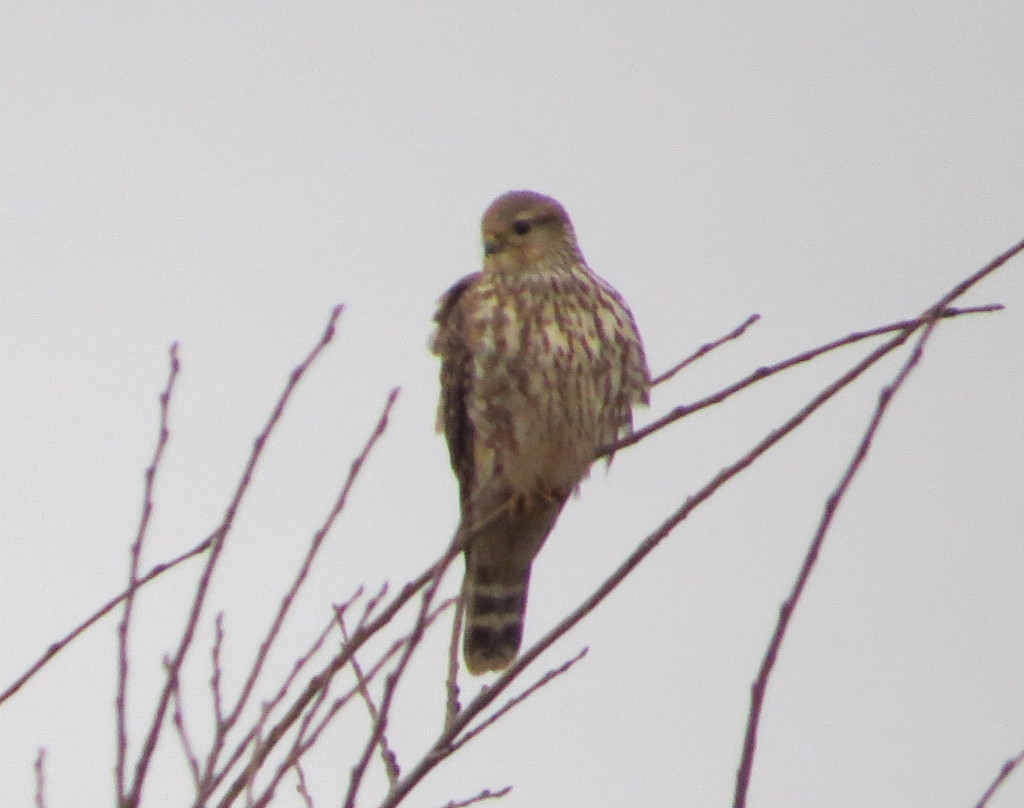
Then, just outside of Brookings, a rooster pheasant alongside the road was another good sign. We did not even see a single pheasant on the last SD run. Telling. The good vibes were quickly iced, however, once we got on site and were off to an eerily-familiar start with at least a half hour of not seeing the Kiskadee. Hopes were lifted when I visited with the homeowner at the north residence who told me he saw it that morning. He asked for my number and said he’d keep watch at his place if I wanted to go wait at the south residence. As you can see, I got that phone call and redeemed my fruitless trips to South Dakota.
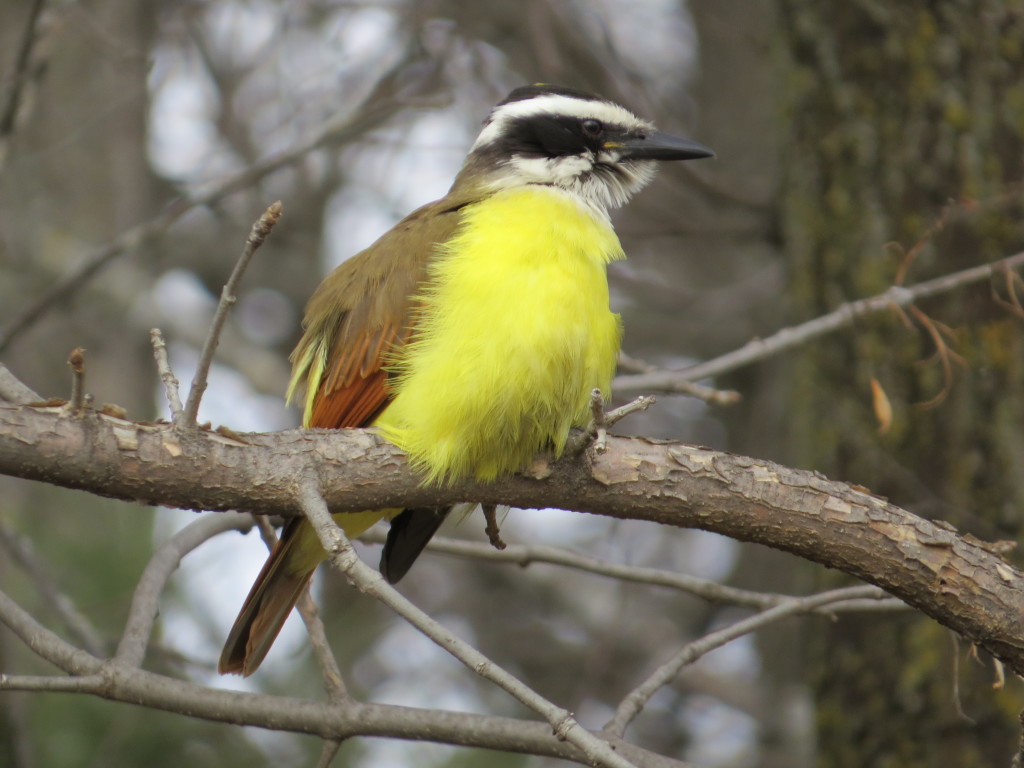
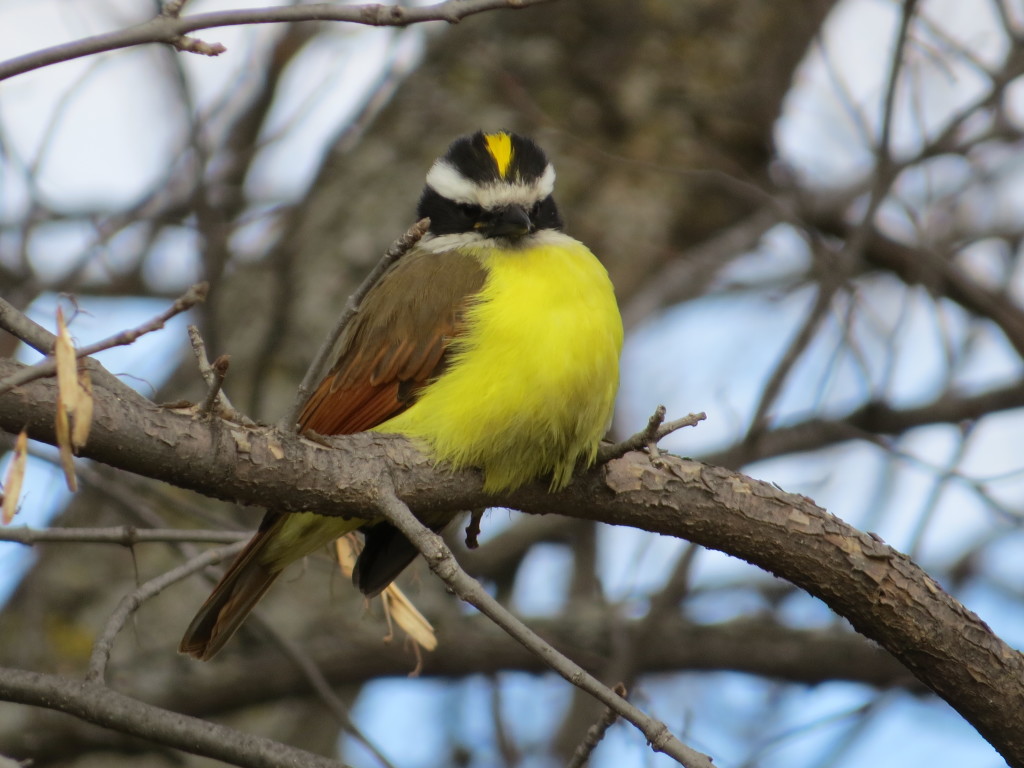 It turns out that Great Kiskadees are quite crushable, especially when they are chilly and don’t move for over 20 minutes. Either that or the diet of heavy suet and cat food has made this individual lethargic.
It turns out that Great Kiskadees are quite crushable, especially when they are chilly and don’t move for over 20 minutes. Either that or the diet of heavy suet and cat food has made this individual lethargic.
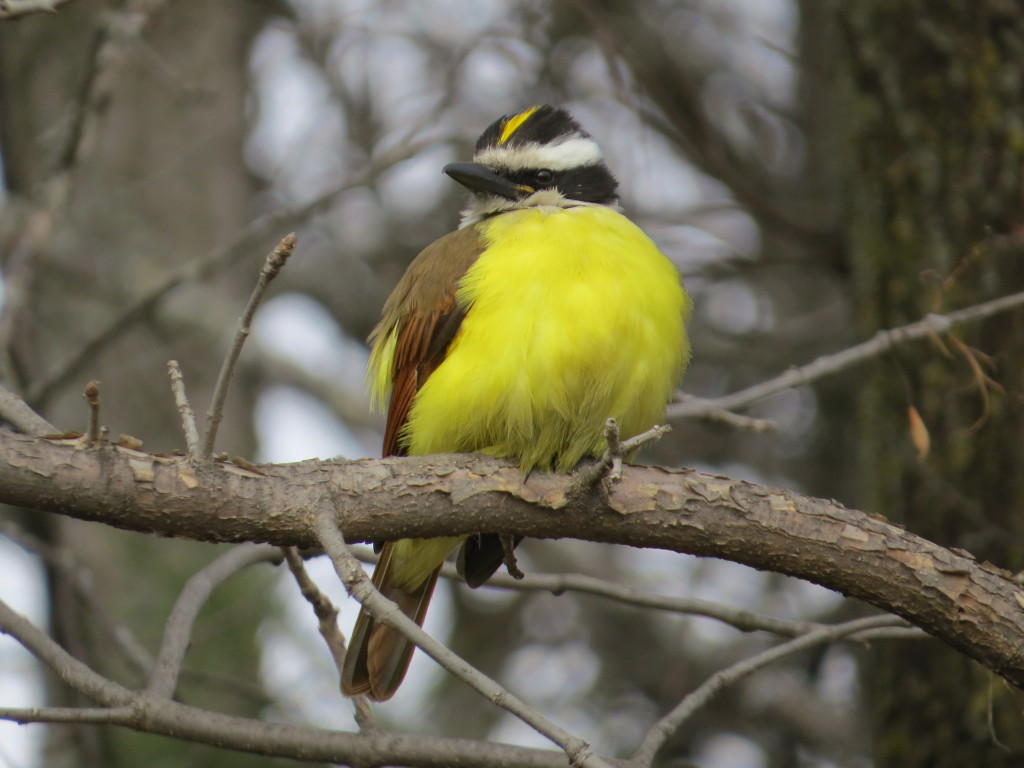
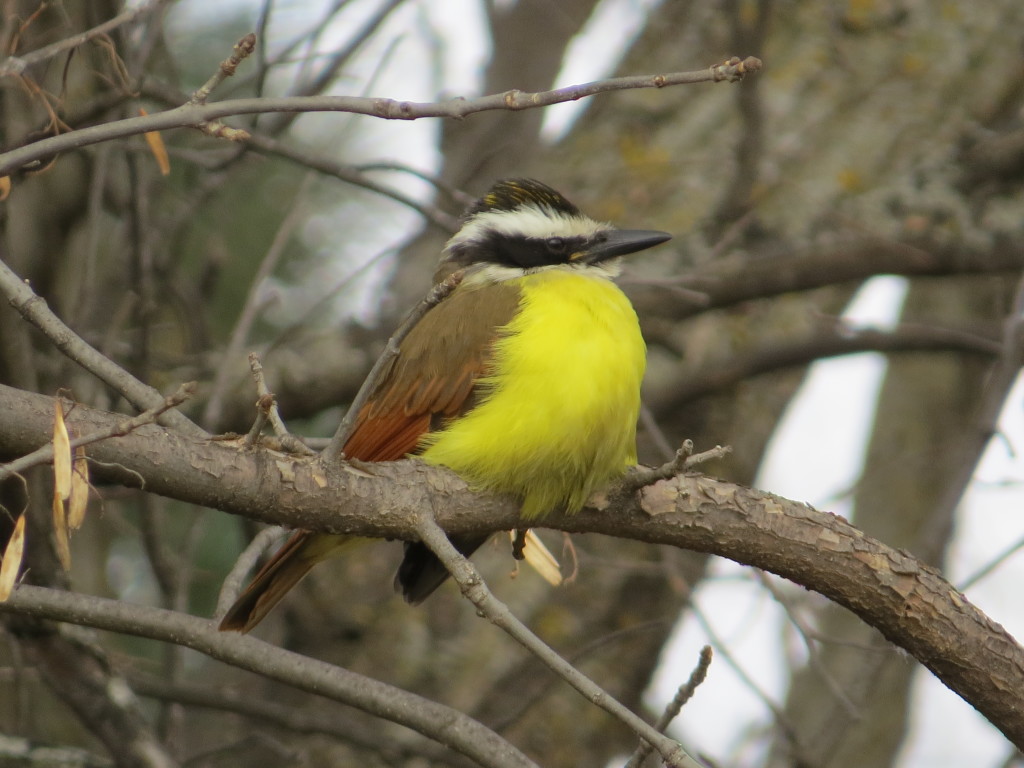 What a month it’s been with Arizona birds and Texas birds popping up in the north. I know I owe you some more AZ coverage in the next post, but first we’re going to have to take a look at my last ever triple lifer day in Minnesota. Buckle up, Larus fans.
What a month it’s been with Arizona birds and Texas birds popping up in the north. I know I owe you some more AZ coverage in the next post, but first we’re going to have to take a look at my last ever triple lifer day in Minnesota. Buckle up, Larus fans.

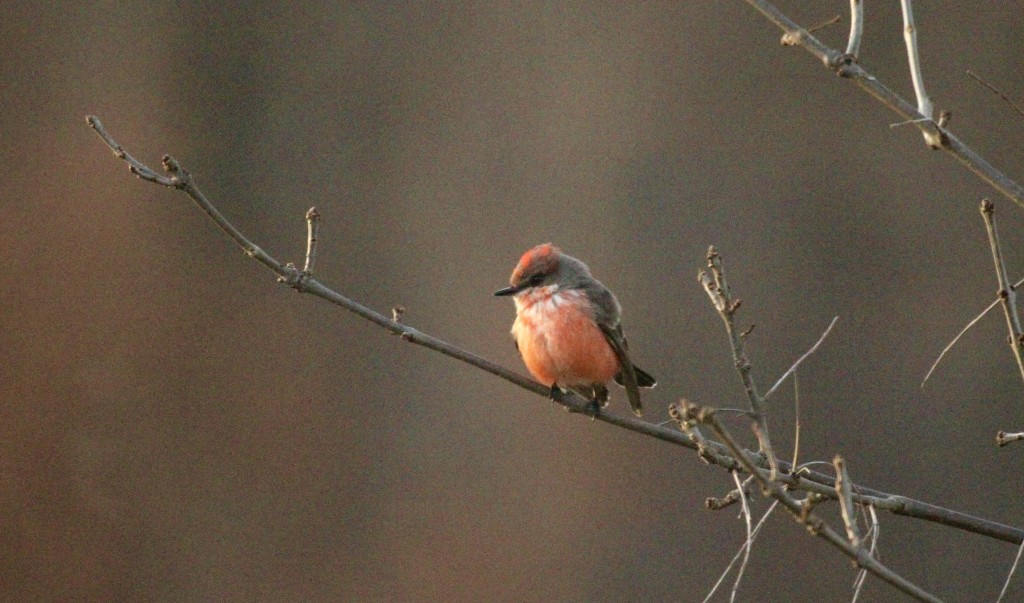
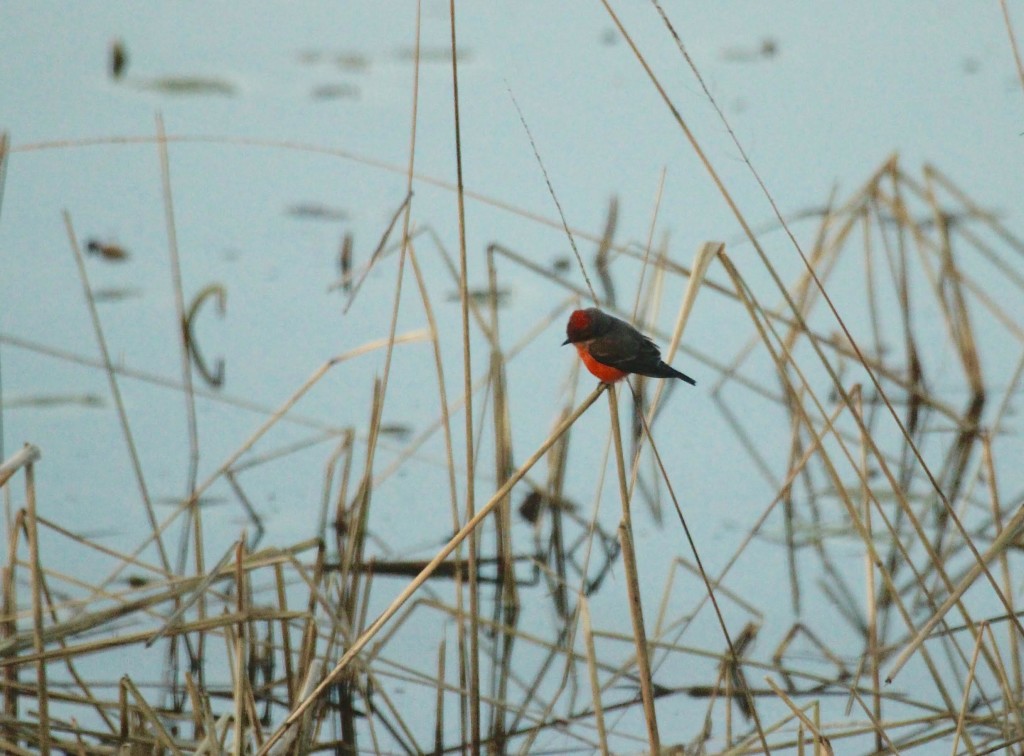
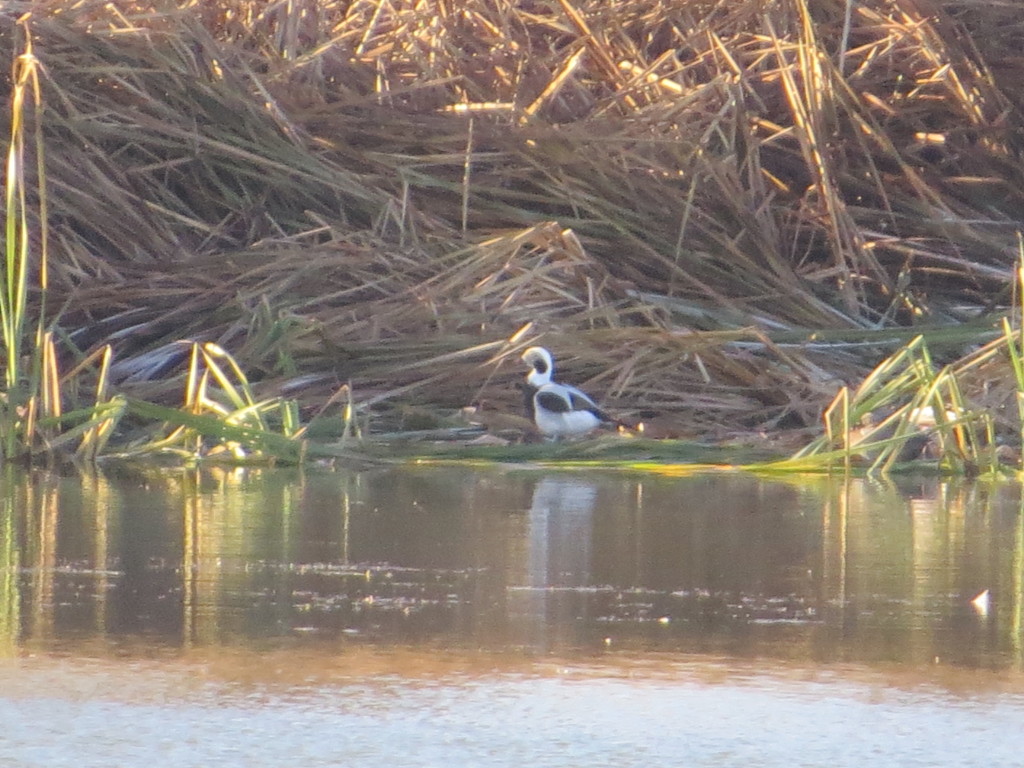 Such a striking bird. Check out this chest!
Such a striking bird. Check out this chest!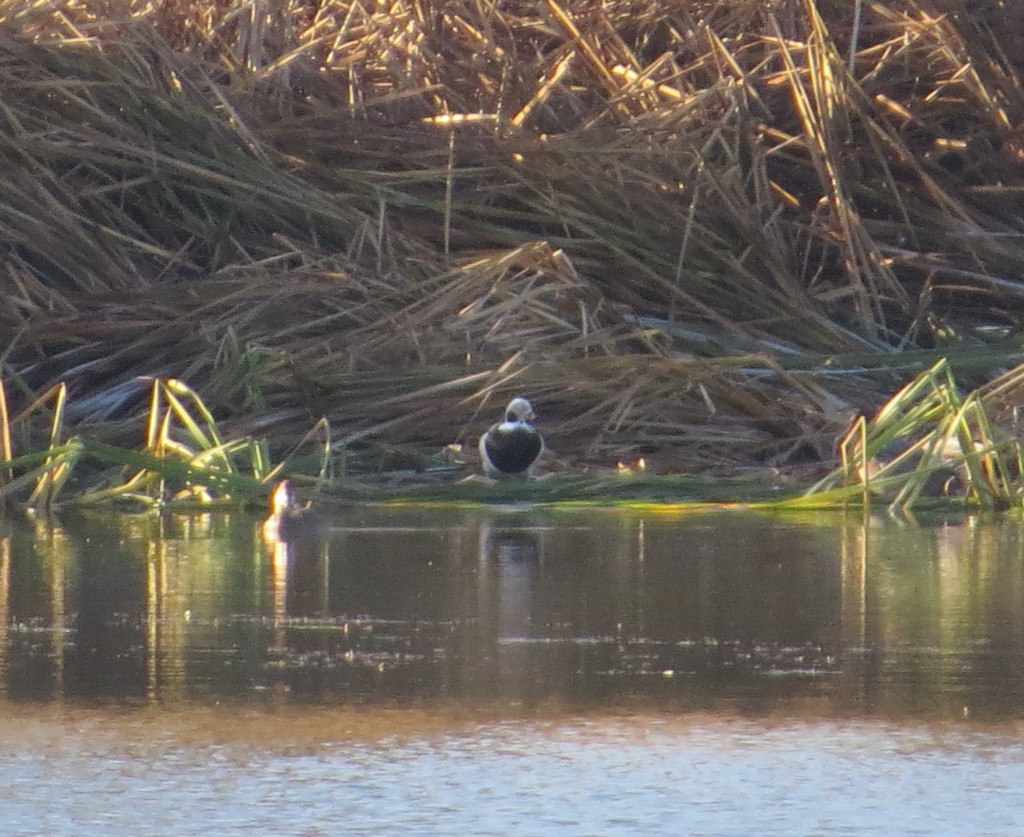
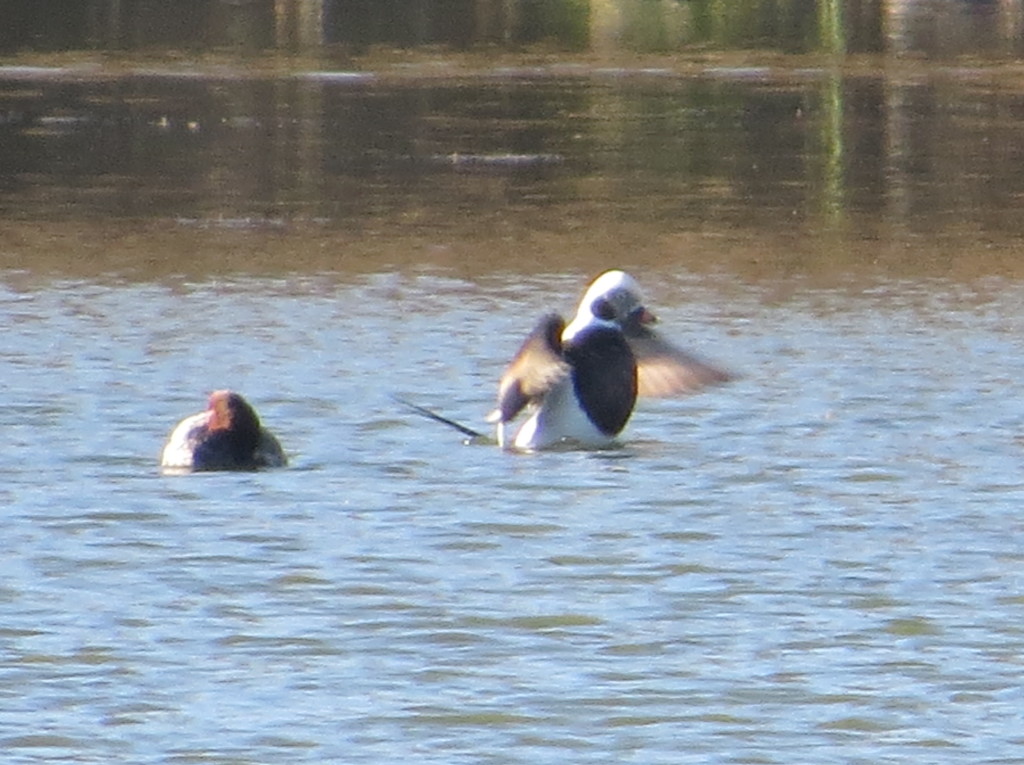 Even though it was far away, it was still such a treat to watch this handsome duck. Our lifer a couple a years ago was an immature-type bird that did not live up to its name.
Even though it was far away, it was still such a treat to watch this handsome duck. Our lifer a couple a years ago was an immature-type bird that did not live up to its name.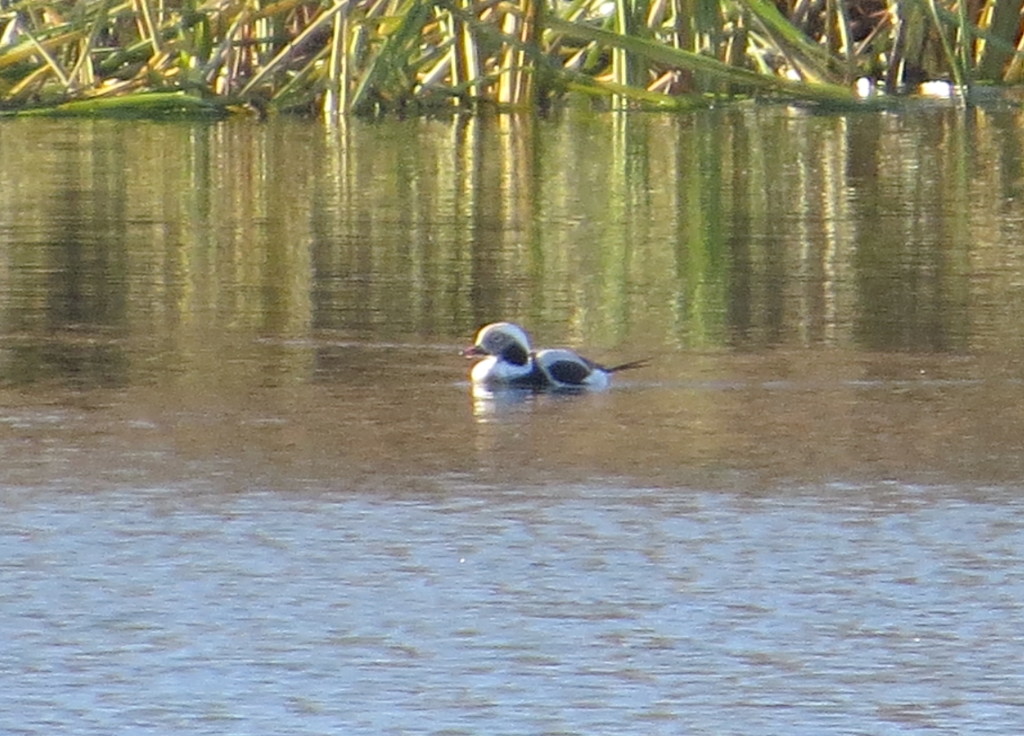
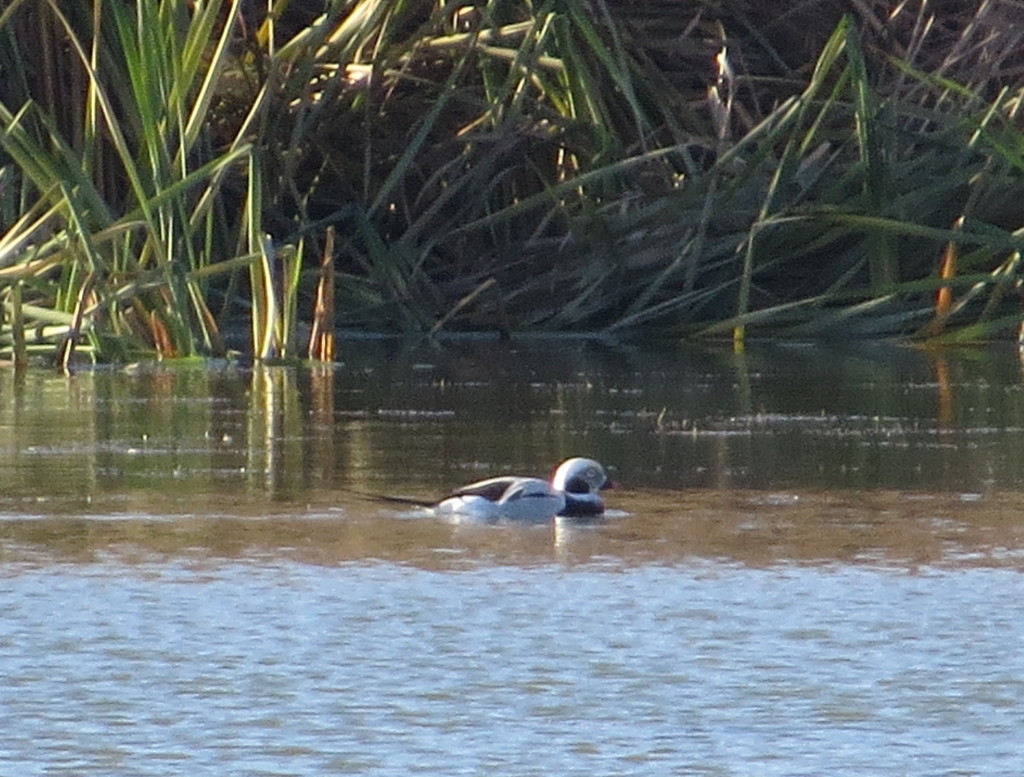 After that fun, Evan and I hit the road for the 3-hour trip home. Our second Northern Shrike of the fall was a nice bonus on our drive. Despite the memory card snafu, it was a memorable trip with Evan where we got to see some really fantastic birds for Minnesota.
After that fun, Evan and I hit the road for the 3-hour trip home. Our second Northern Shrike of the fall was a nice bonus on our drive. Despite the memory card snafu, it was a memorable trip with Evan where we got to see some really fantastic birds for Minnesota. I drove along the west shore of the lake and pulled into a boat launch to scan the waters. Right away I saw a binocular-clad gentleman loading a spotting scope into a shiny Prius–this birder could be spotted a mile away. I asked him if he saw the duck. He told me no and said he’d missed on it multiple times. Odd, I thought, as I recalled the duck being reported every single day for the better part of a week. After this exchange, he and I both headed to Orchard Lake Park on the south end of the lake where people had said was the best place from which to see the Scoter. He had the lead as I followed his car into the parking lot. Rather than parking in a stall, he faced his vehicle directly at the water. I parked, looked at the water and instantly saw a distant, giant, black-and-white blob that had Surf Scoter GISS written all over it. Before I could get my binoculars up to verify, the other birder, who never left his car, turned around after 30 seconds and drove out of the park! My desire to look at my Surf Scoter lifer was suddenly replaced by the fear that this guy might have, somehow, missed it. Was it diving when he looked? Did he not recognize this juvenile form of this species? Did he see it, get his tic, and just peel out? Even if the guy was just a lister, who doesn’t spend at least a couple minutes enjoying looking at an ocean-going Scoter in MINNESOTA? I panicked. I hesitated. Do I race after him on foot and pound on his trunk? Do I hop in my car and chase him down? You can’t save them all, I guess. Oh, well. Let’s have a look at that Surf Scoter…
I drove along the west shore of the lake and pulled into a boat launch to scan the waters. Right away I saw a binocular-clad gentleman loading a spotting scope into a shiny Prius–this birder could be spotted a mile away. I asked him if he saw the duck. He told me no and said he’d missed on it multiple times. Odd, I thought, as I recalled the duck being reported every single day for the better part of a week. After this exchange, he and I both headed to Orchard Lake Park on the south end of the lake where people had said was the best place from which to see the Scoter. He had the lead as I followed his car into the parking lot. Rather than parking in a stall, he faced his vehicle directly at the water. I parked, looked at the water and instantly saw a distant, giant, black-and-white blob that had Surf Scoter GISS written all over it. Before I could get my binoculars up to verify, the other birder, who never left his car, turned around after 30 seconds and drove out of the park! My desire to look at my Surf Scoter lifer was suddenly replaced by the fear that this guy might have, somehow, missed it. Was it diving when he looked? Did he not recognize this juvenile form of this species? Did he see it, get his tic, and just peel out? Even if the guy was just a lister, who doesn’t spend at least a couple minutes enjoying looking at an ocean-going Scoter in MINNESOTA? I panicked. I hesitated. Do I race after him on foot and pound on his trunk? Do I hop in my car and chase him down? You can’t save them all, I guess. Oh, well. Let’s have a look at that Surf Scoter…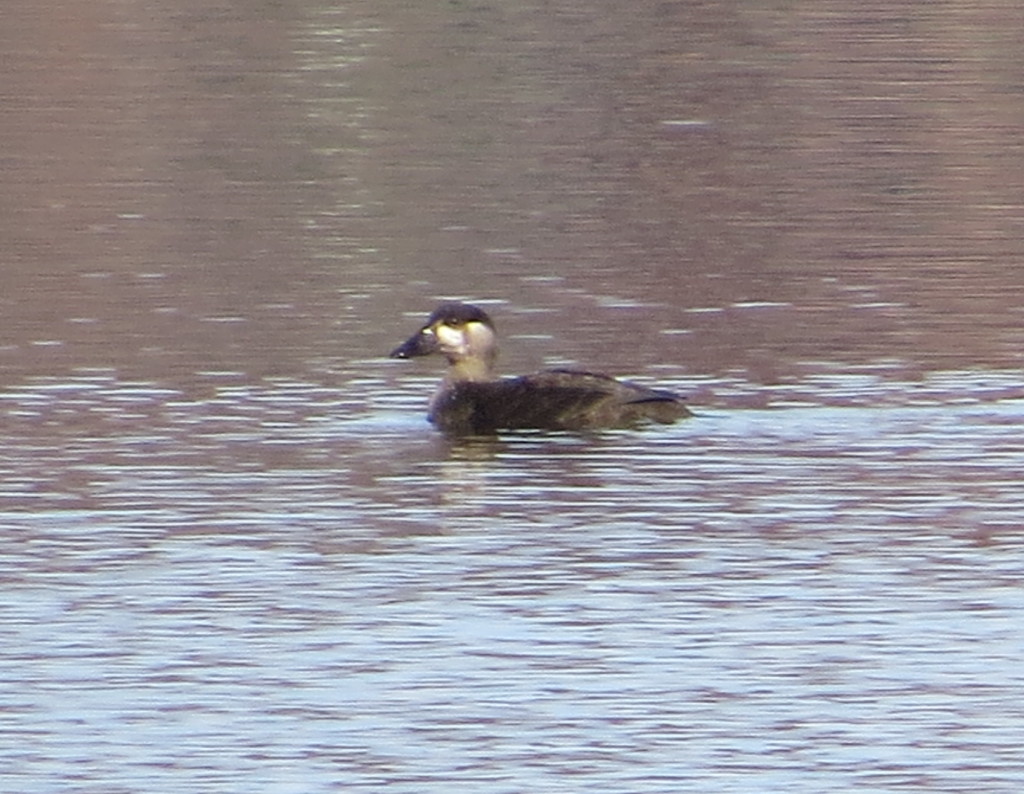 This is now my fifth species of sea duck in Minnesota with White-winged Scoter, Harlequin Duck, Common Eider, and Long-tailed Duck making up the others. I kind of prefer my sea ducks on the turbulent, cold waters of Lake Superior on a gray day. That kind of backdrop adds to the mystique and allure of sea ducks. Seeing one on a placid metro lake reflecting lingering fall colors on a 72° day is just kind of so-so.
This is now my fifth species of sea duck in Minnesota with White-winged Scoter, Harlequin Duck, Common Eider, and Long-tailed Duck making up the others. I kind of prefer my sea ducks on the turbulent, cold waters of Lake Superior on a gray day. That kind of backdrop adds to the mystique and allure of sea ducks. Seeing one on a placid metro lake reflecting lingering fall colors on a 72° day is just kind of so-so.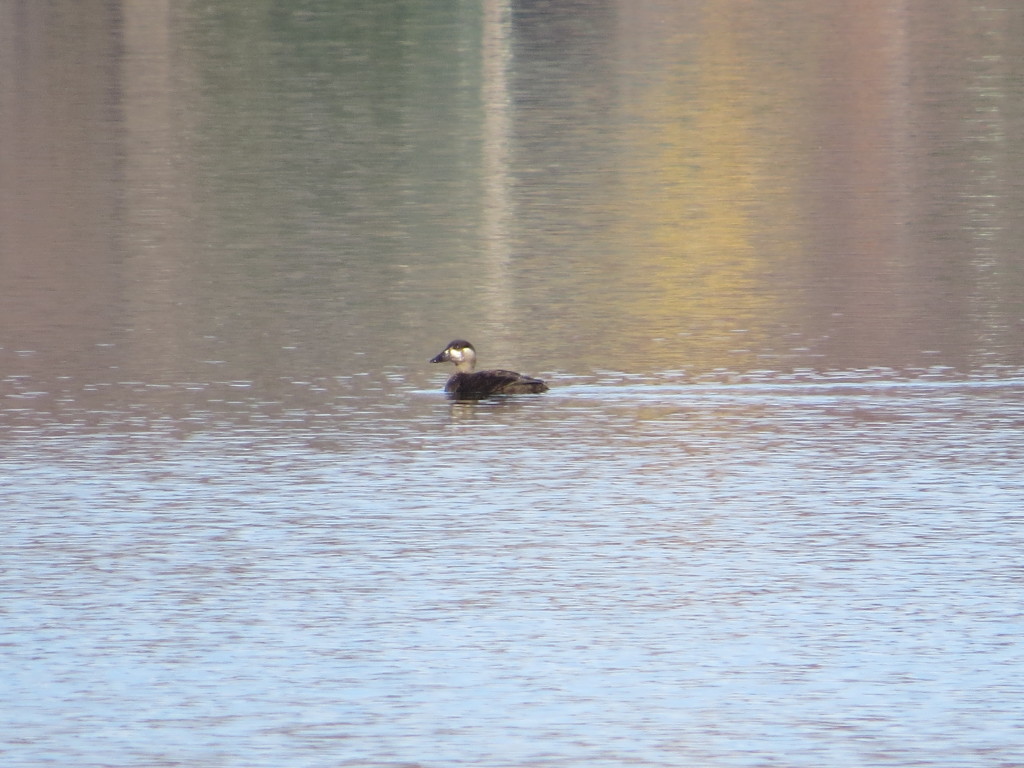 But even still. It’s cool. I mean, it’s a Scoter.
But even still. It’s cool. I mean, it’s a Scoter.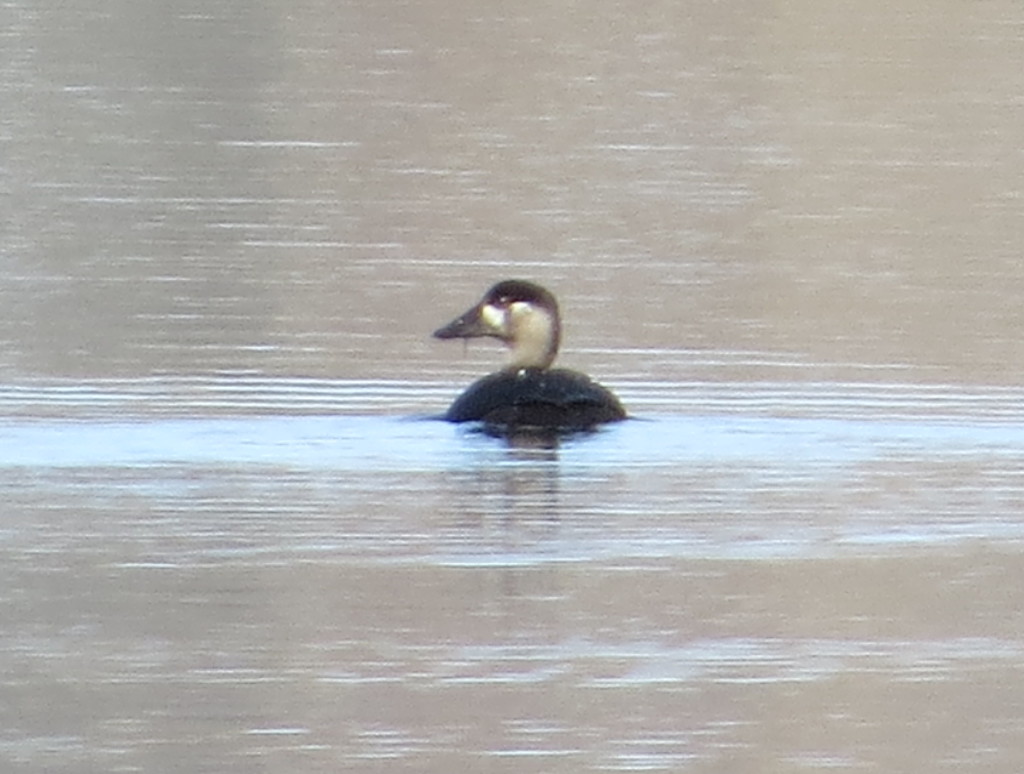
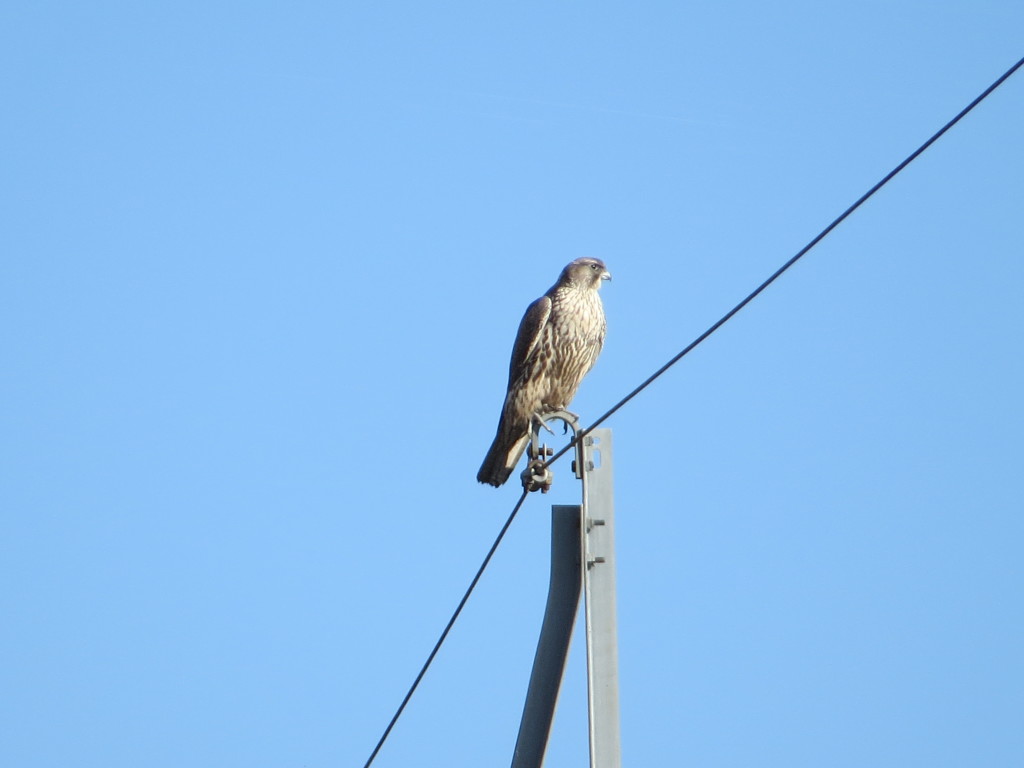
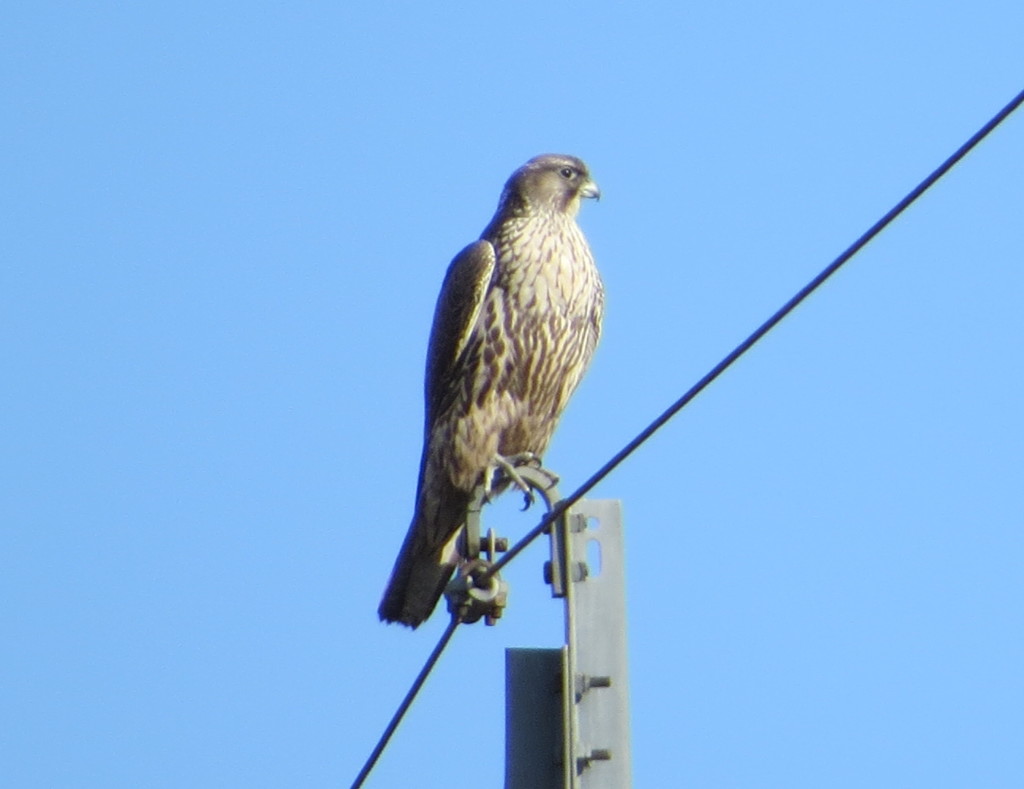
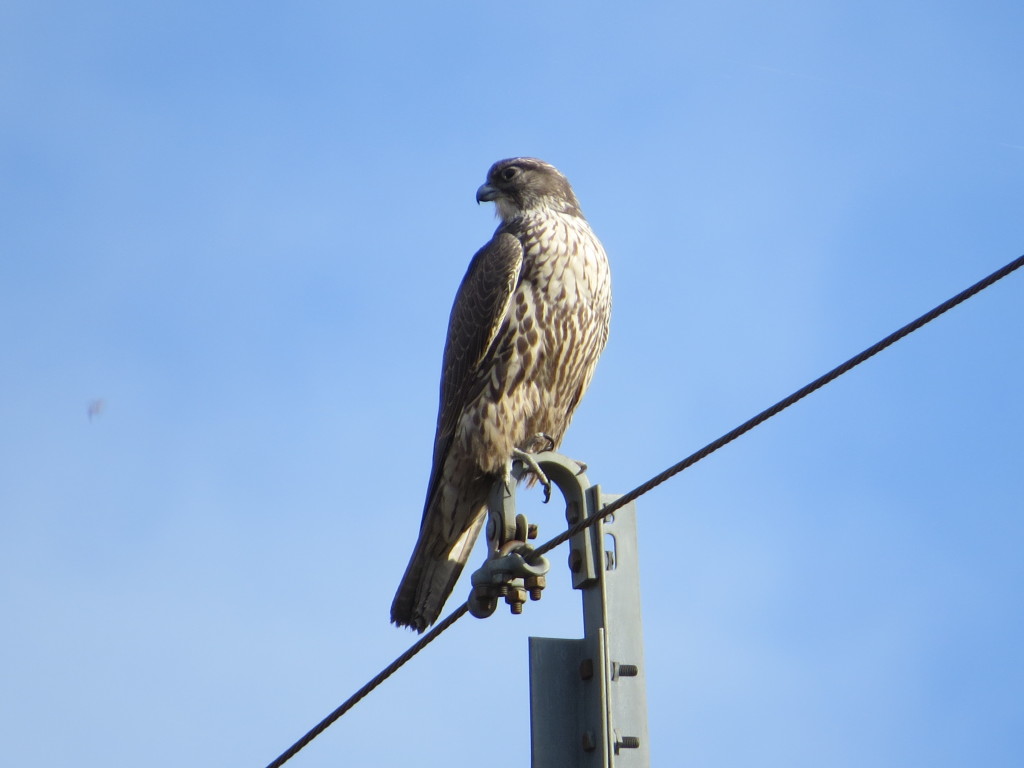
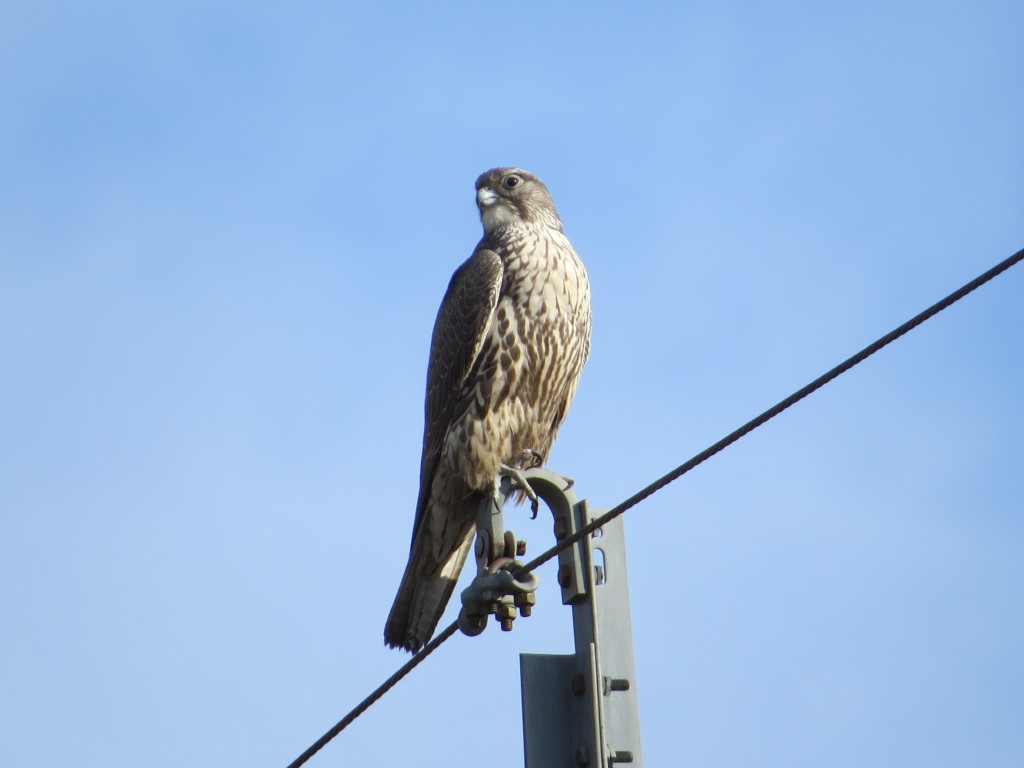
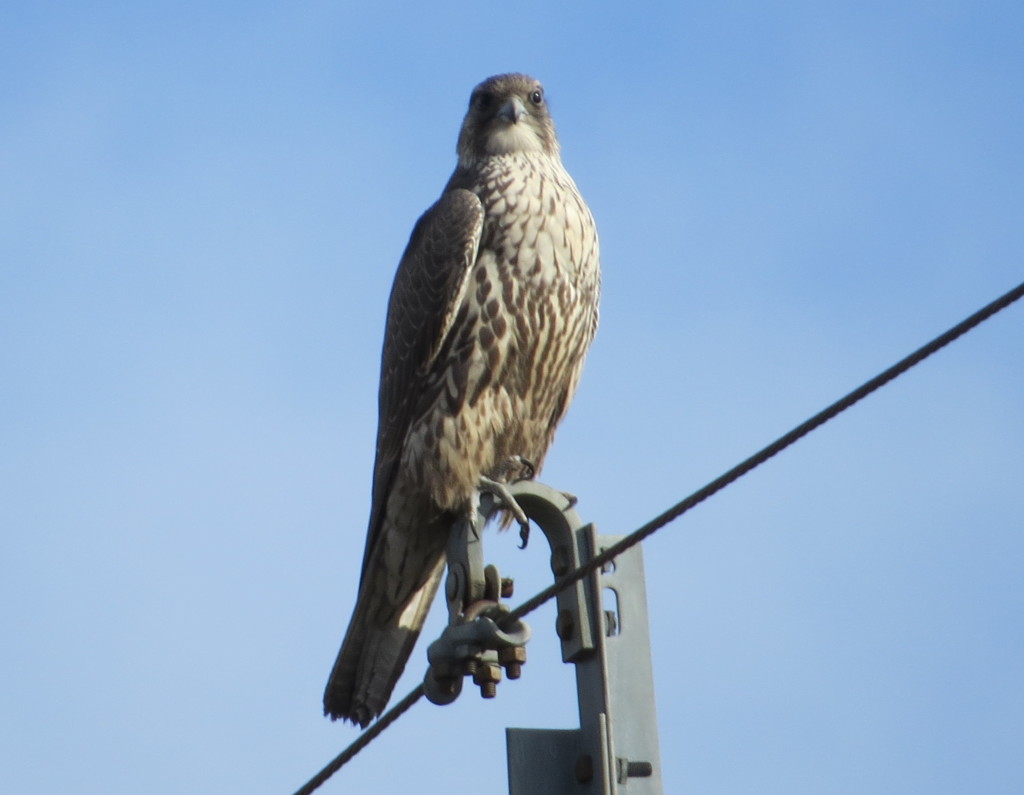 I still can’t believe I saw this bird; the adrenaline is still pumping. I thought it would be another 10 years at least before I’d get this arctic visitor on my Minnesota list (I got my lifer in WI last winter). Then I see a Gyrfalcon in my own county…and I never even knew it. I was caught off guard and completely unprepared for encountering such a rarity. It just goes to show that one can never study enough in this hobby and that even the most boring, familiar back roads can hold the monumental. So thanks, Bob, for chasing me down and pounding on my trunk.
I still can’t believe I saw this bird; the adrenaline is still pumping. I thought it would be another 10 years at least before I’d get this arctic visitor on my Minnesota list (I got my lifer in WI last winter). Then I see a Gyrfalcon in my own county…and I never even knew it. I was caught off guard and completely unprepared for encountering such a rarity. It just goes to show that one can never study enough in this hobby and that even the most boring, familiar back roads can hold the monumental. So thanks, Bob, for chasing me down and pounding on my trunk.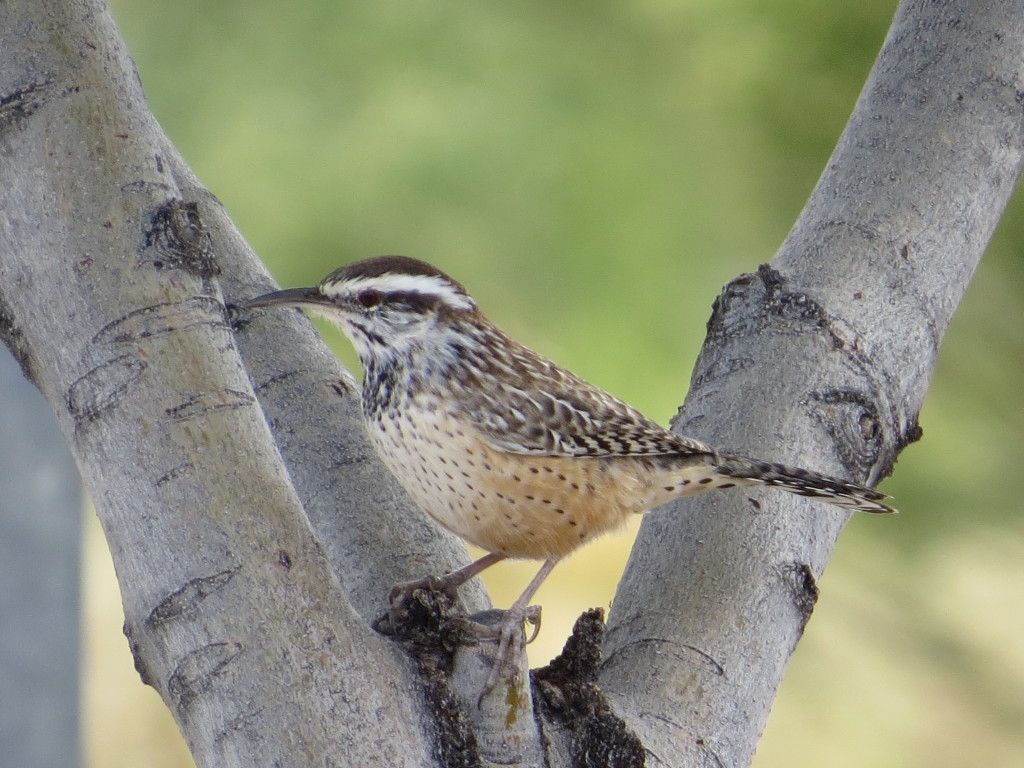
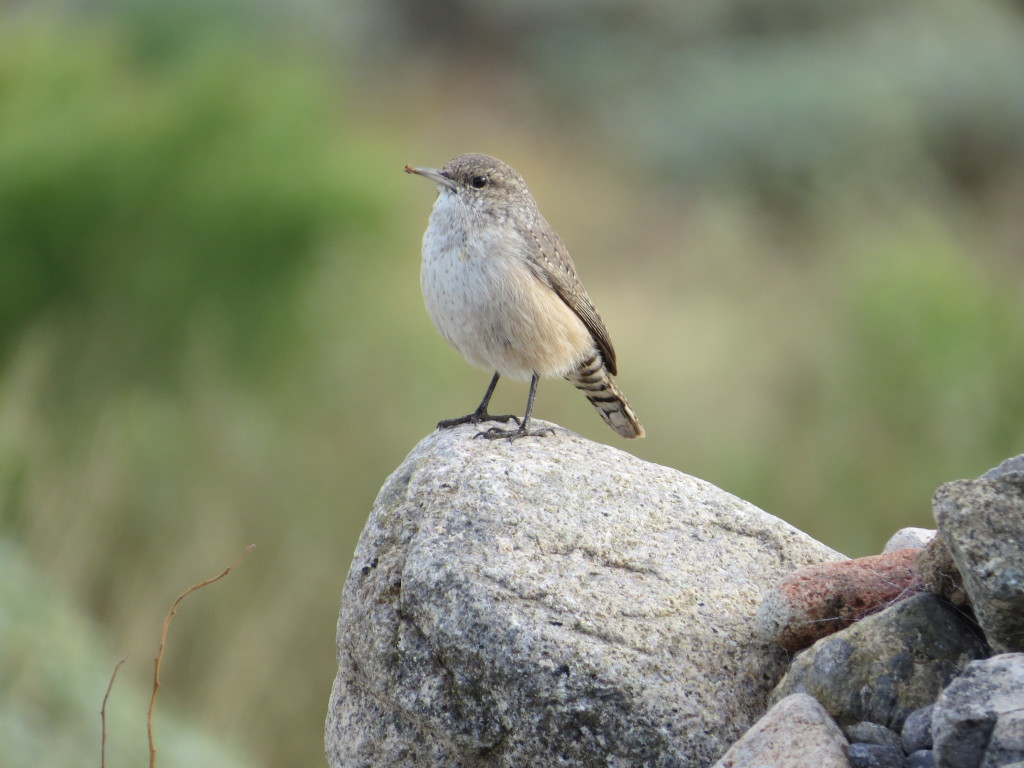 I really, really like the pot-bellied appearance of this bird. This may be my favorite photo from the trip. And is it just me, or does ROWR bear an uncanny resemblance to our 27th President?
I really, really like the pot-bellied appearance of this bird. This may be my favorite photo from the trip. And is it just me, or does ROWR bear an uncanny resemblance to our 27th President?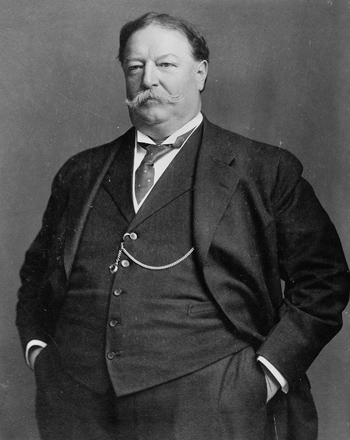
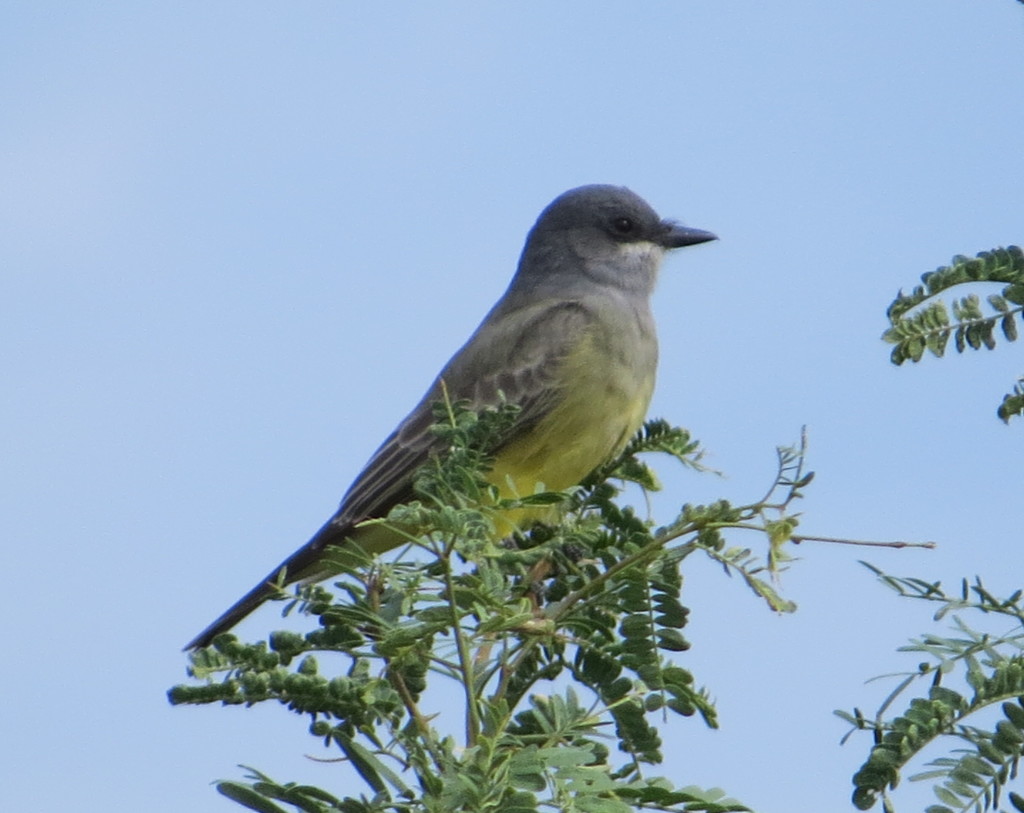
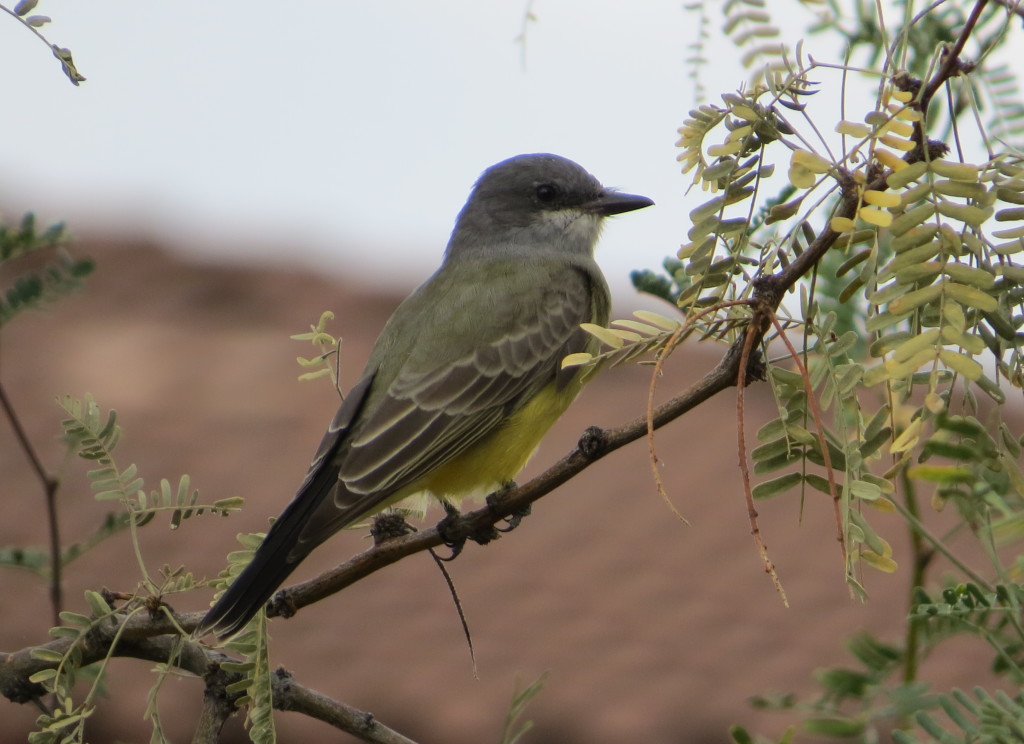 High on two completely unexpected lifers, I continued to scope out the fun birds around the hotel, not the least of which were numerous Lark Sparrows. I have not seen enough Lark Sparrows yet.
High on two completely unexpected lifers, I continued to scope out the fun birds around the hotel, not the least of which were numerous Lark Sparrows. I have not seen enough Lark Sparrows yet.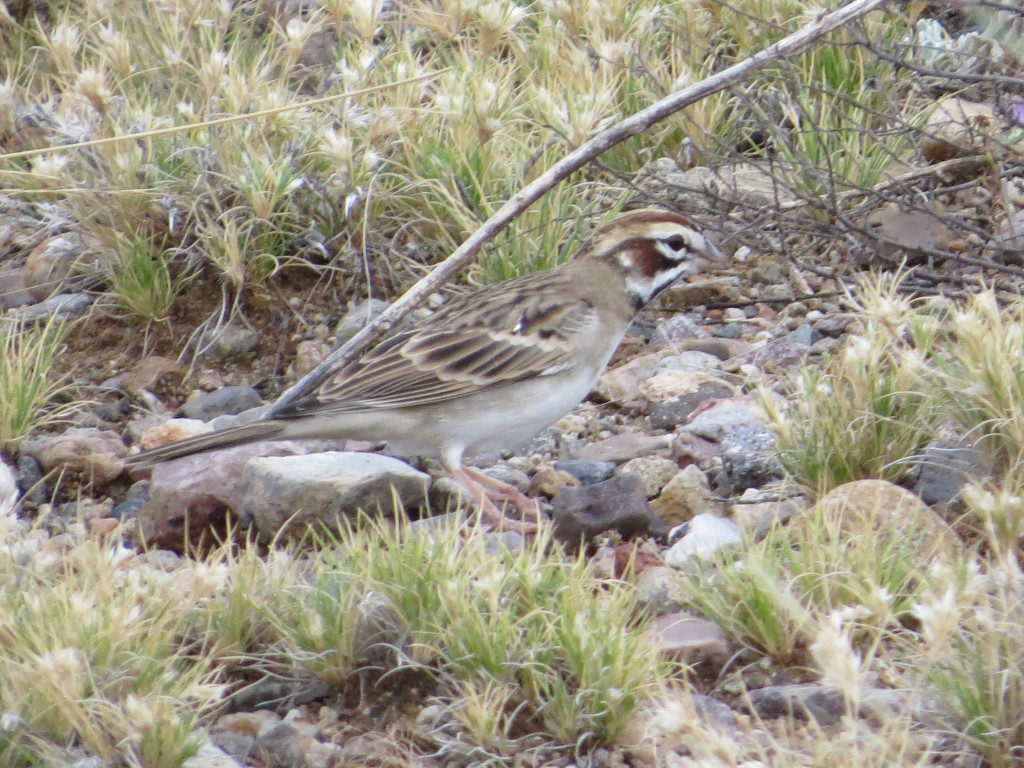 What I have seen plenty of in recent years are Say’s Phoebes, and I already have plenty of photos to prove it. But these birds just know how to pose…
What I have seen plenty of in recent years are Say’s Phoebes, and I already have plenty of photos to prove it. But these birds just know how to pose…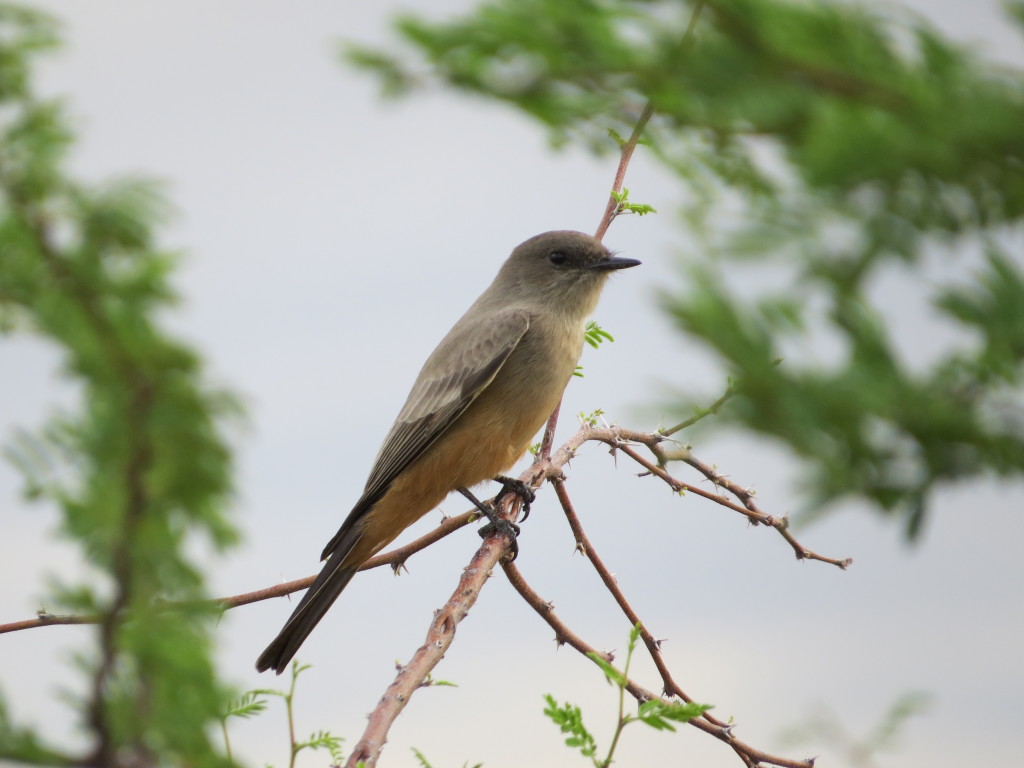 It was also fun to see a prickly-looking Curve-billed Thrasher. I’m glad they didn’t choose him for state bird.
It was also fun to see a prickly-looking Curve-billed Thrasher. I’m glad they didn’t choose him for state bird.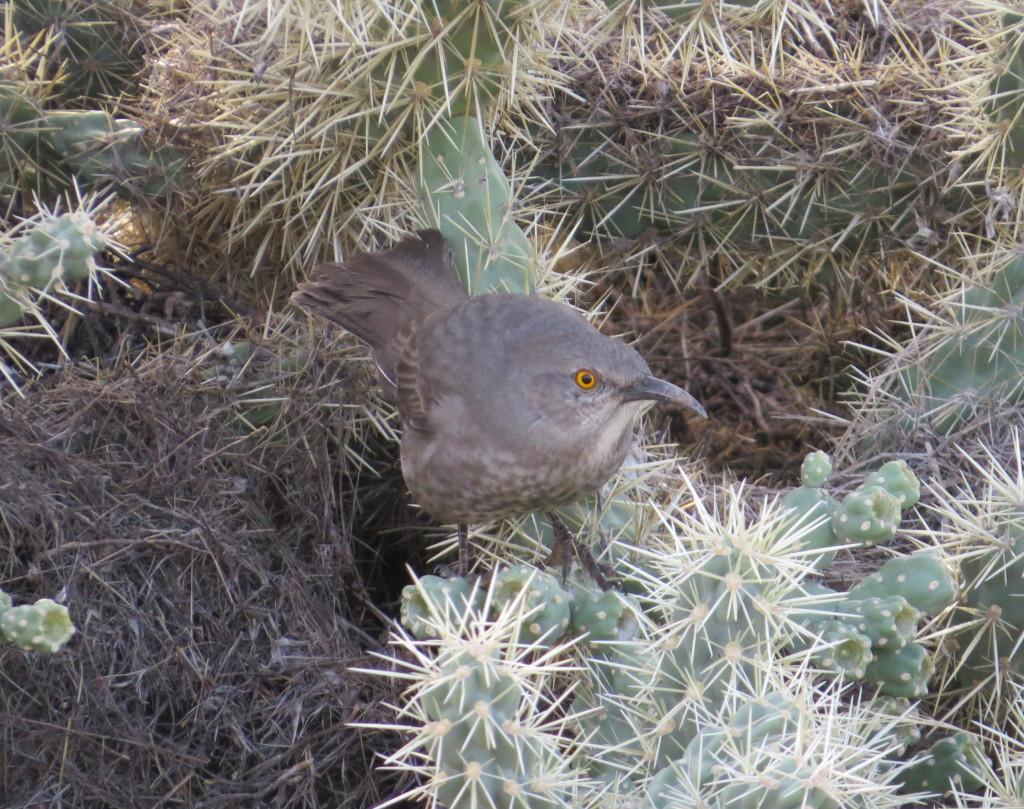
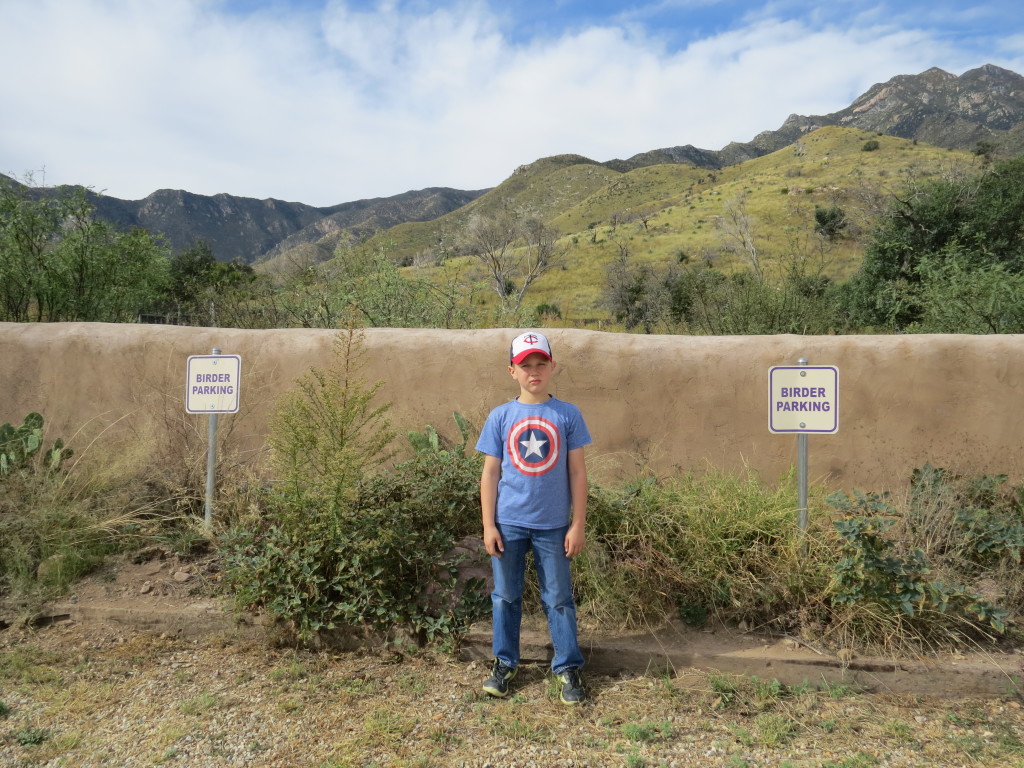
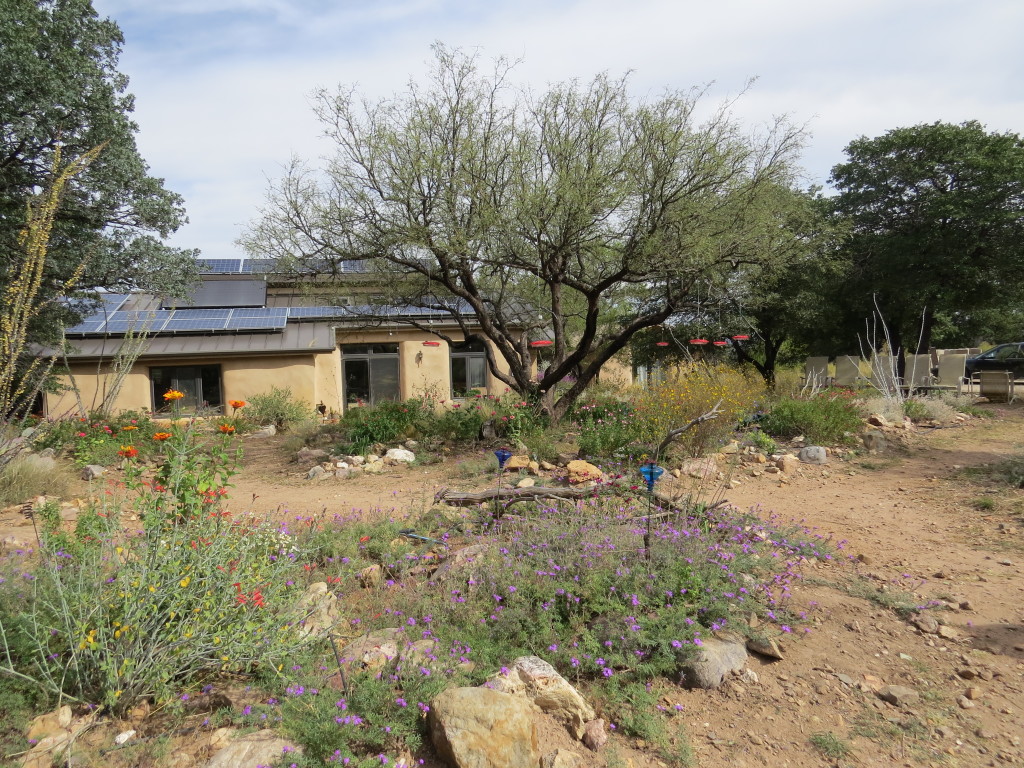 We got some great views of some fun birds while we rested from our recent hike in Hunter Canyon. It was nice to finally see a much nicer Canyon Towee than the haggard one I saw in Florida Canyon last spring. This bird was a lifer for Evan.
We got some great views of some fun birds while we rested from our recent hike in Hunter Canyon. It was nice to finally see a much nicer Canyon Towee than the haggard one I saw in Florida Canyon last spring. This bird was a lifer for Evan.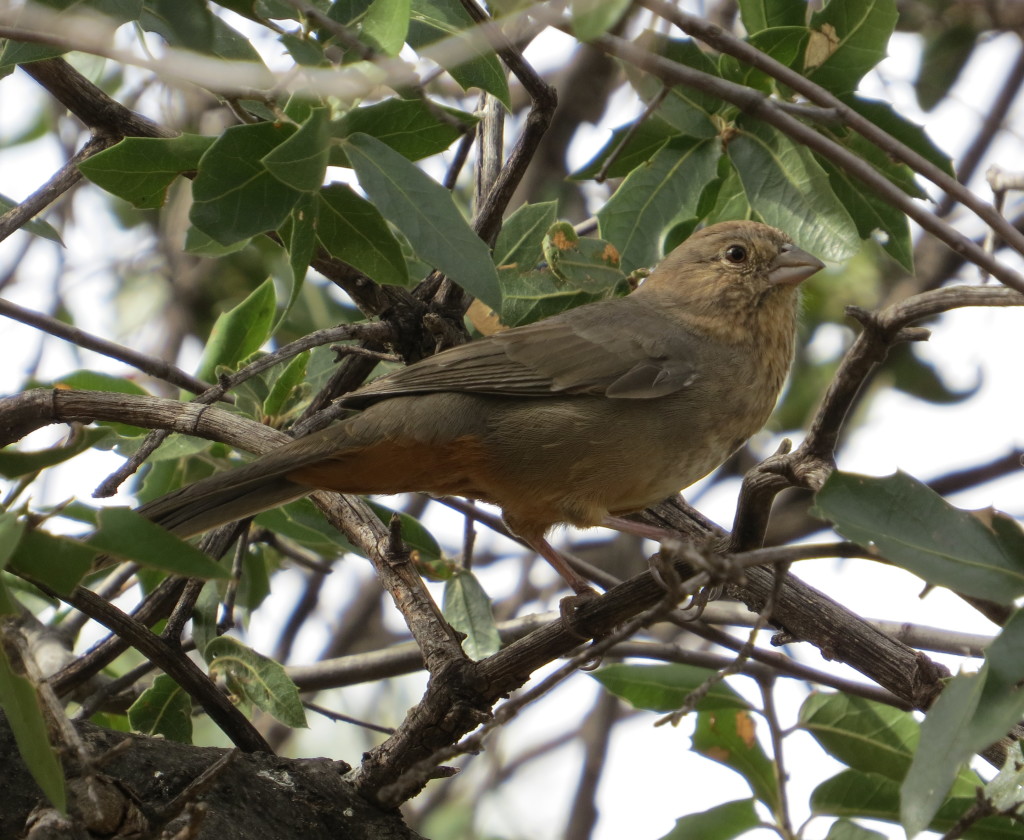 We also got to see another Scott’s Oriole (female), but this one did not show itself well either.
We also got to see another Scott’s Oriole (female), but this one did not show itself well either.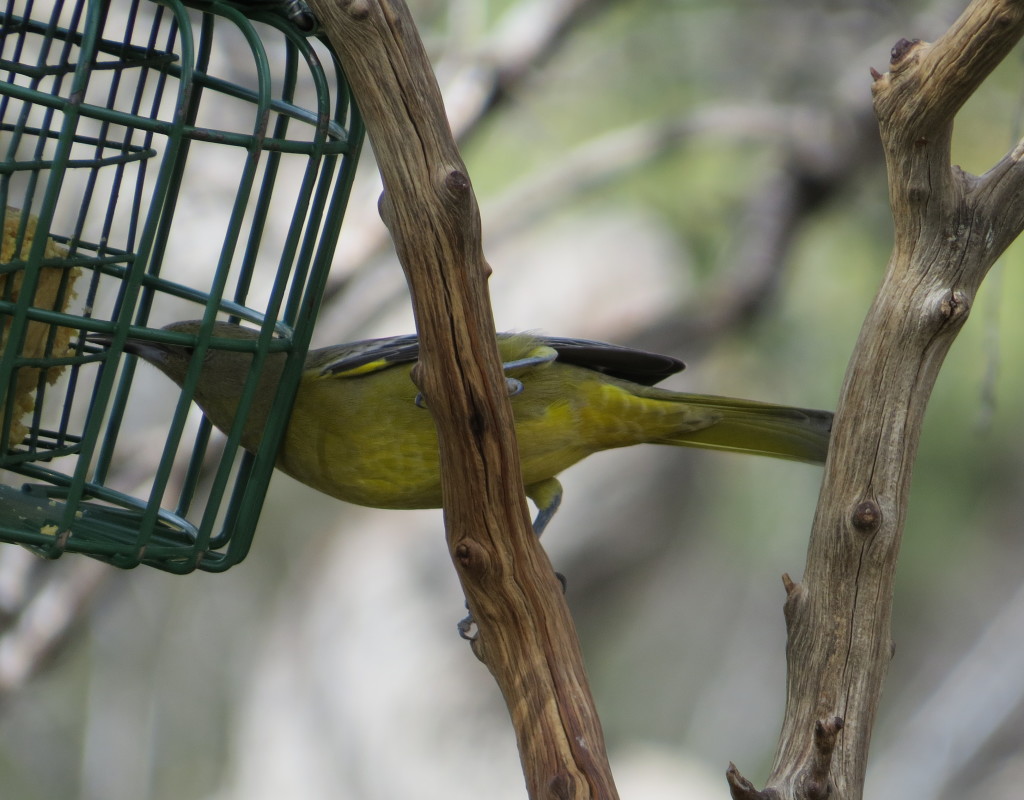 Seeing a lifer Dark-eyed Junco sub-species, like this Gray-headed variety, is always fun.
Seeing a lifer Dark-eyed Junco sub-species, like this Gray-headed variety, is always fun.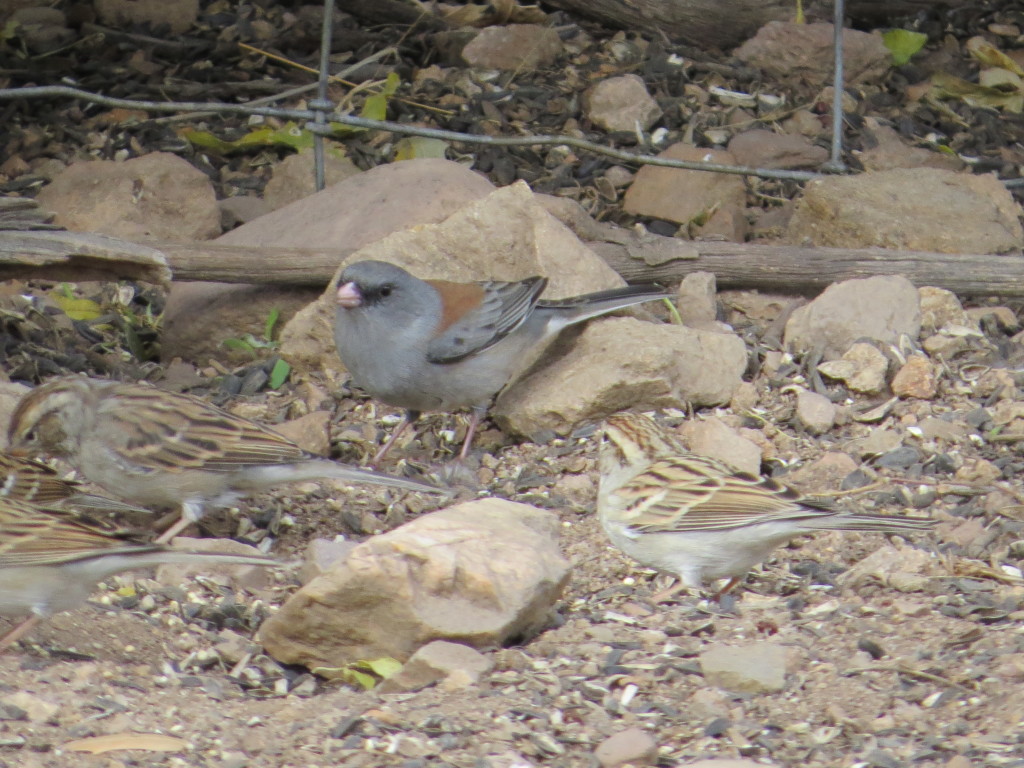 Acorn Woodpeckers were a common sight at all our stops in the Huachucas. At least at Mary Jo’s feeders, you can get a good photo while sitting down–a great combo.
Acorn Woodpeckers were a common sight at all our stops in the Huachucas. At least at Mary Jo’s feeders, you can get a good photo while sitting down–a great combo.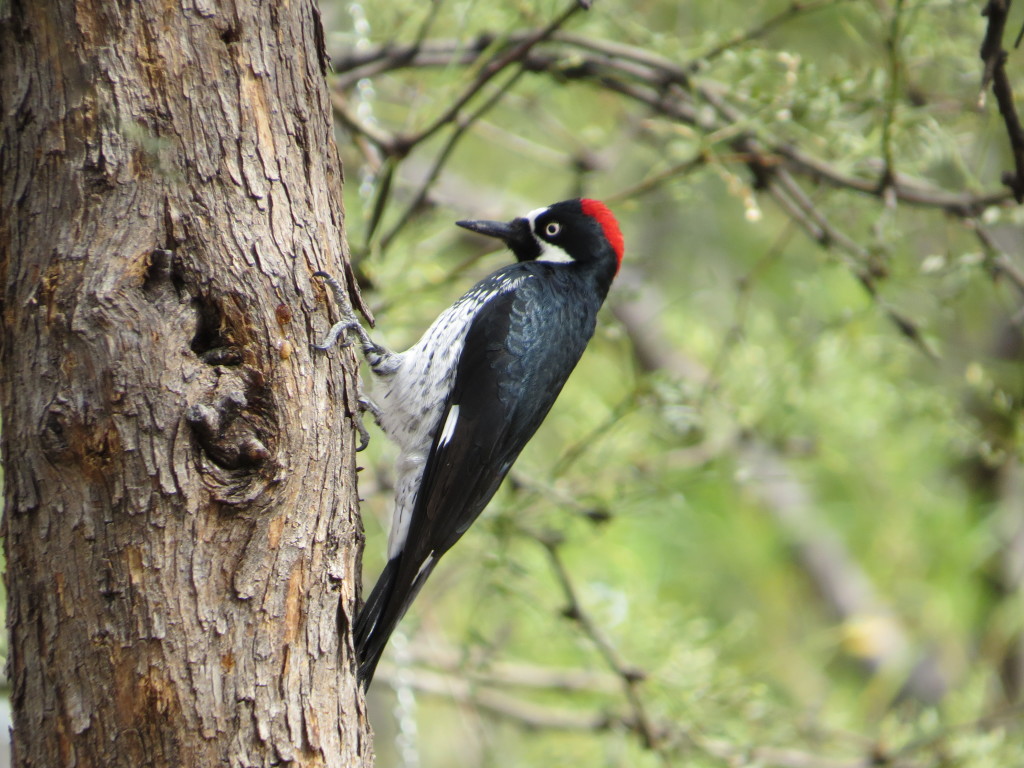
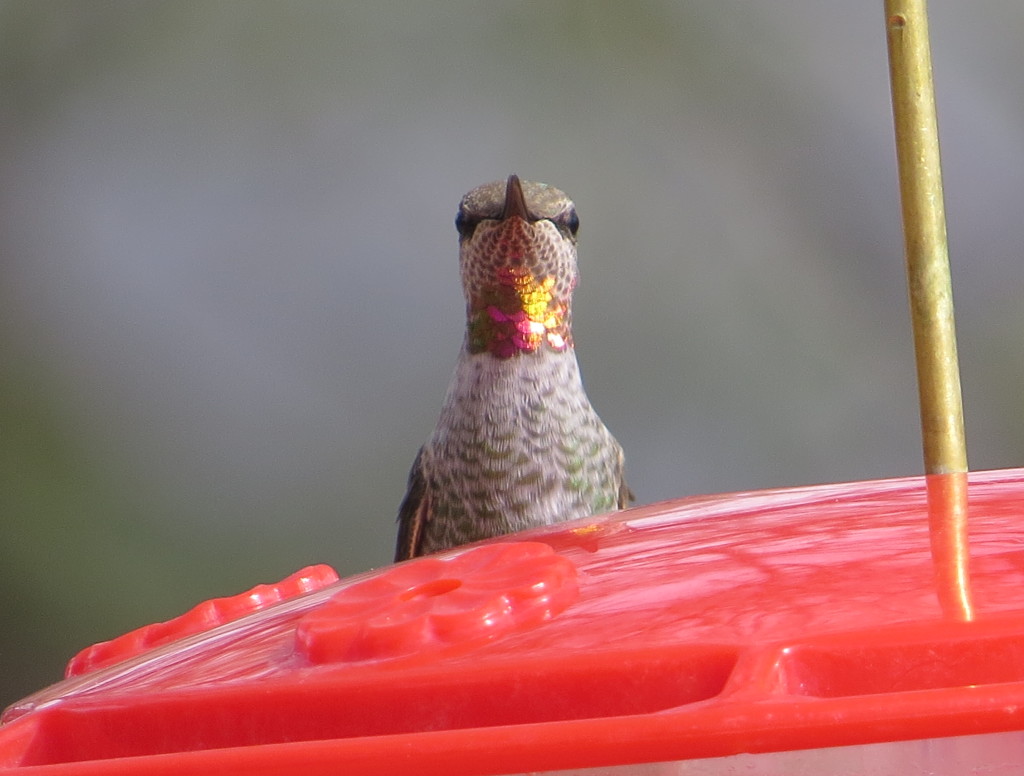 Evan also got his Magnificent Hummingbird lifer with the help of owner Mary Jo who seems to constantly monitor the bird activity in her yard. Tommy and Gordon were watching a different set of Hummingbird feeders and had seen one of the reported Lucifer Hummingbirds. So Evan and I joined them and watched those feeders for a short time to see if we could get this rare Hummer too. That said, Miller Canyon was beckoning, both for what it held and for the short amount of time we had left to bird. Thankfully the Lucifer was understanding and showed up in short order. Note the thick, decurved bill.
Evan also got his Magnificent Hummingbird lifer with the help of owner Mary Jo who seems to constantly monitor the bird activity in her yard. Tommy and Gordon were watching a different set of Hummingbird feeders and had seen one of the reported Lucifer Hummingbirds. So Evan and I joined them and watched those feeders for a short time to see if we could get this rare Hummer too. That said, Miller Canyon was beckoning, both for what it held and for the short amount of time we had left to bird. Thankfully the Lucifer was understanding and showed up in short order. Note the thick, decurved bill.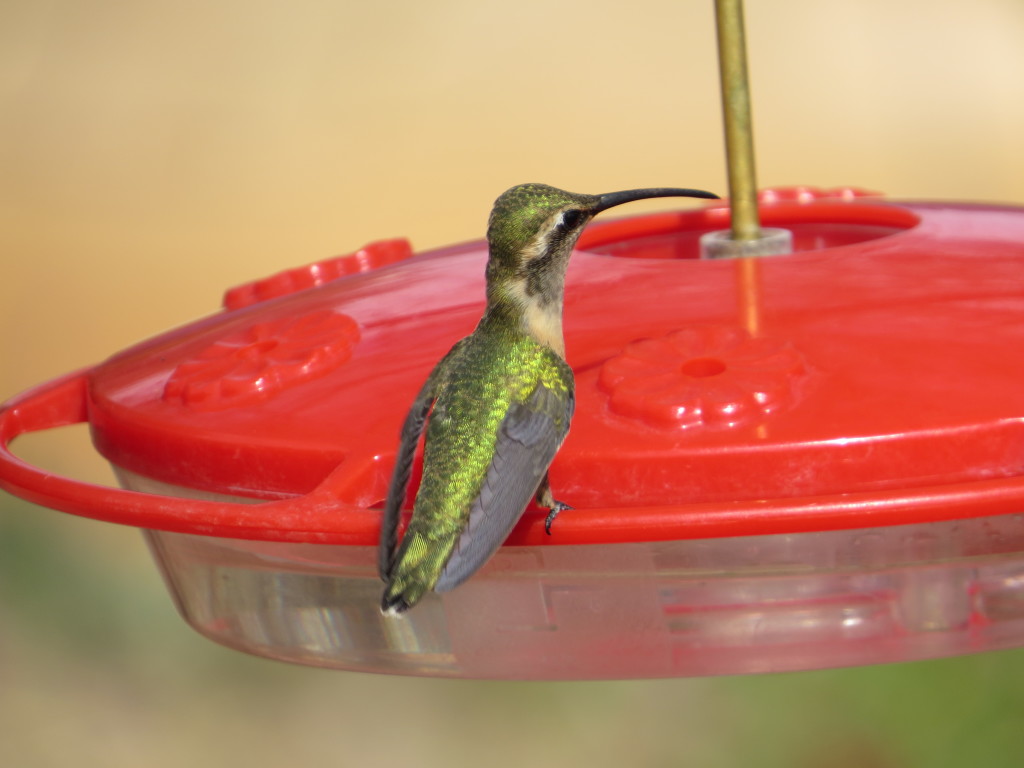
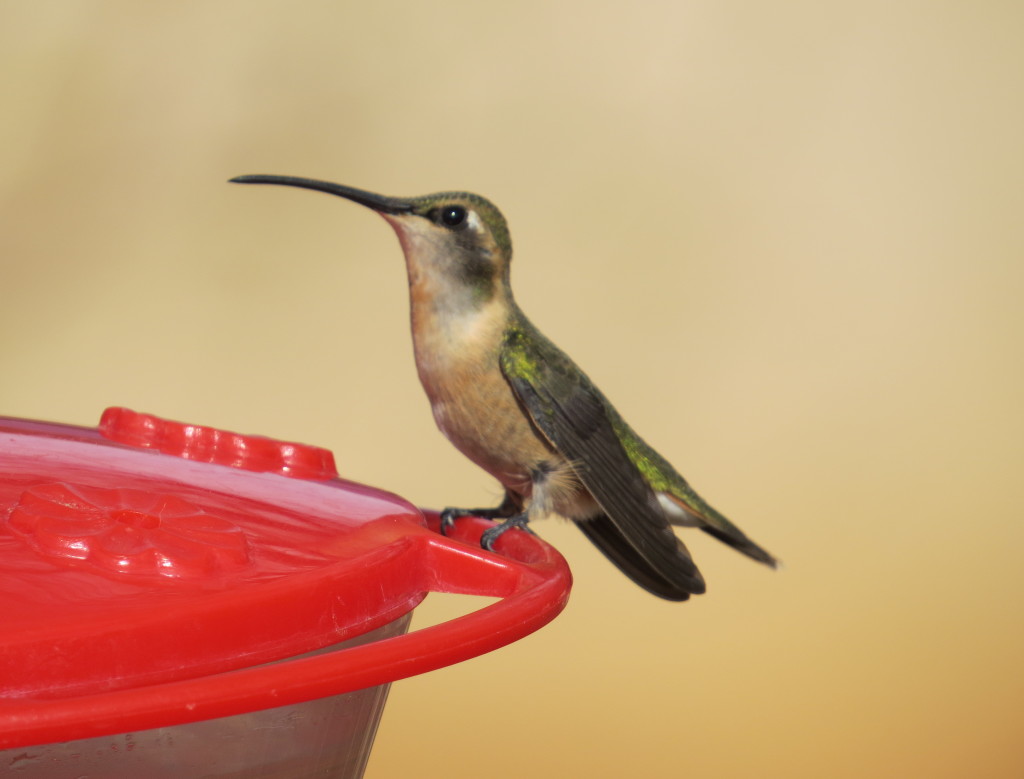 The rarity of this bird was really cool even if the plain looks of this juvenile bird were not impressive. I regretfully later found out that an adult male Lucifer had been visiting these feeders on the very day we were there. Doh!
The rarity of this bird was really cool even if the plain looks of this juvenile bird were not impressive. I regretfully later found out that an adult male Lucifer had been visiting these feeders on the very day we were there. Doh!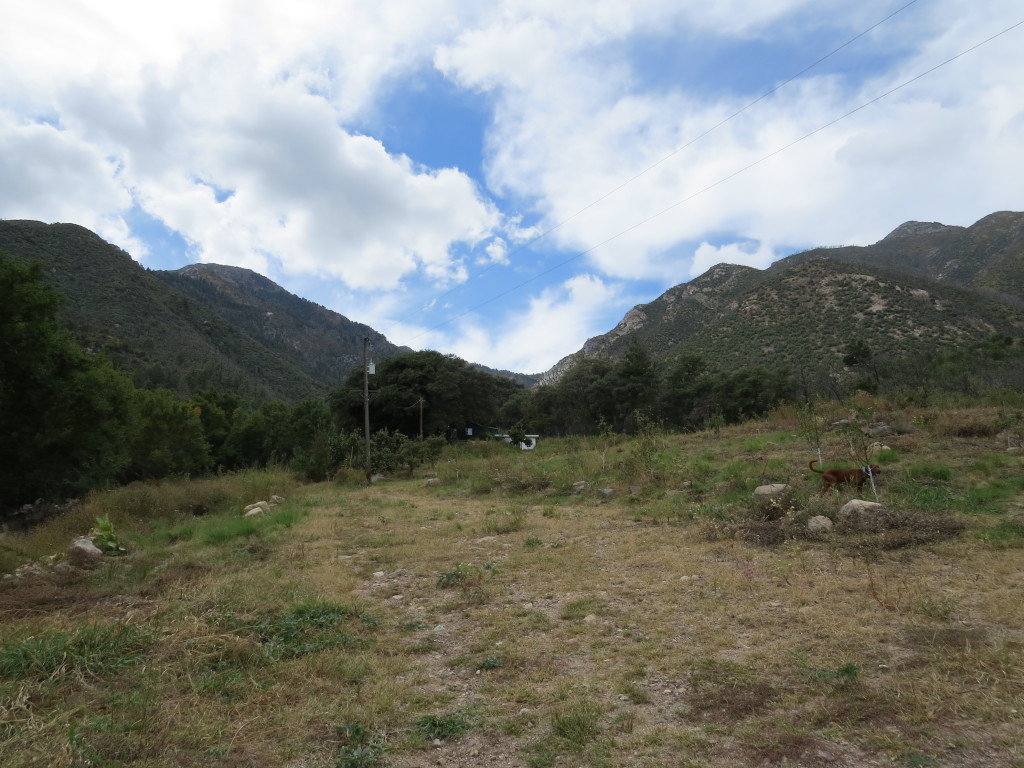
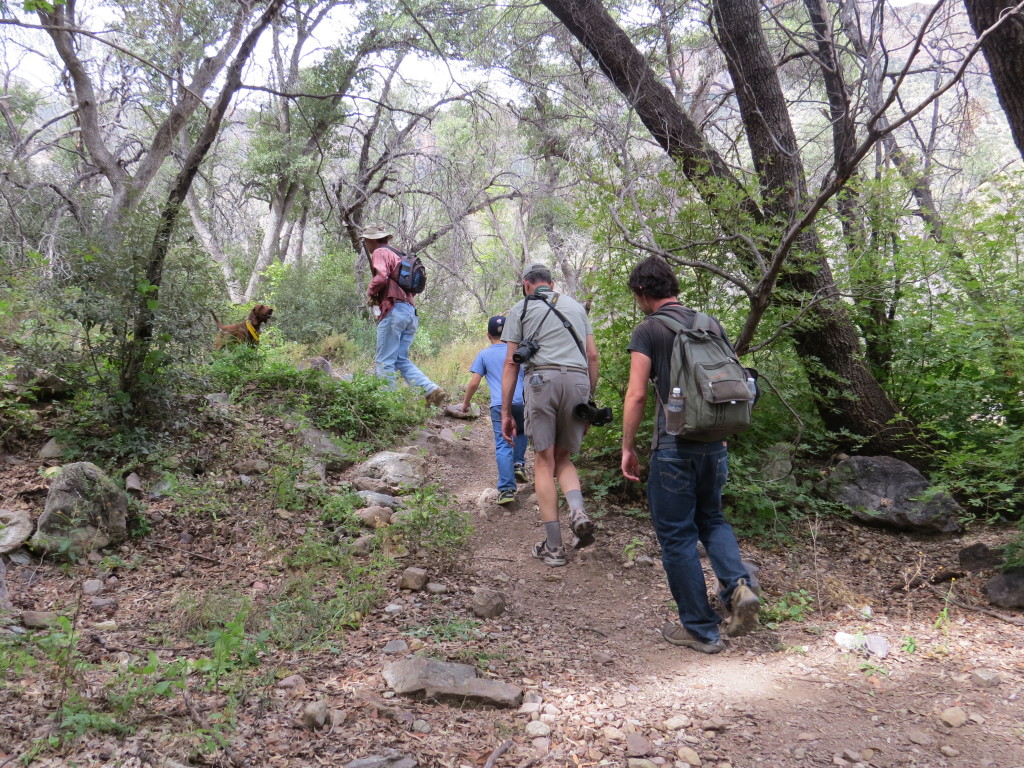
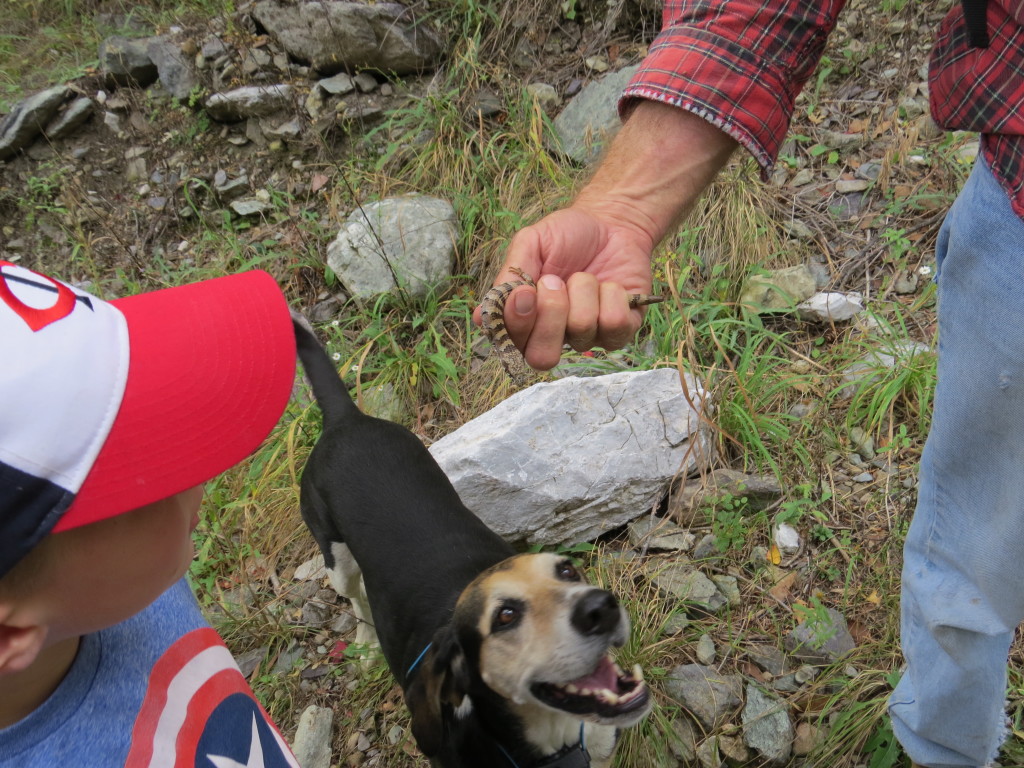 After hiking nearly a mile uphill, we finally reached Split Rock. Here there were two elderly women had been brought to this location earlier to look for the Spotted Owls. Our guide checked out the usual perches for the Owls, a family group of four birds, but none of them held anything. Then, real casually, he points to a different tree and says, “Oh, here’s one.” Sweet!
After hiking nearly a mile uphill, we finally reached Split Rock. Here there were two elderly women had been brought to this location earlier to look for the Spotted Owls. Our guide checked out the usual perches for the Owls, a family group of four birds, but none of them held anything. Then, real casually, he points to a different tree and says, “Oh, here’s one.” Sweet!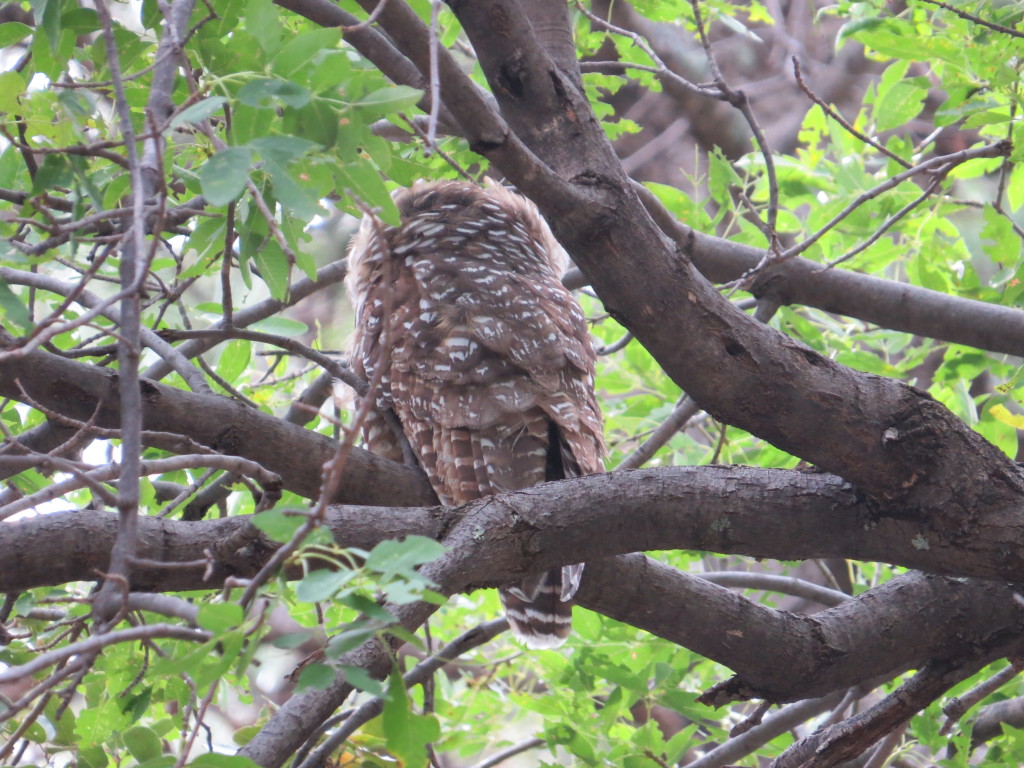
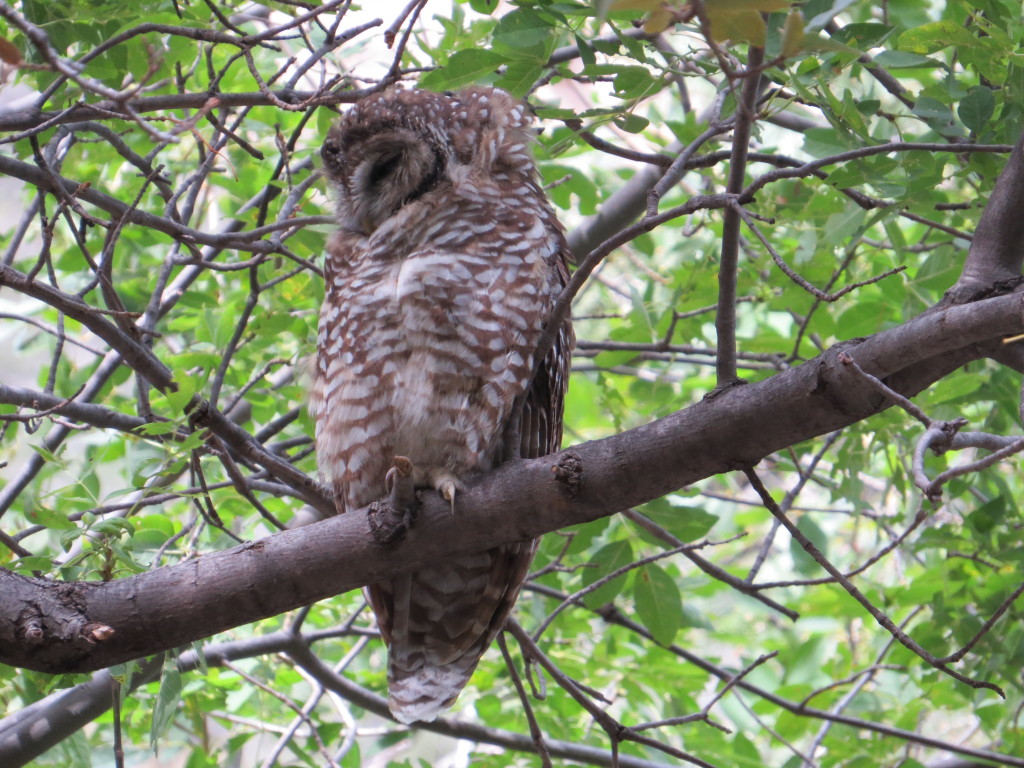 This Owl was a pretty mellow fellow, which I understand is typical for this species. It could not have cared less that we were ooing and awwing over it.
This Owl was a pretty mellow fellow, which I understand is typical for this species. It could not have cared less that we were ooing and awwing over it.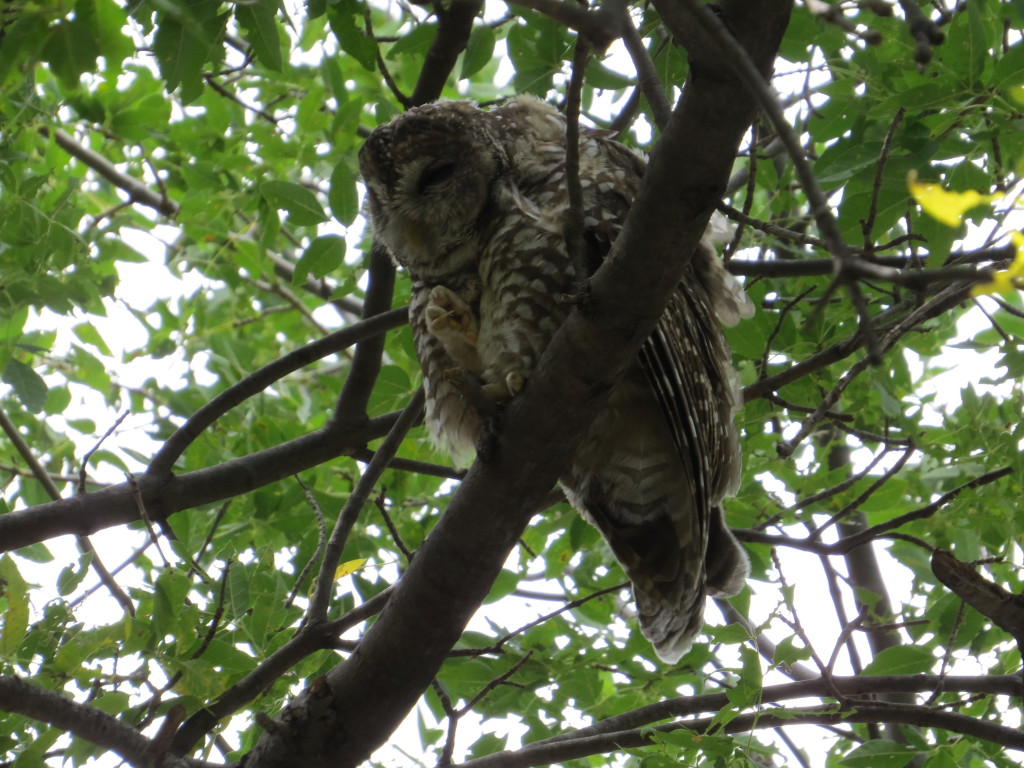
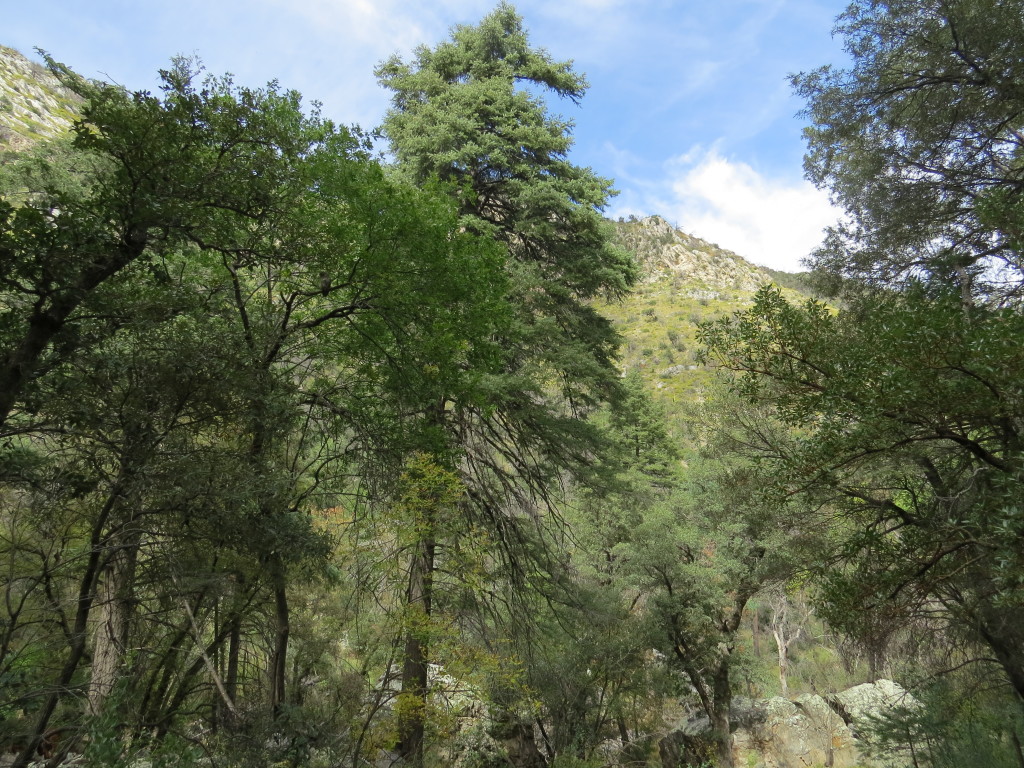 Tommy and I went a little further up the canyon hoping to spot one of the other Spotted Owls on our own which is half the fun of owling. But without any more luck, it was finally time to head back down the canyon. What a thrill it was, though, to get this prized lifer:
Tommy and I went a little further up the canyon hoping to spot one of the other Spotted Owls on our own which is half the fun of owling. But without any more luck, it was finally time to head back down the canyon. What a thrill it was, though, to get this prized lifer: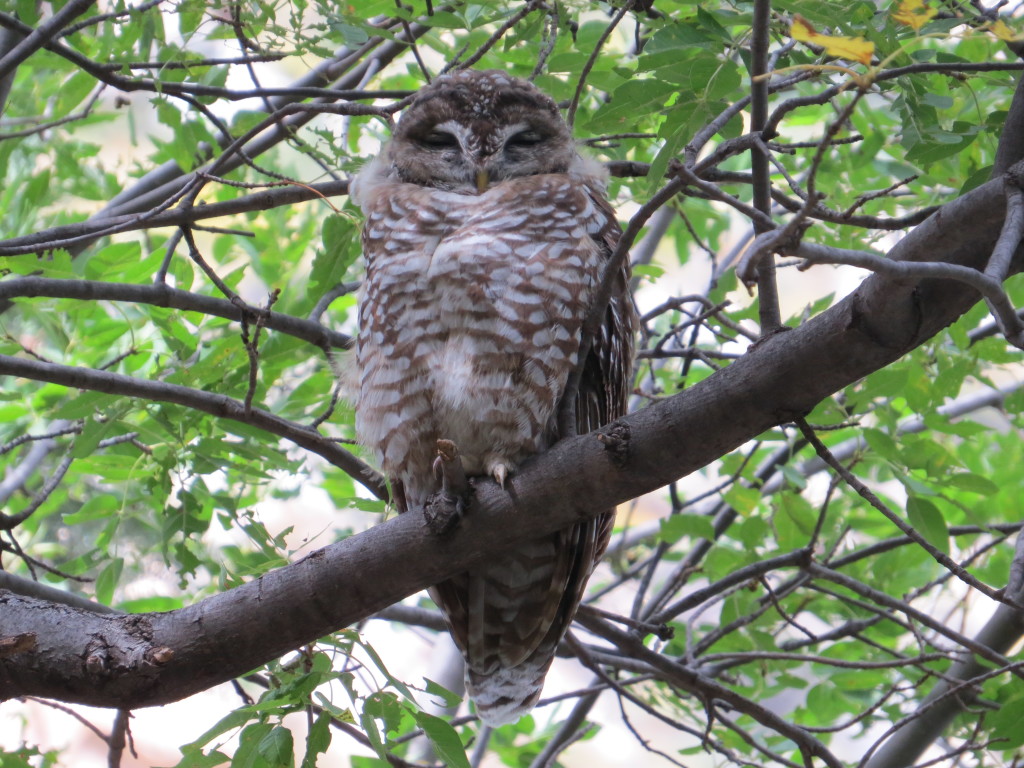
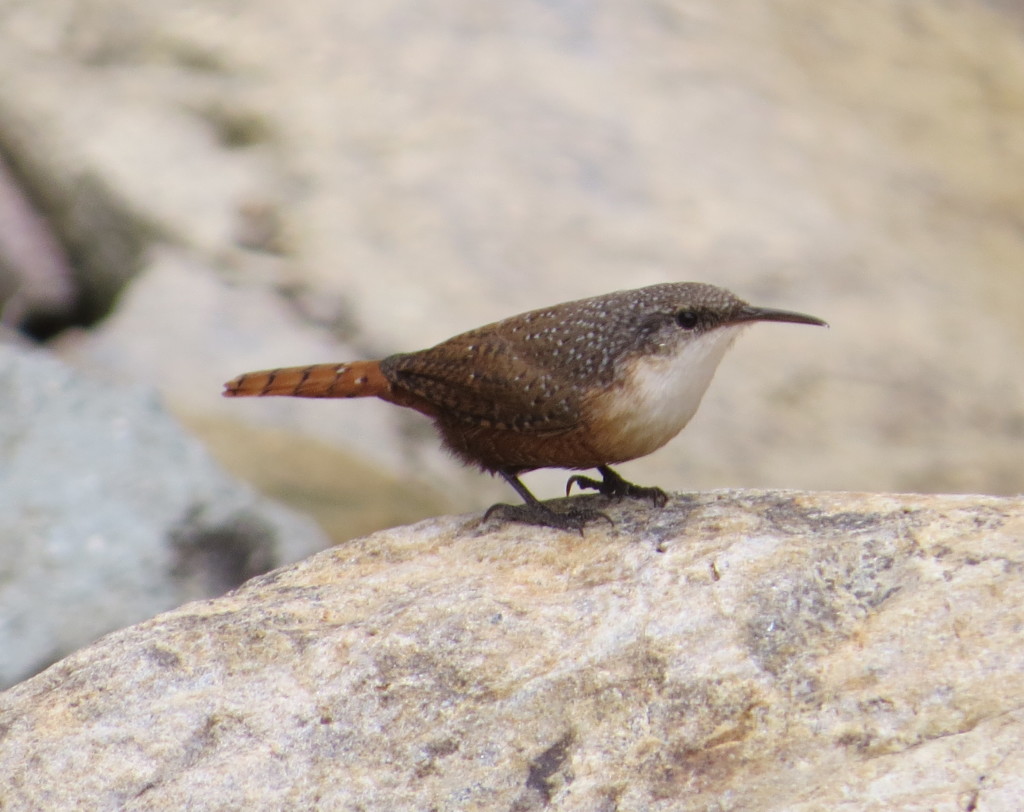
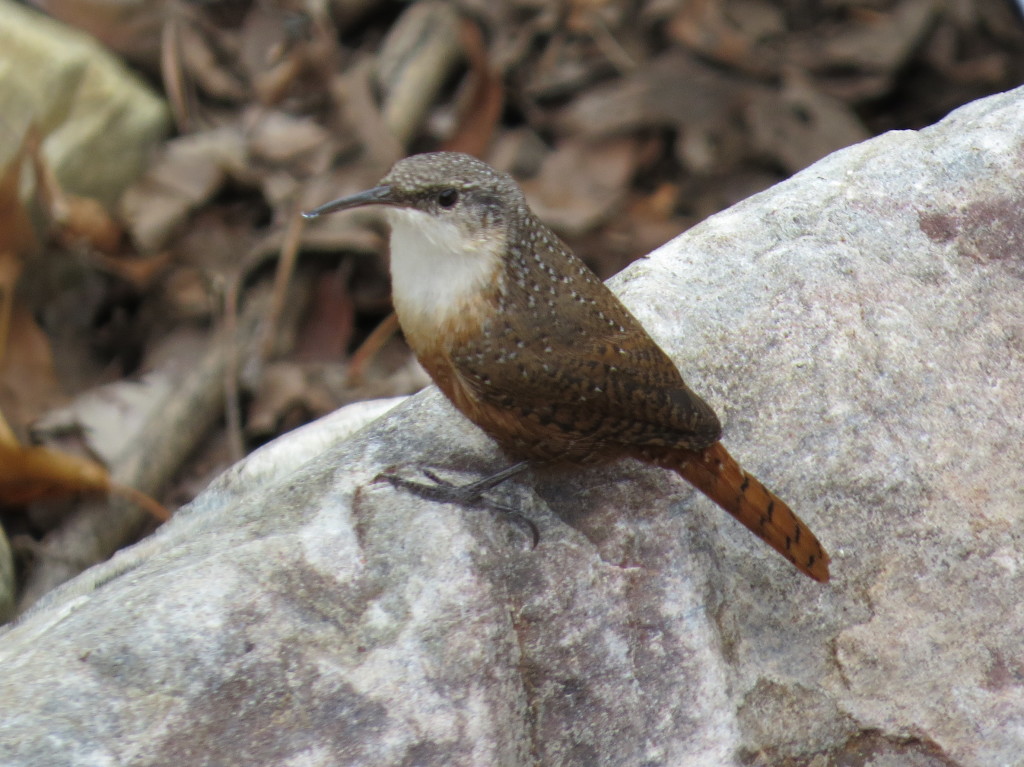 Then there was one last big gift for our big day in the Huachucas. We were nearly to the car when Tommy thought he heard a Black-throated Gray Warbler. I saw one last spring, but only briefly. I was hoping for a better photo. However, I’m just going to have to wait for that because the bird turned out to be a lifer Townsend’s Warbler instead! Now I need a redemptive photo of two western Warblers.
Then there was one last big gift for our big day in the Huachucas. We were nearly to the car when Tommy thought he heard a Black-throated Gray Warbler. I saw one last spring, but only briefly. I was hoping for a better photo. However, I’m just going to have to wait for that because the bird turned out to be a lifer Townsend’s Warbler instead! Now I need a redemptive photo of two western Warblers.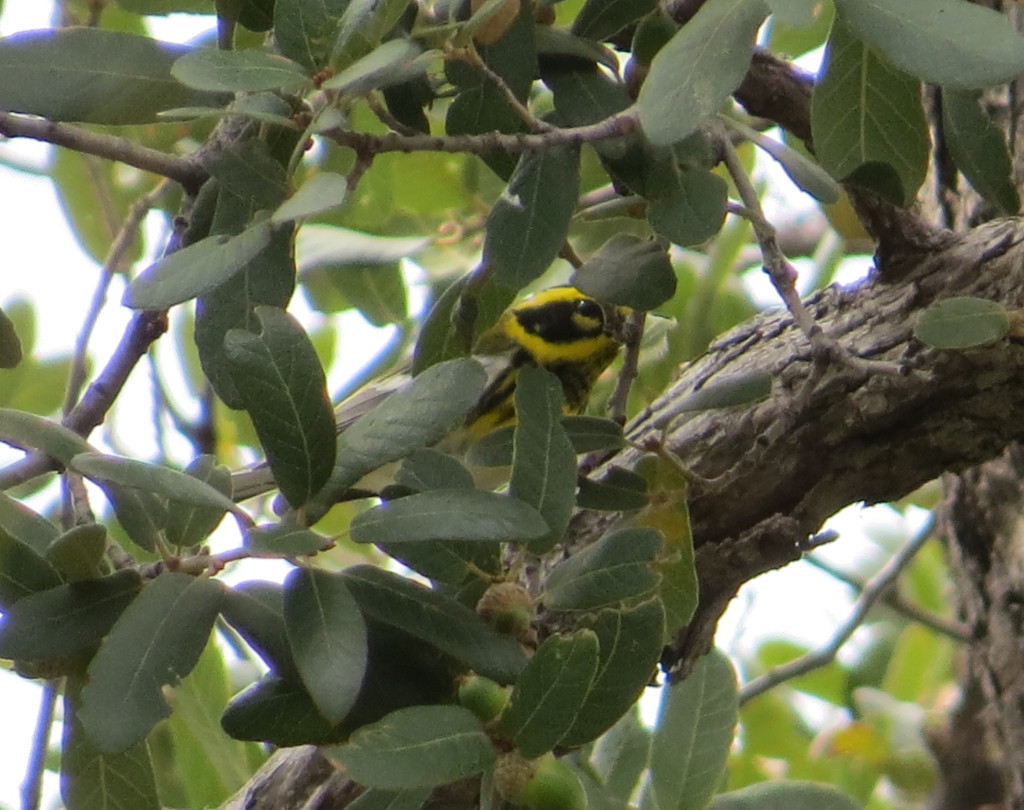 What an incredible day it was at our three stops in the Huachuca Mountains. It was finally time to hit the road to join my family back at Green Valley. Once again, Tommy and Gordon outdid themselves and provided another fun set of SE AZ memories. We said our goodbyes and vowed to meet up again this winter back in Minnesota where it’s not as warm, definitely not as scenic, but with just as cool (if not cooler) Owls. Hopefully Evan and I can repay these guys with some awesome lifers of their own.
What an incredible day it was at our three stops in the Huachuca Mountains. It was finally time to hit the road to join my family back at Green Valley. Once again, Tommy and Gordon outdid themselves and provided another fun set of SE AZ memories. We said our goodbyes and vowed to meet up again this winter back in Minnesota where it’s not as warm, definitely not as scenic, but with just as cool (if not cooler) Owls. Hopefully Evan and I can repay these guys with some awesome lifers of their own.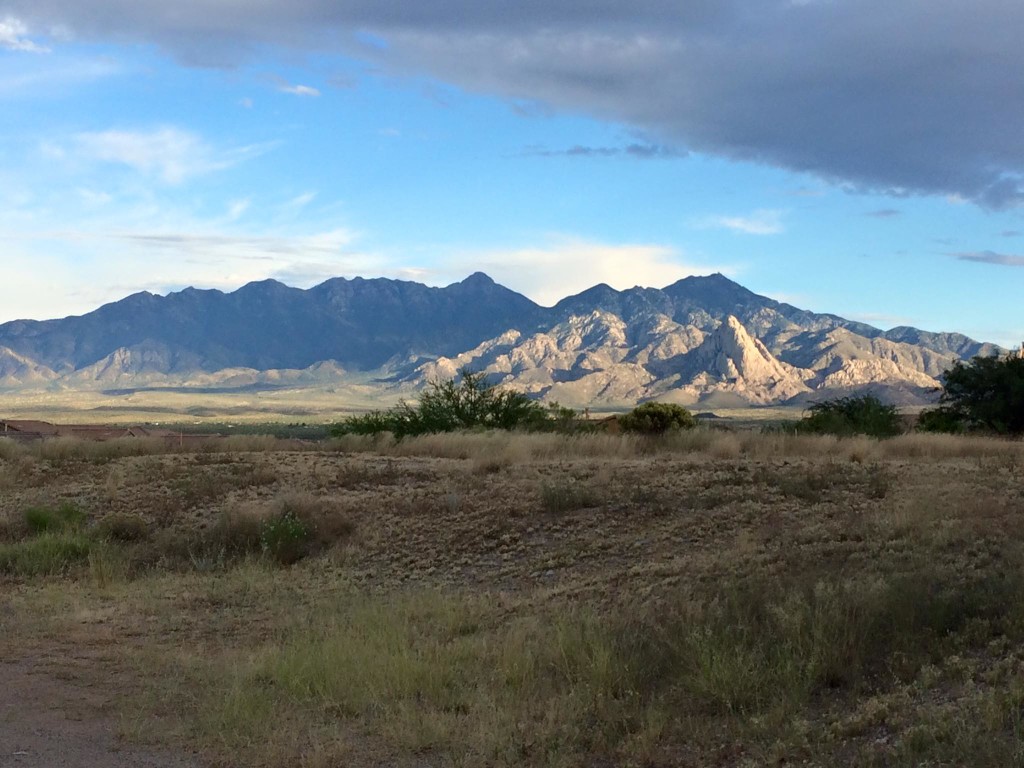
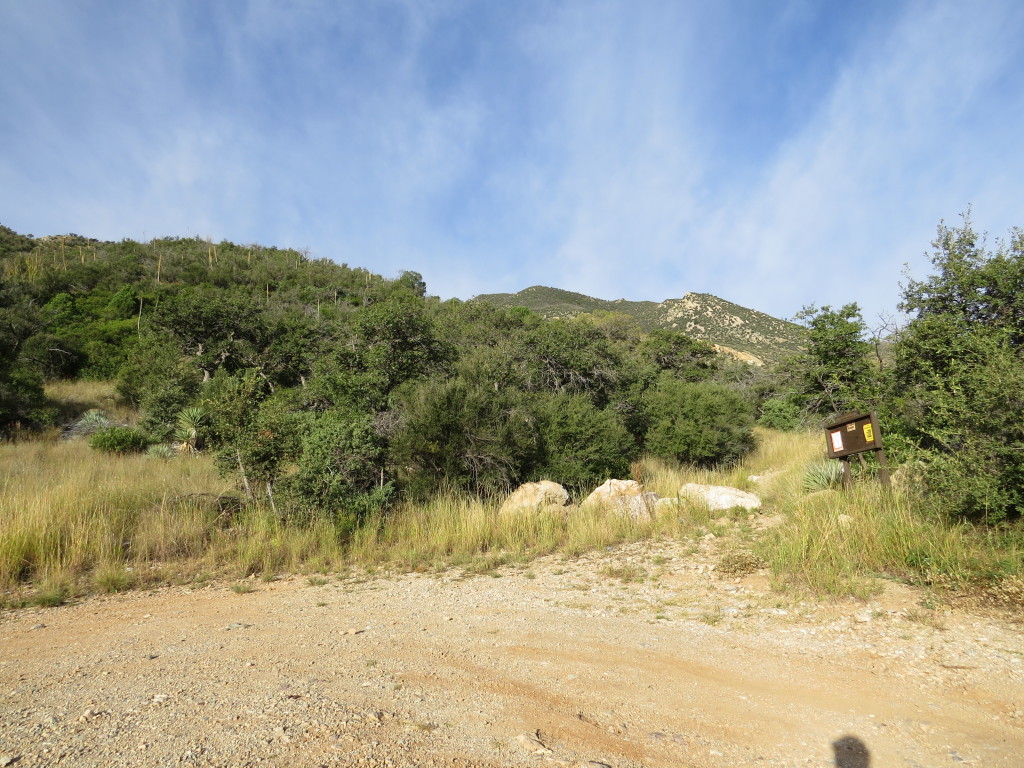
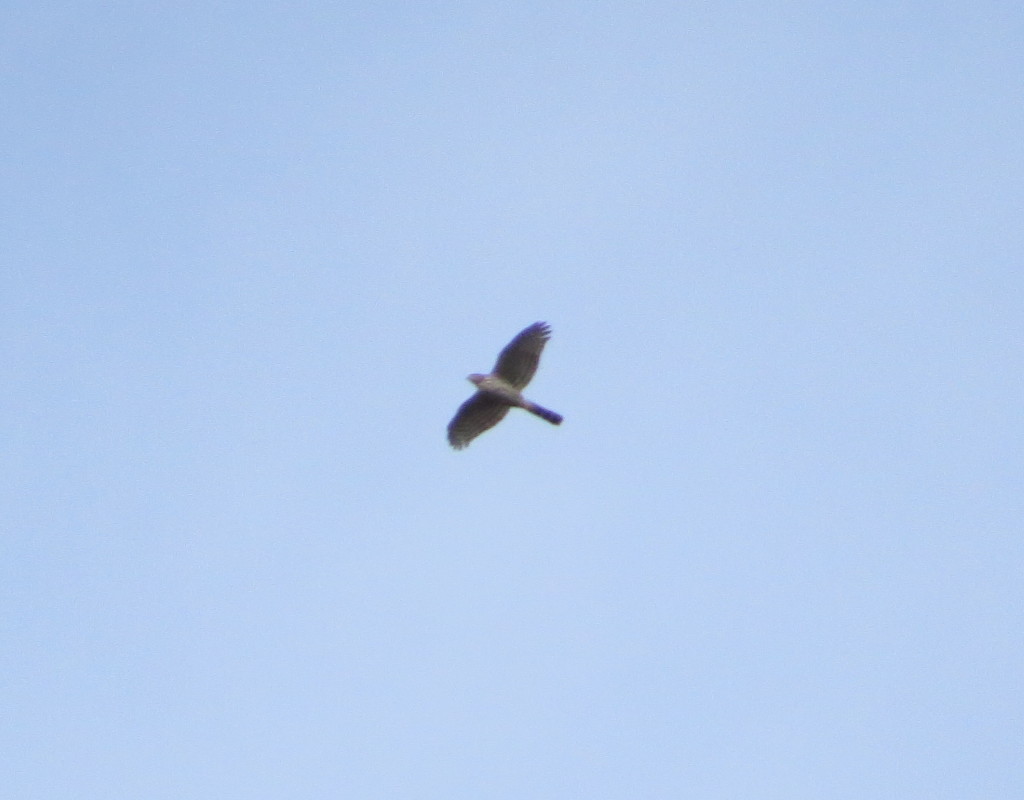
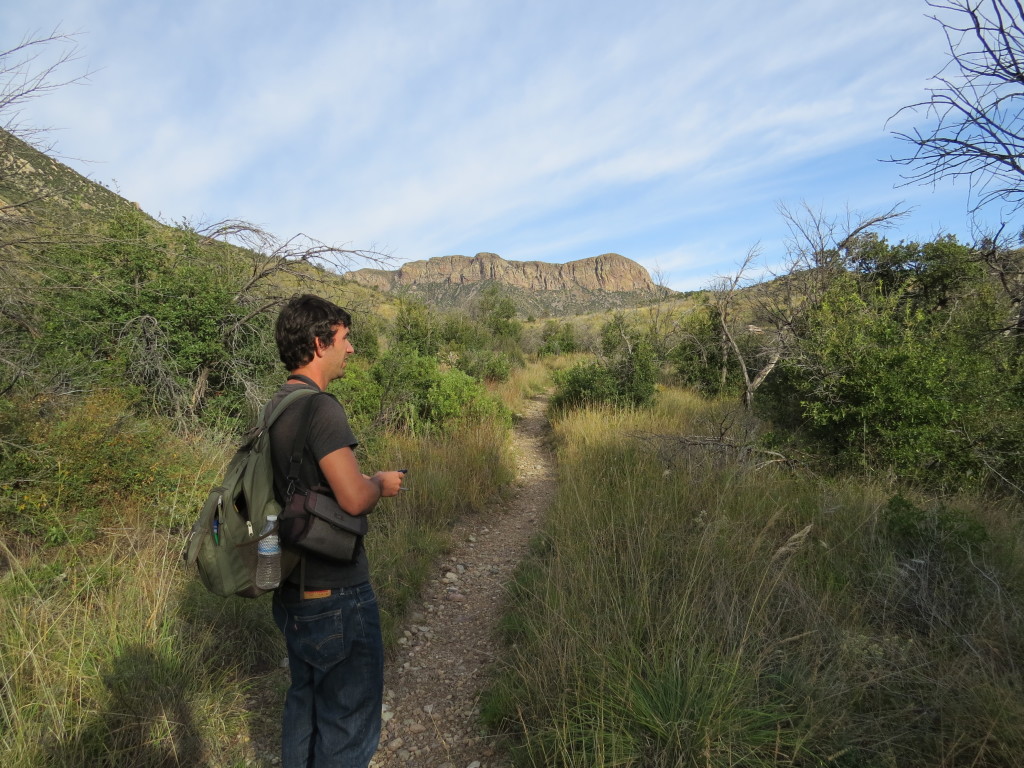 Tommy’s ear for bird sounds is truly impressive–hardly a chip note, flight call, or song gets by him. In fact, he doesn’t even announce all that he’s hearing unless it’s important, like this lifer Bewick’s Wren.
Tommy’s ear for bird sounds is truly impressive–hardly a chip note, flight call, or song gets by him. In fact, he doesn’t even announce all that he’s hearing unless it’s important, like this lifer Bewick’s Wren.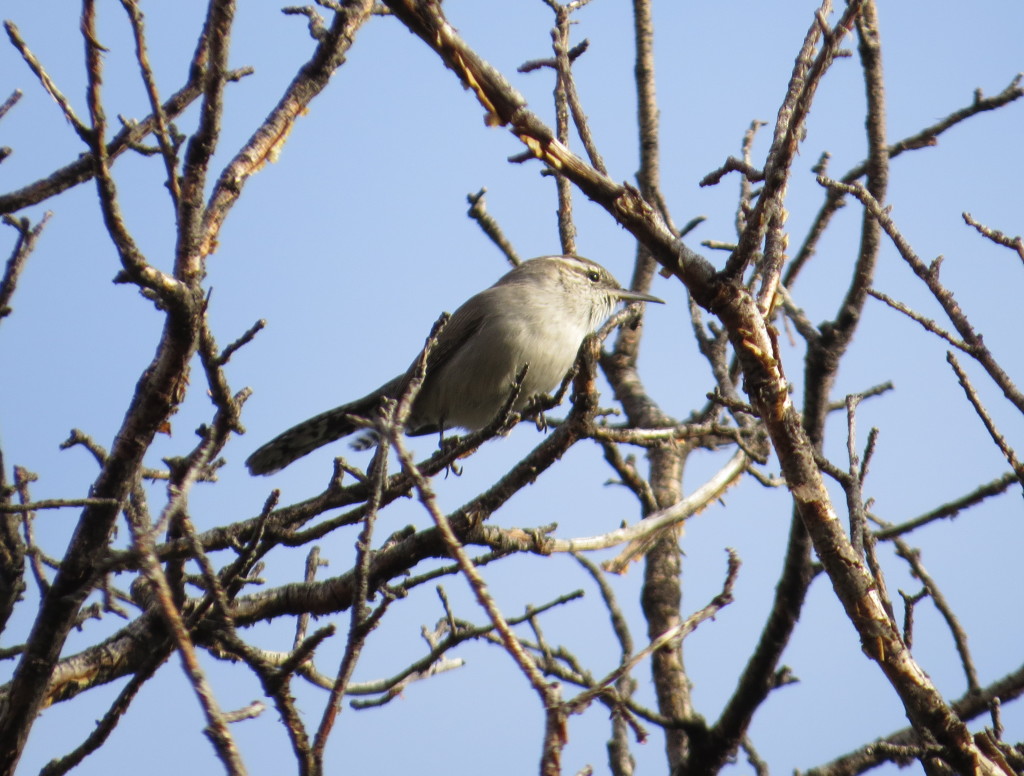
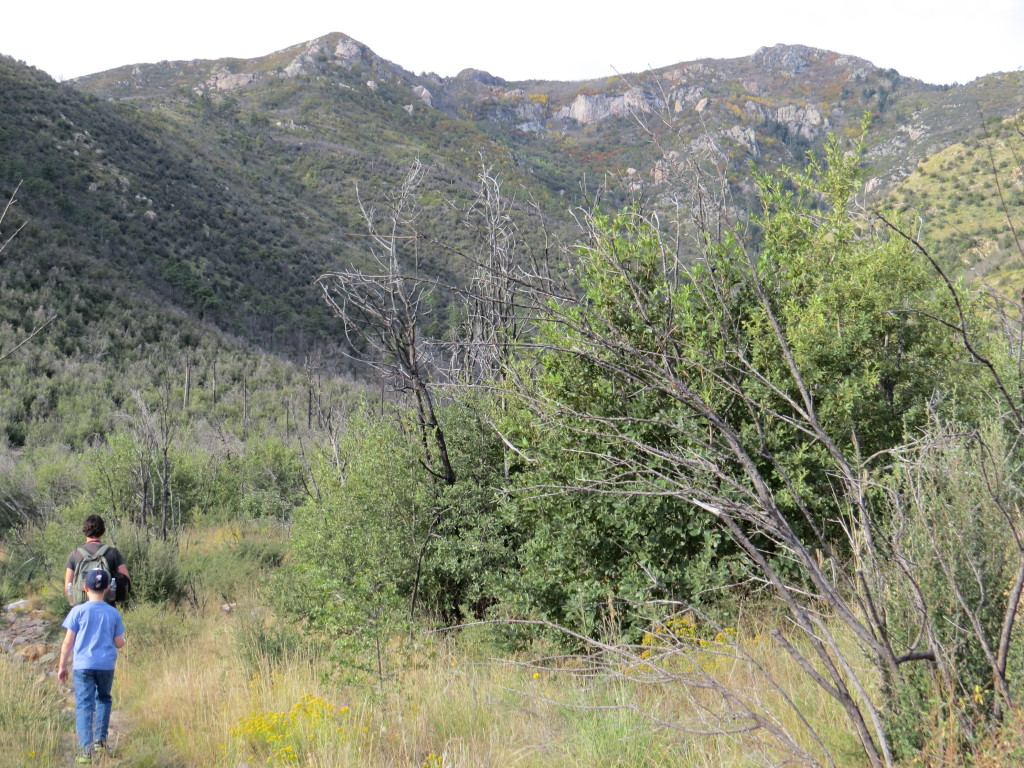 It is where this lowland scrub terminates and the forest of the canyon begins that the Slate-throated Redstart had been seen just a couple days prior. We paused to look and listen, but it seemed well-known at this point that the Redstart was gone. We did, however, start to hear multiple Rufous-capped Warblers all around us! Getting a visual of this brush-loving bird is another story. The sound seemed to come from everywhere and then stopped all of the sudden. Weird. So onward and upward we kept going. At least the view back down the mountain was nice.
It is where this lowland scrub terminates and the forest of the canyon begins that the Slate-throated Redstart had been seen just a couple days prior. We paused to look and listen, but it seemed well-known at this point that the Redstart was gone. We did, however, start to hear multiple Rufous-capped Warblers all around us! Getting a visual of this brush-loving bird is another story. The sound seemed to come from everywhere and then stopped all of the sudden. Weird. So onward and upward we kept going. At least the view back down the mountain was nice.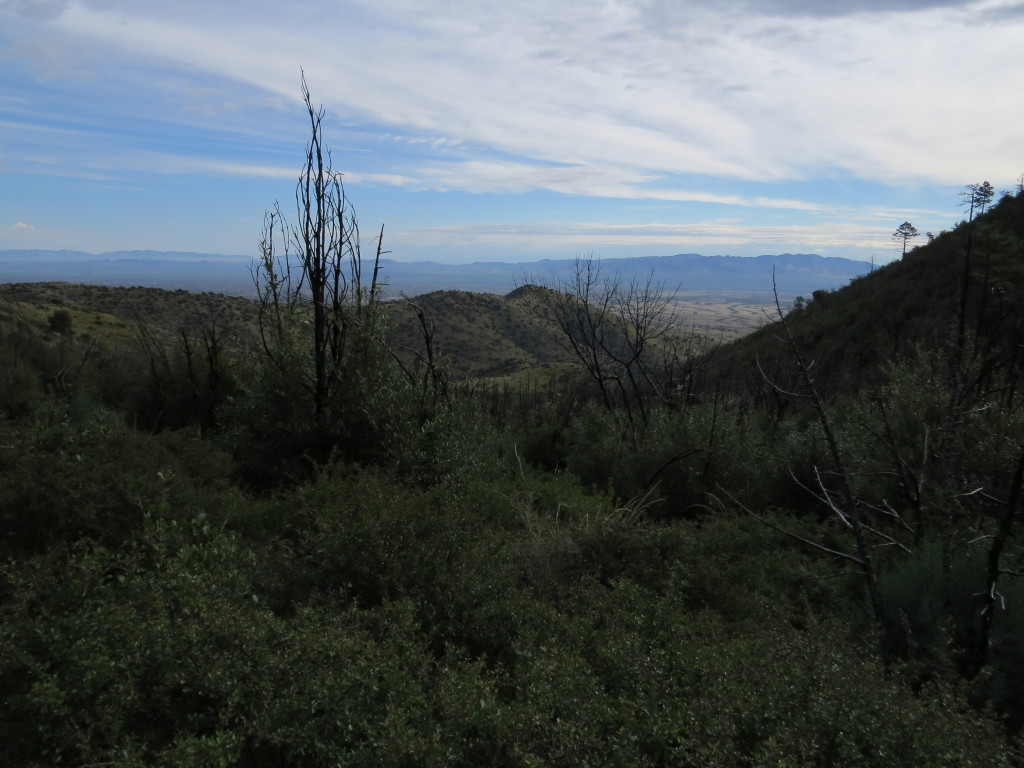
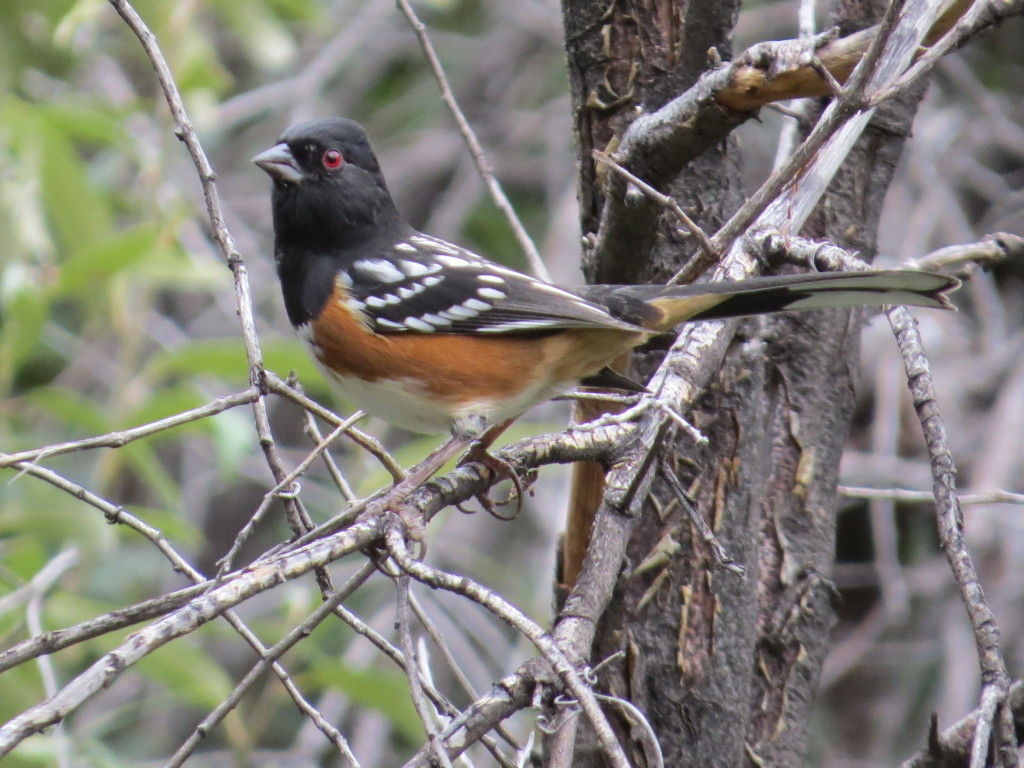 In hindsight, this was the calm before the storm because things took off in a hurry. It all started when Tommy spotted a male Hepatic Tanager which was a lifer for Evan and me. I didn’t see it, but I spotted my own Hepatic lifer (female).
In hindsight, this was the calm before the storm because things took off in a hurry. It all started when Tommy spotted a male Hepatic Tanager which was a lifer for Evan and me. I didn’t see it, but I spotted my own Hepatic lifer (female).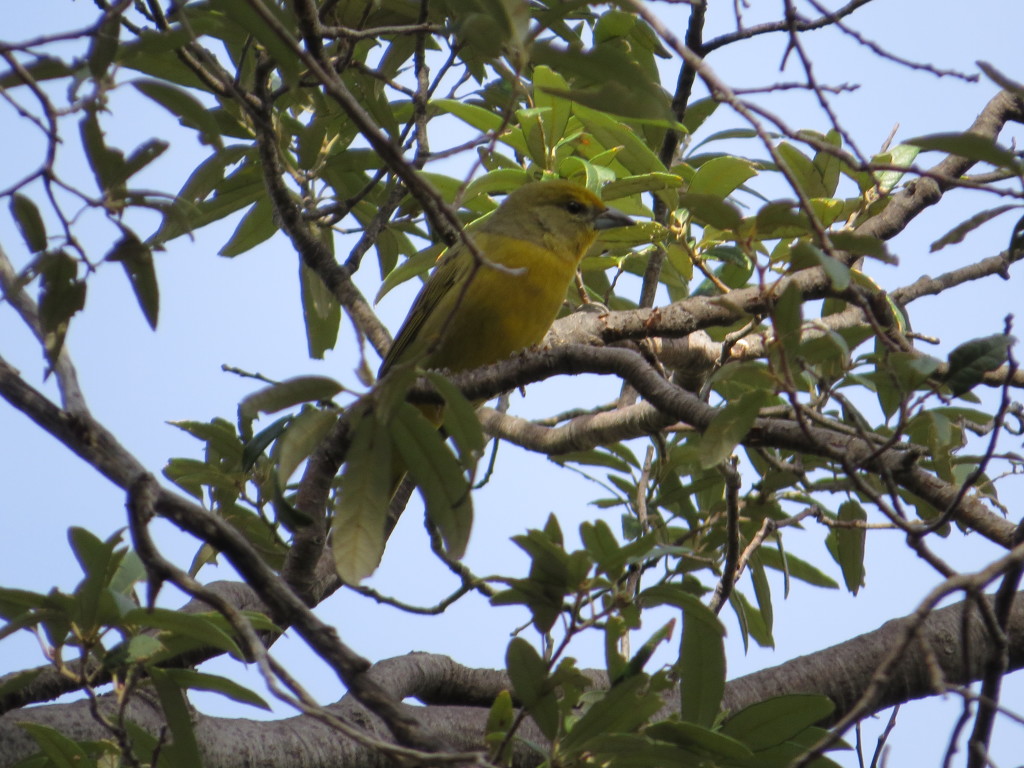 I really wanted to see the male Tommy found. Eventually I saw it, but it was not being cooperative at all.
I really wanted to see the male Tommy found. Eventually I saw it, but it was not being cooperative at all.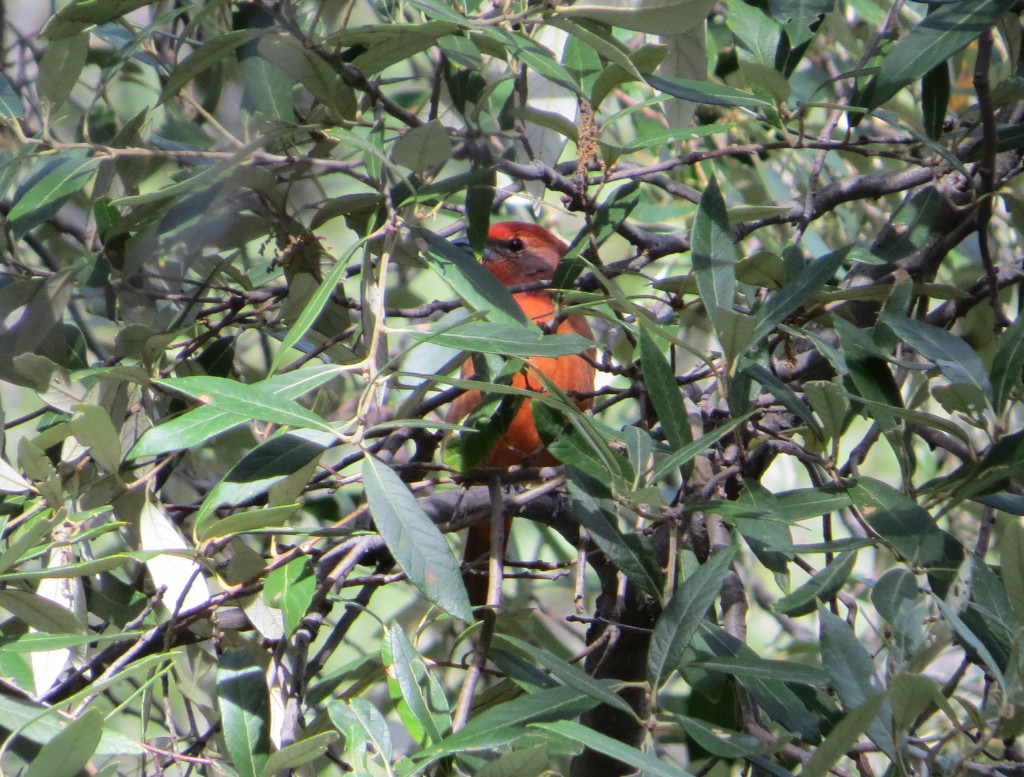
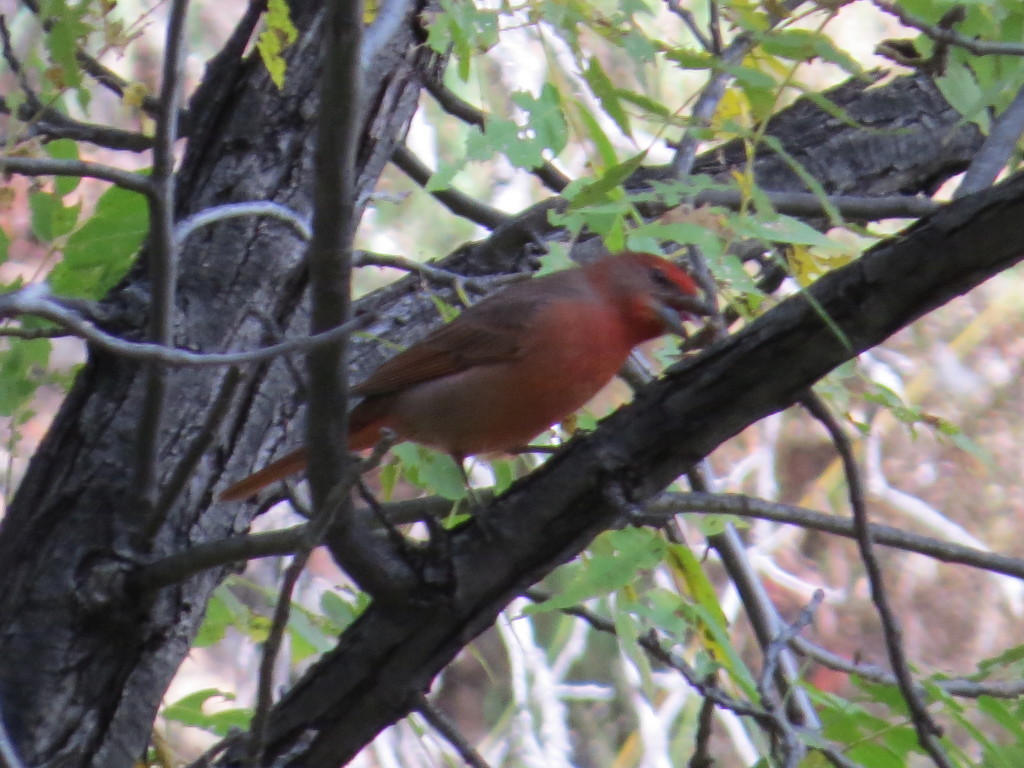 Tommy said that sometimes Tanagers will respond to a Northern Pygmy-Owl call. When he played it, a live Pygmy-Owl tooted back! Tommy took off up the canyon trail to see if he could locate it. I started soon after but then saw bright flash of yellow and black come across the blue sky–Scott’s Oriole! What a looker it was! It landed at the very top of a tree offering me nothing but butt views. It’s a pretty nice-looking butt, anyhow.
Tommy said that sometimes Tanagers will respond to a Northern Pygmy-Owl call. When he played it, a live Pygmy-Owl tooted back! Tommy took off up the canyon trail to see if he could locate it. I started soon after but then saw bright flash of yellow and black come across the blue sky–Scott’s Oriole! What a looker it was! It landed at the very top of a tree offering me nothing but butt views. It’s a pretty nice-looking butt, anyhow.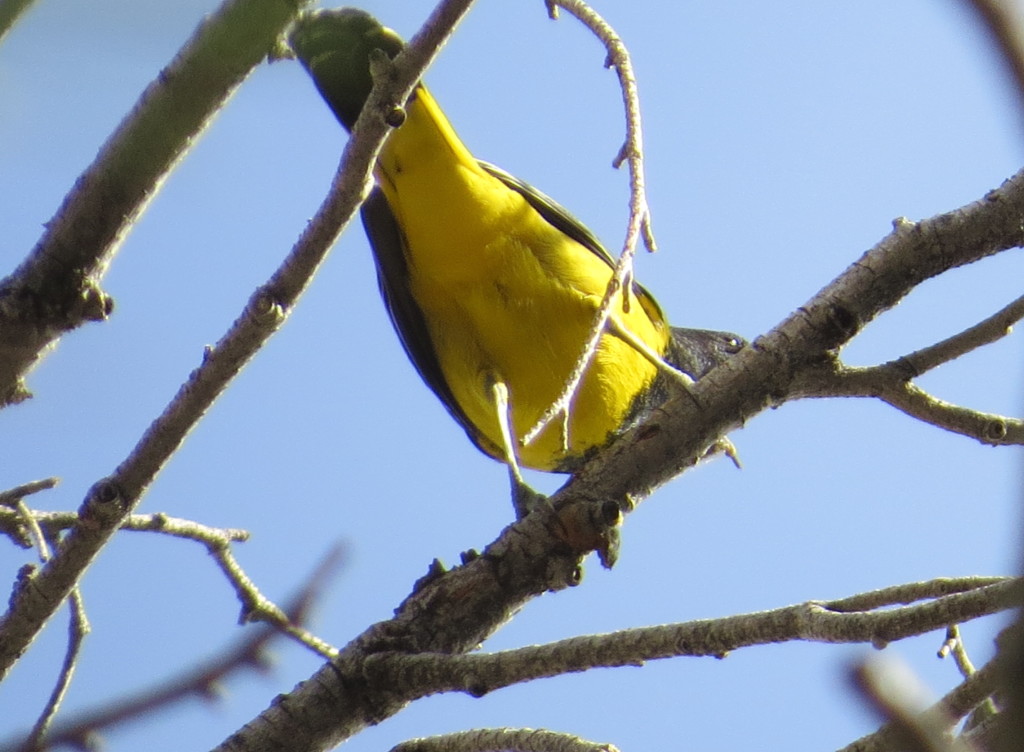 As I was jockeying for a position from which I could see the Oriole better, Tommy called out calmly, “Guys, Pygmy-Owl.” For some reason I thought this meant he was hearing it, and so I continued to keep working on the Oriole. A few seconds later, Tommy’s voice carried a little more urgency. An Owl lifer trumps an Oriole photo. Evan, Gordon, and I hustled up to where Tommy was. Sure enough, he had eyes on it. Wow, just wow.
As I was jockeying for a position from which I could see the Oriole better, Tommy called out calmly, “Guys, Pygmy-Owl.” For some reason I thought this meant he was hearing it, and so I continued to keep working on the Oriole. A few seconds later, Tommy’s voice carried a little more urgency. An Owl lifer trumps an Oriole photo. Evan, Gordon, and I hustled up to where Tommy was. Sure enough, he had eyes on it. Wow, just wow.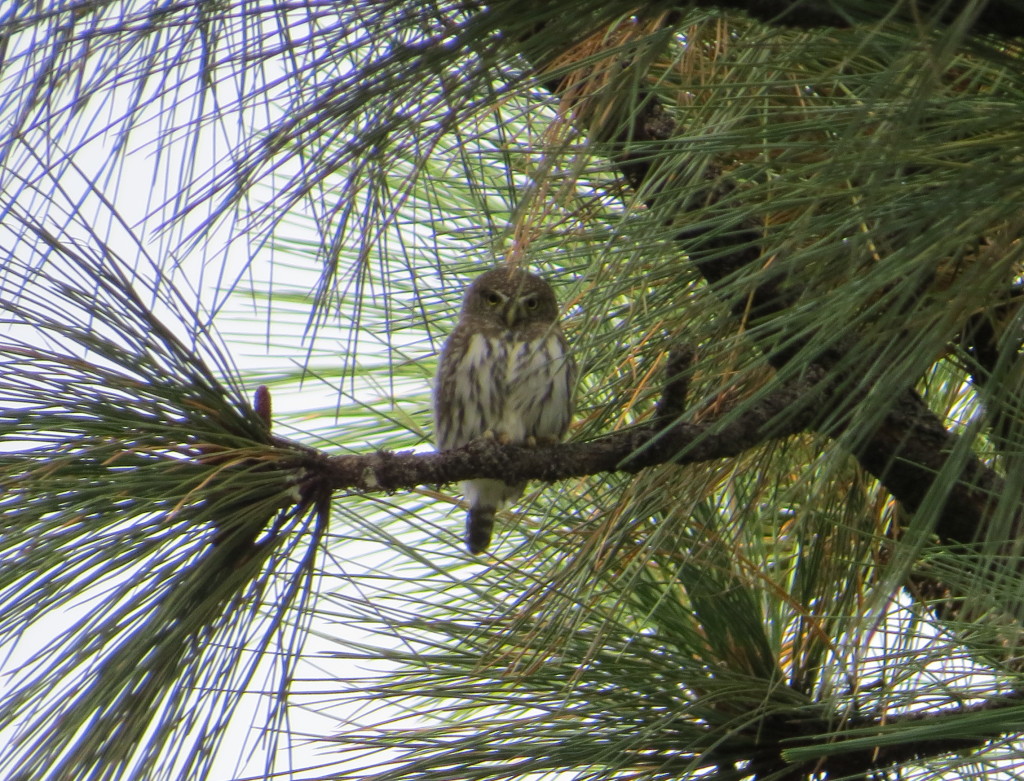
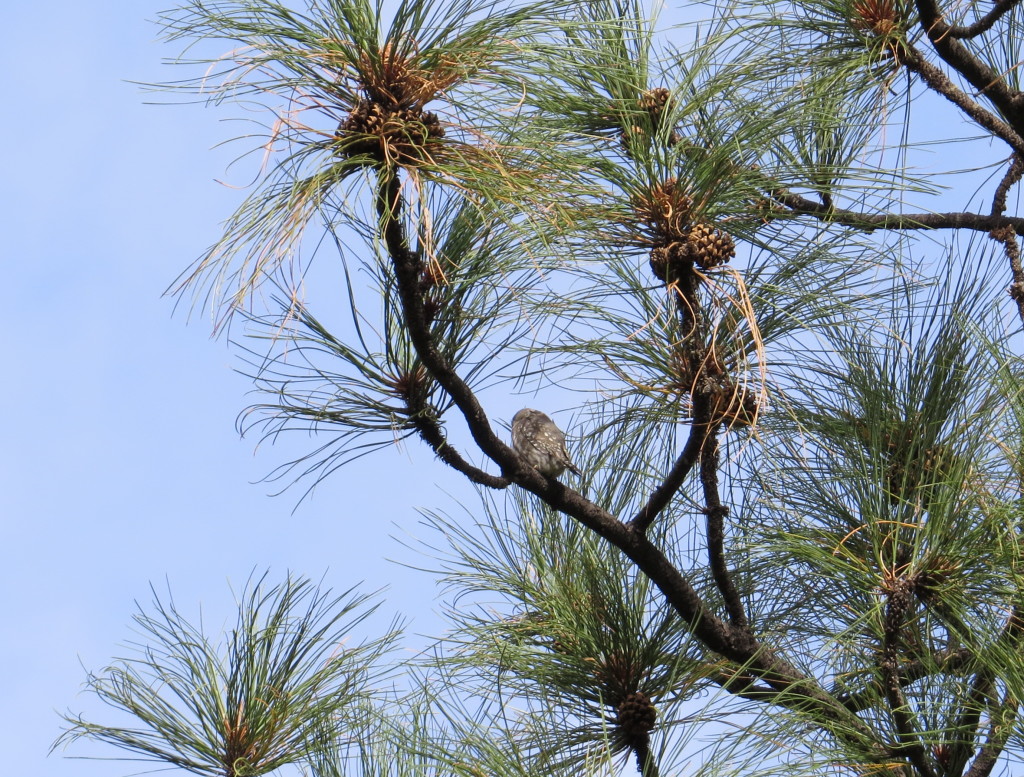 This was such a fun life bird. I was not expecting this one on this trip. Excuse the numerous photos–I was, and still am, very excited about this sighting.
This was such a fun life bird. I was not expecting this one on this trip. Excuse the numerous photos–I was, and still am, very excited about this sighting.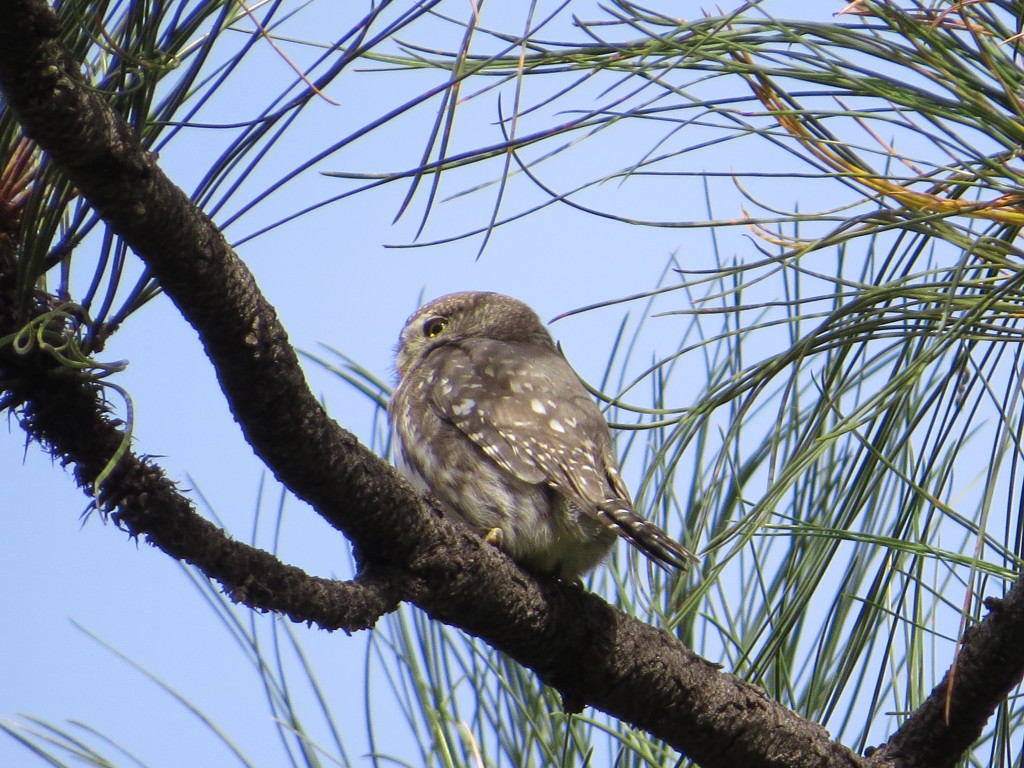
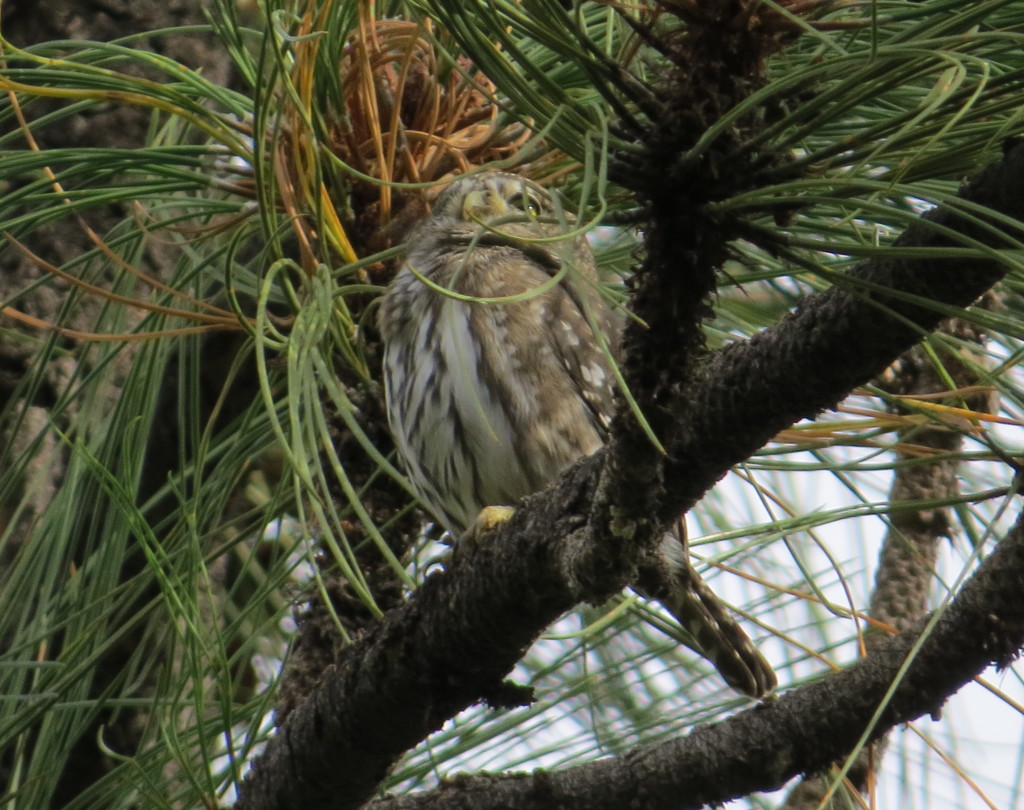
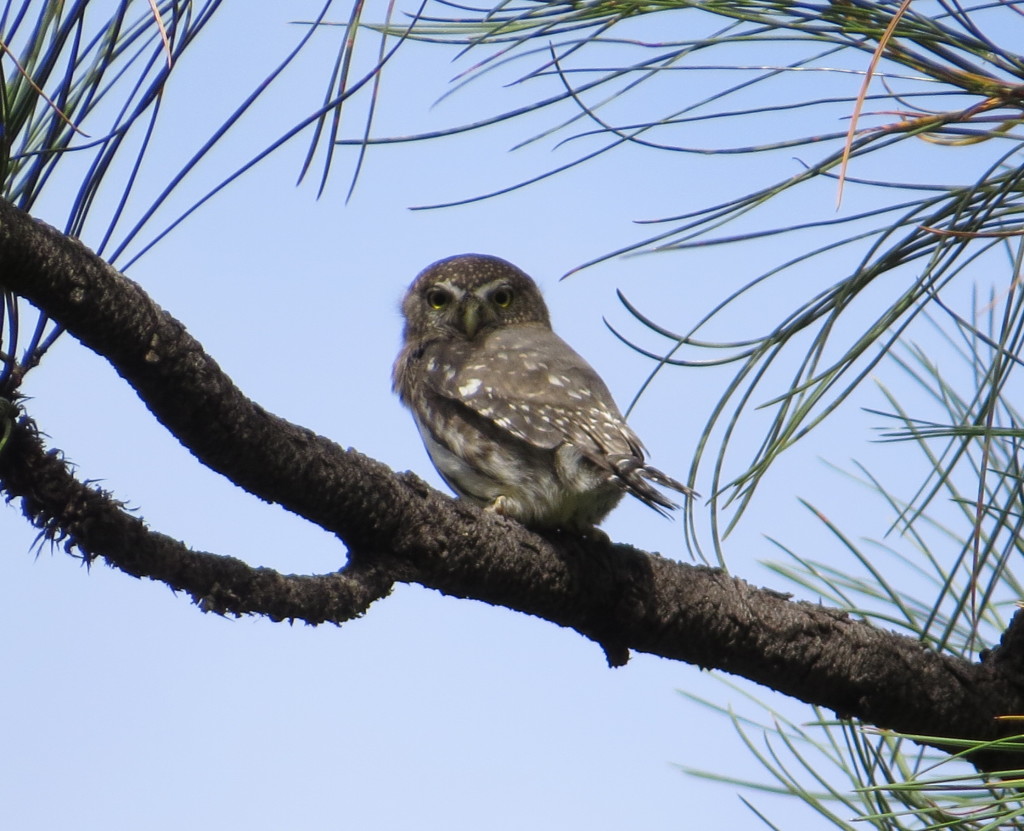 Time waits for no man, though, and neither do Rufous-capped Warblers. As I was photographing this cool Owl and trying for better angles, a Rufous-capped Warbler started singing nearby and Tommy was off again! In seconds Tommy got a visual on the bird and called me over. I’ve learned from Tommy and Gordon to first get a good look at a lifer with binoculars and then worry about a photo second. So that’s what I did. In no time at all, I also saw the Rufous-capped Warbler pop up for a second and got to see that amazingly yellow throat.
Time waits for no man, though, and neither do Rufous-capped Warblers. As I was photographing this cool Owl and trying for better angles, a Rufous-capped Warbler started singing nearby and Tommy was off again! In seconds Tommy got a visual on the bird and called me over. I’ve learned from Tommy and Gordon to first get a good look at a lifer with binoculars and then worry about a photo second. So that’s what I did. In no time at all, I also saw the Rufous-capped Warbler pop up for a second and got to see that amazingly yellow throat.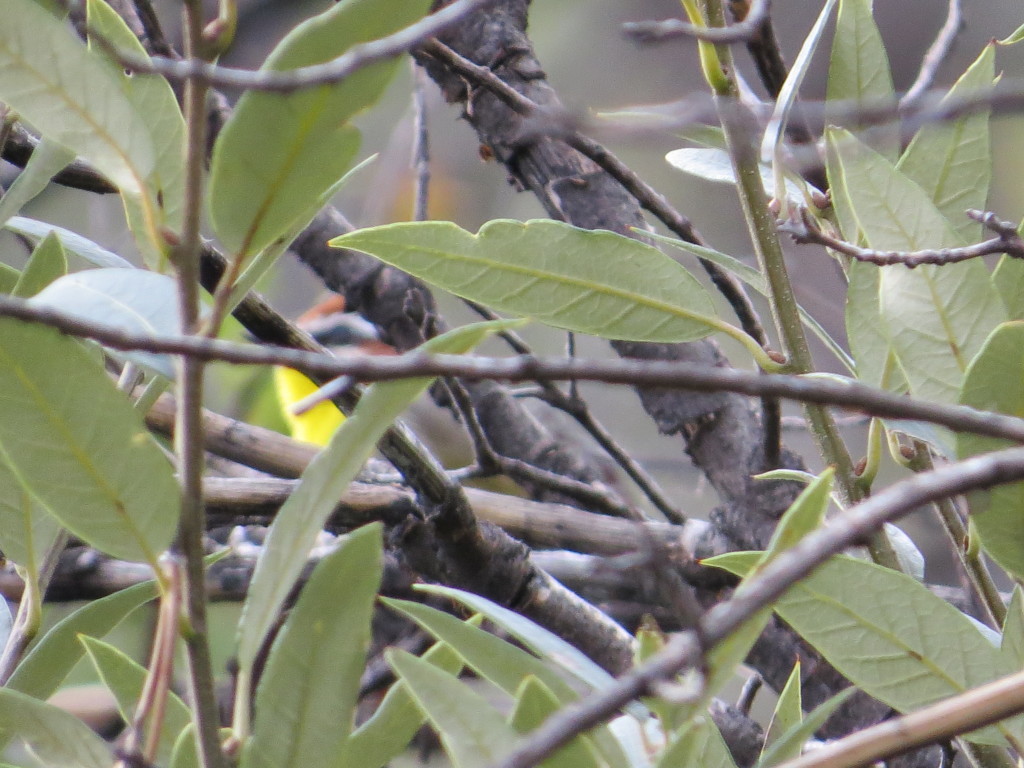
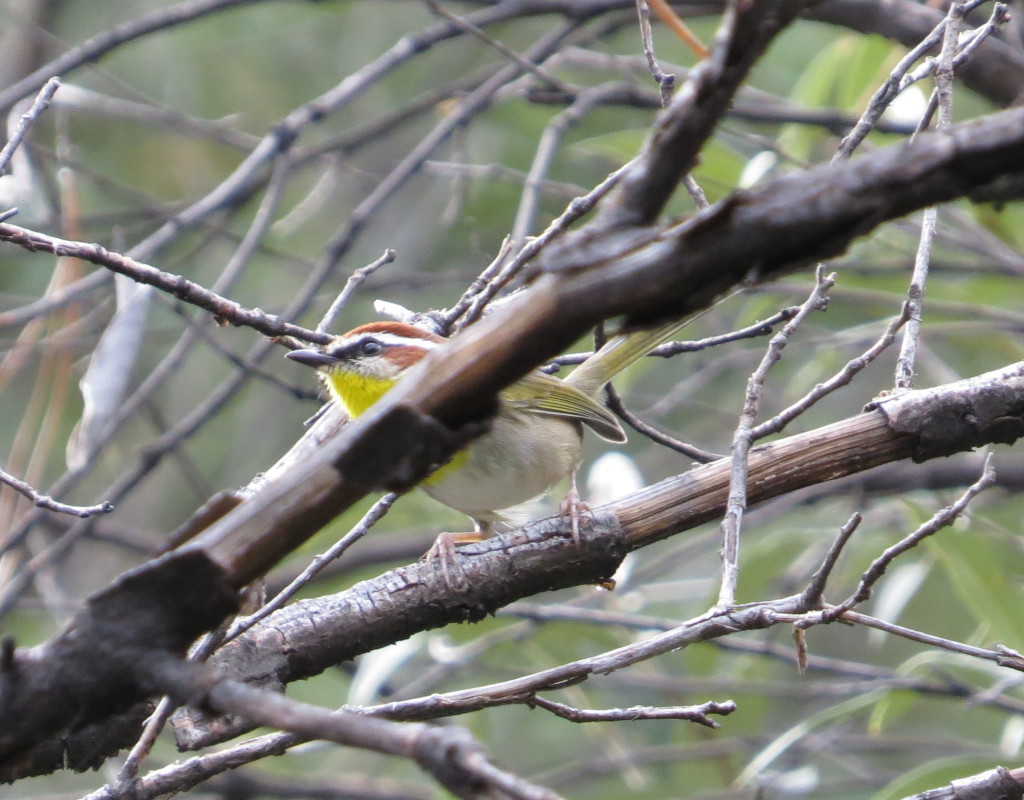
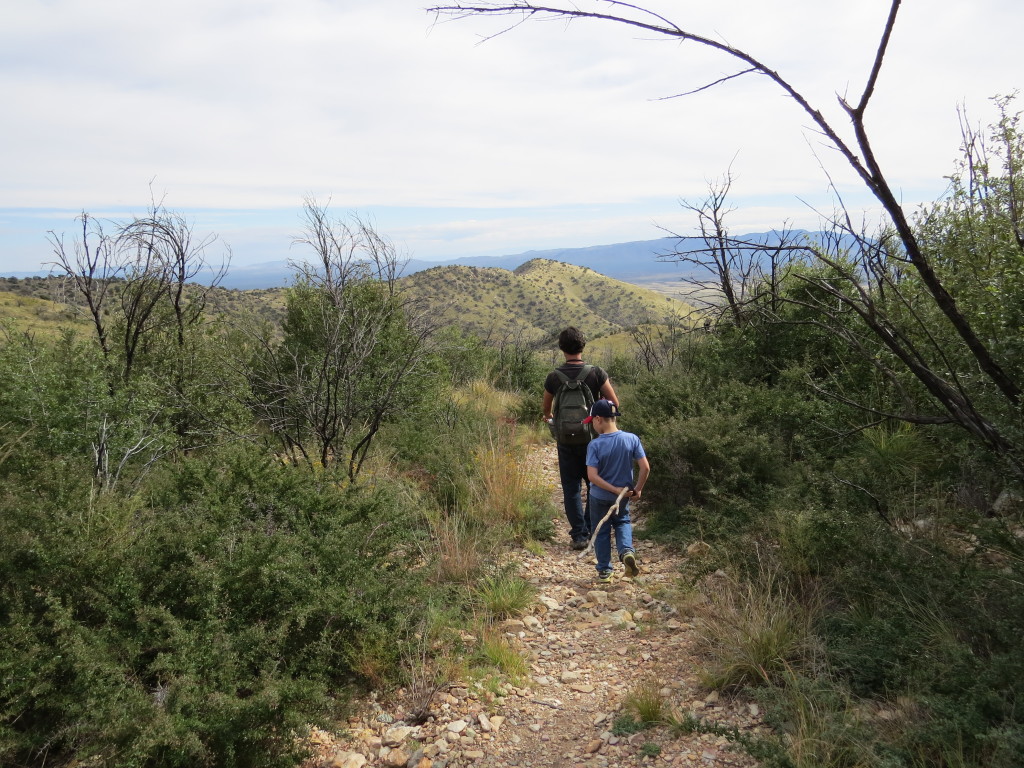 …and then go to next-door Miller Canyon and Ash Canyon for even more adventure! You don’t want to miss it–there will be coon dogs, guns, and yes, more cool lifers.
…and then go to next-door Miller Canyon and Ash Canyon for even more adventure! You don’t want to miss it–there will be coon dogs, guns, and yes, more cool lifers.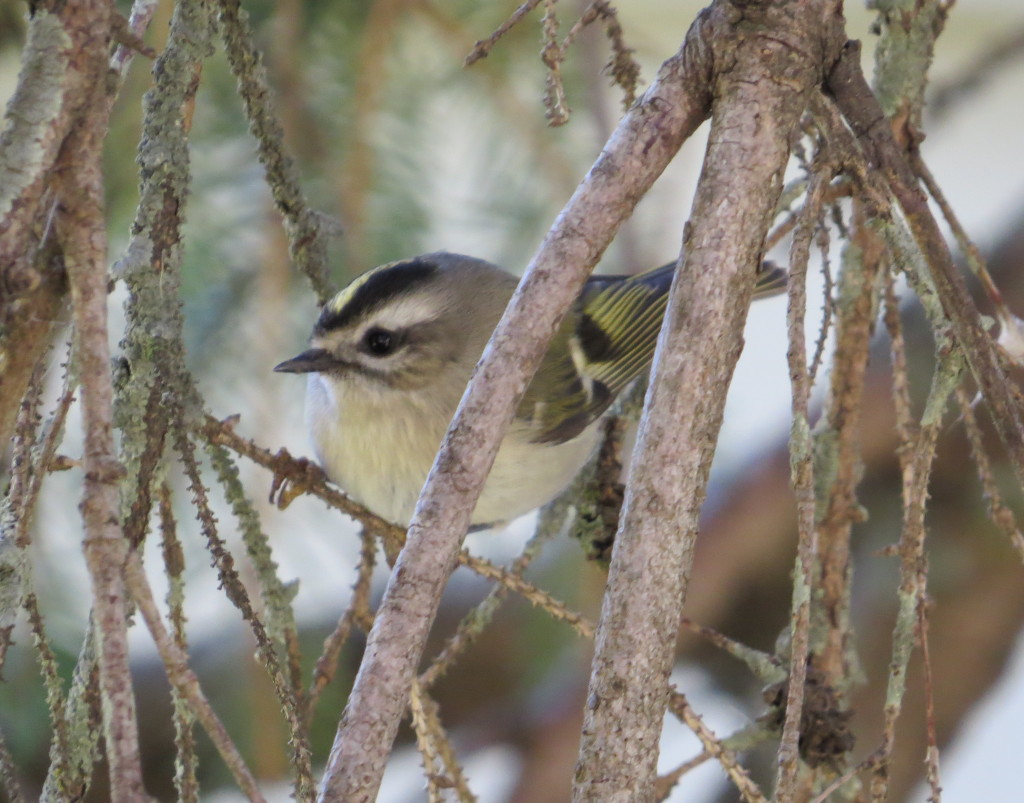
 The sun was sinking but things were still glaringly aglow around us as we Dodge Darted ourselves across town to Tempe Town Lake where
The sun was sinking but things were still glaringly aglow around us as we Dodge Darted ourselves across town to Tempe Town Lake where 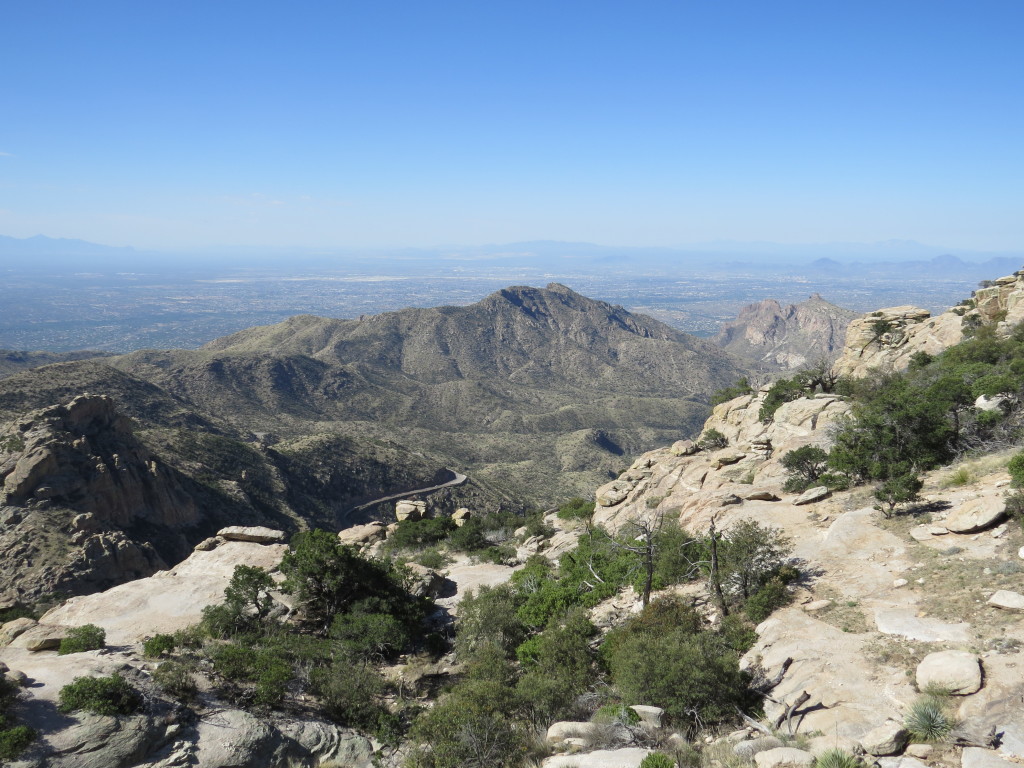
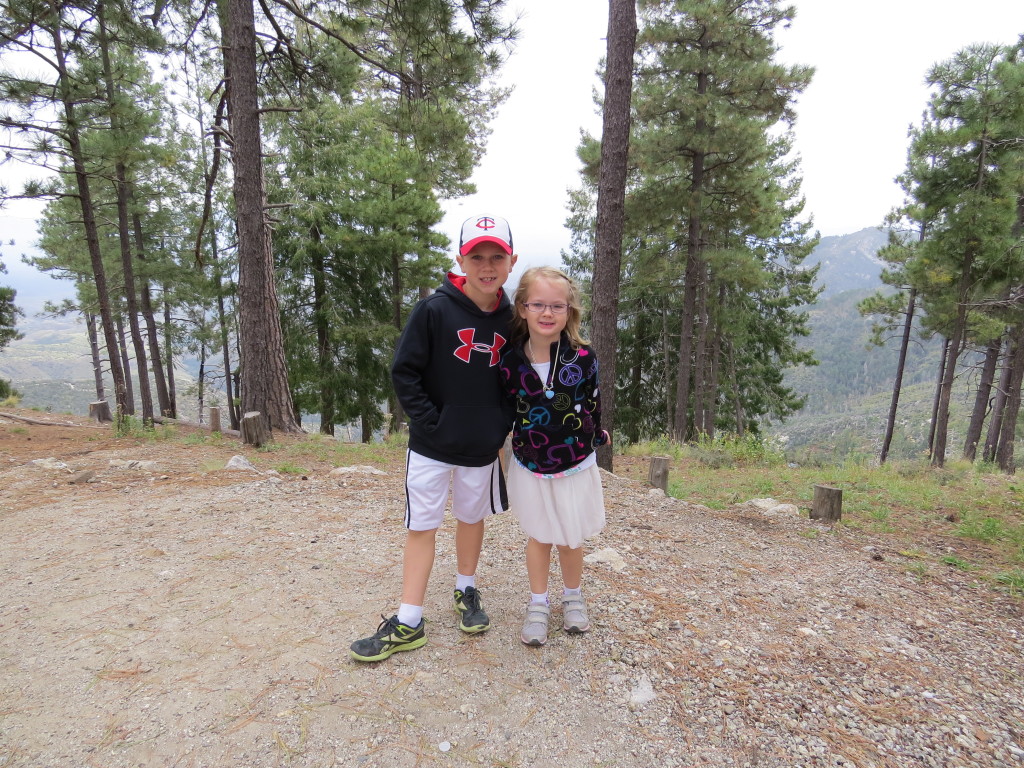 Once we completed the hour-long, 26 mile drive up to Summerhaven, I immediately started scanning for my target bird, a bird that
Once we completed the hour-long, 26 mile drive up to Summerhaven, I immediately started scanning for my target bird, a bird that 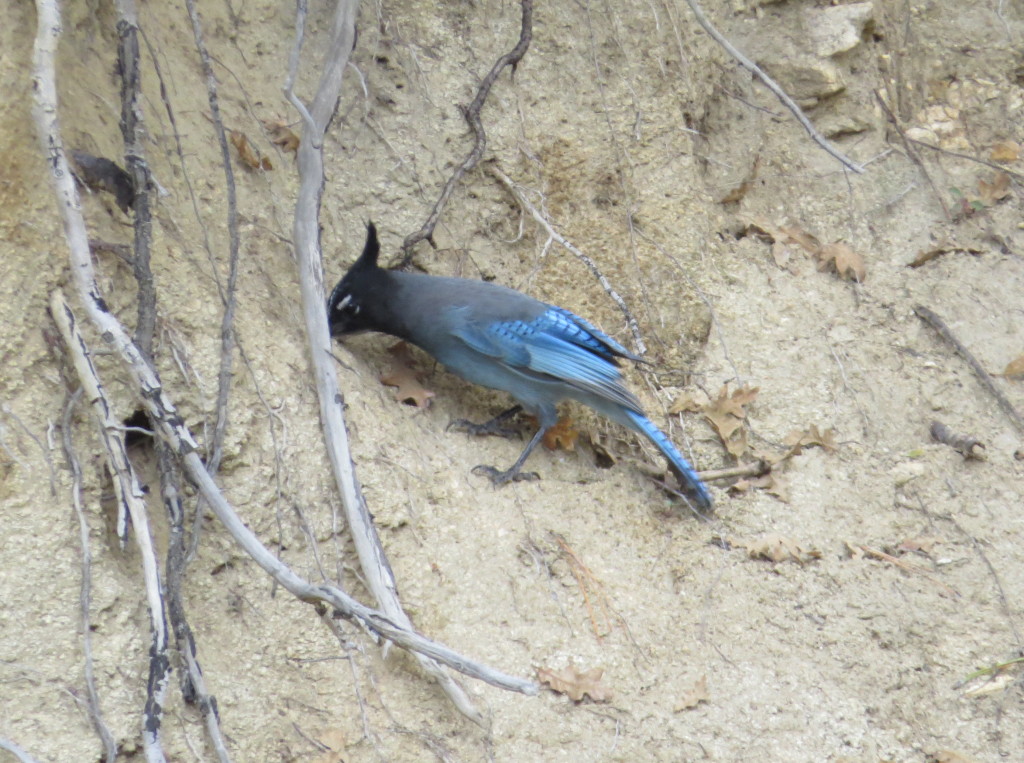
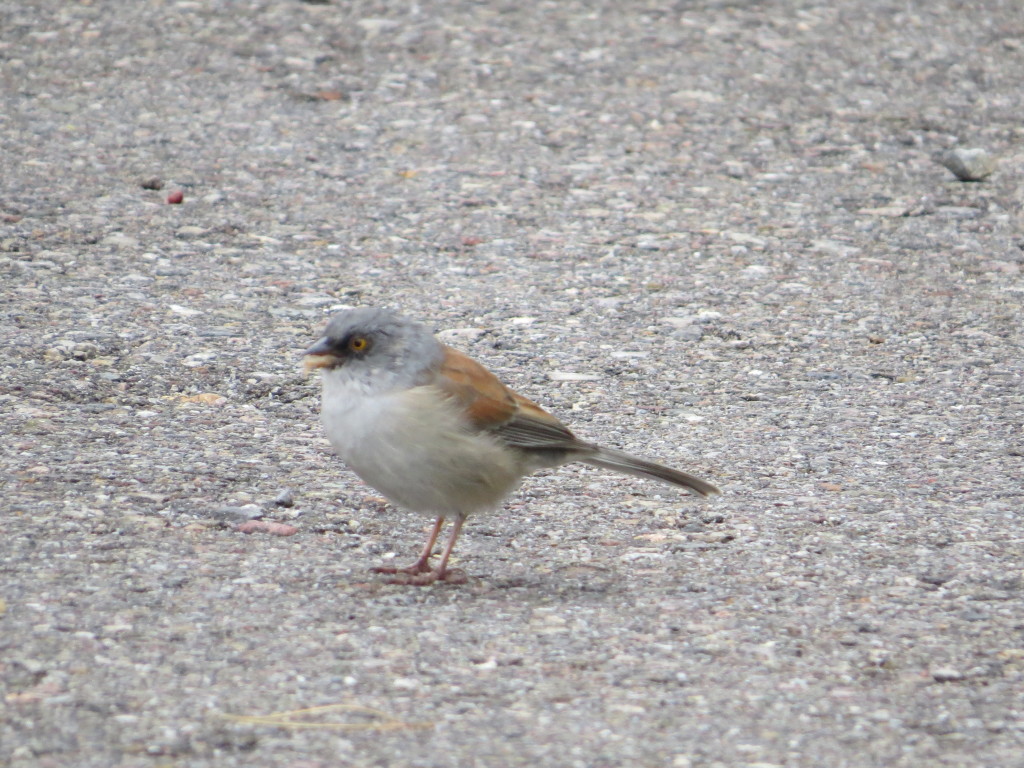
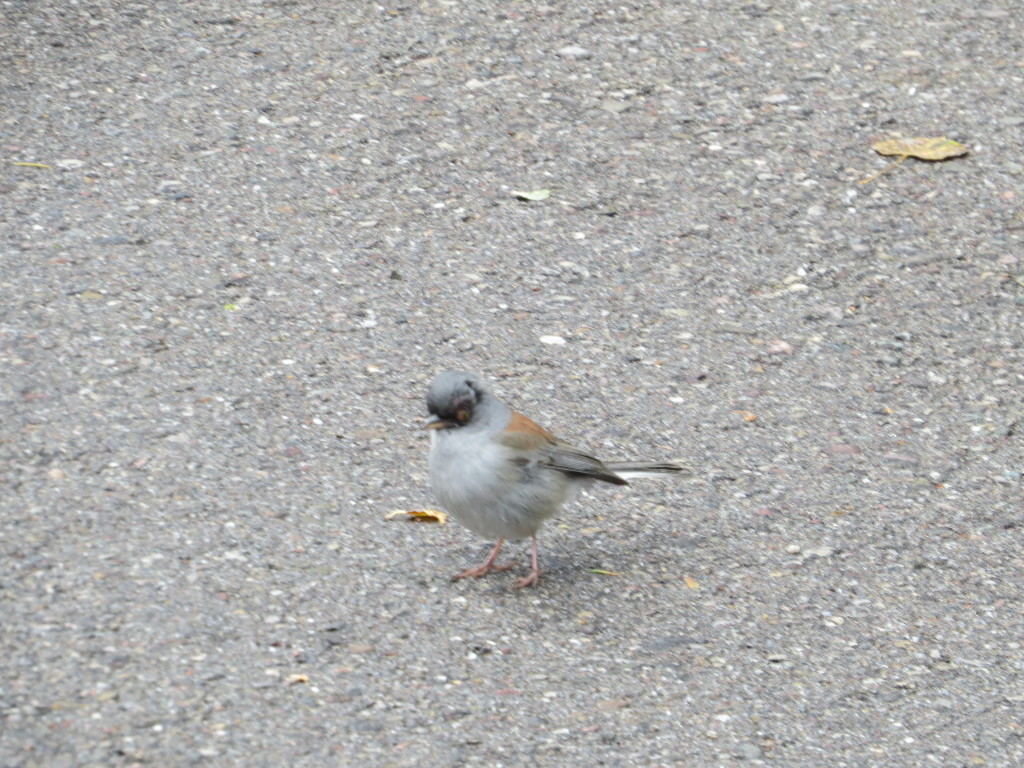
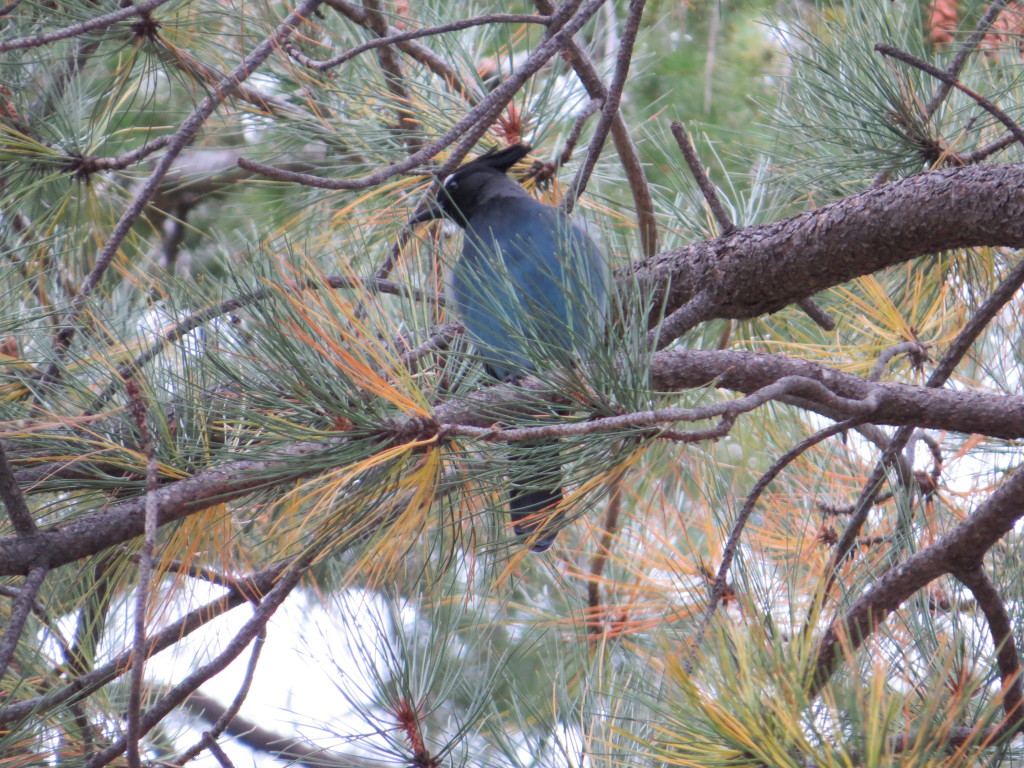
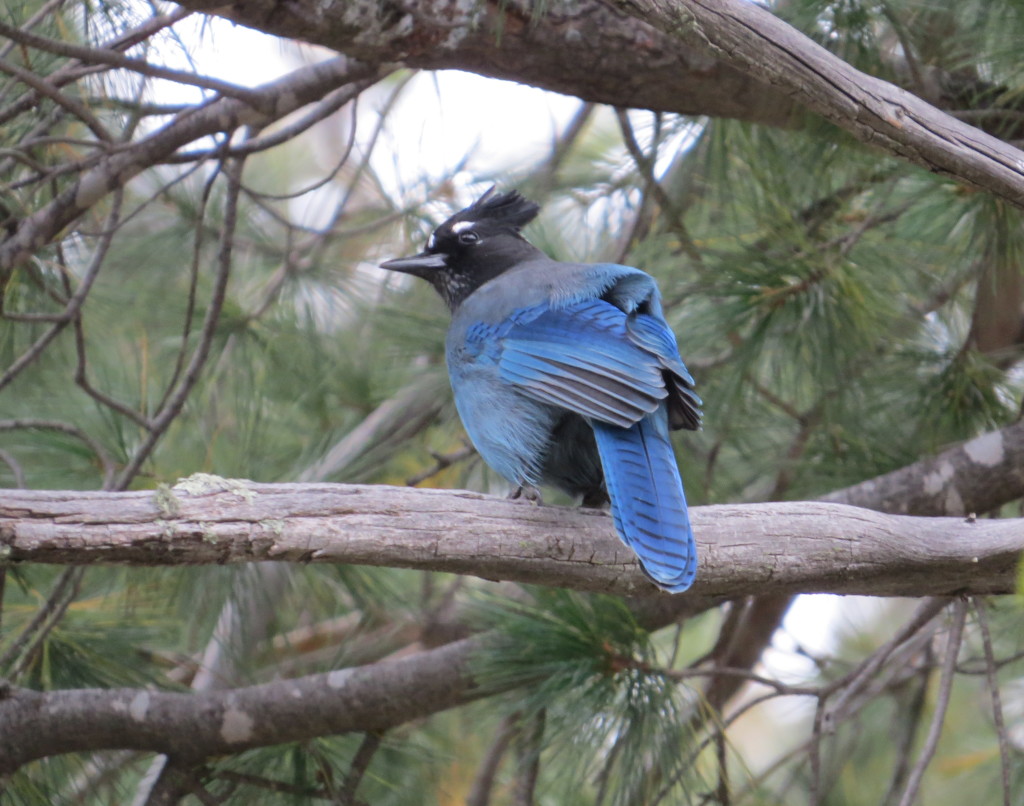 At least day two was going according to plan. Now, could we say the same for day three in the Huachuca Mountains where there was not only a Slate-throated Redstart but also SEVERAL Rufous-capped Warblers?
At least day two was going according to plan. Now, could we say the same for day three in the Huachuca Mountains where there was not only a Slate-throated Redstart but also SEVERAL Rufous-capped Warblers?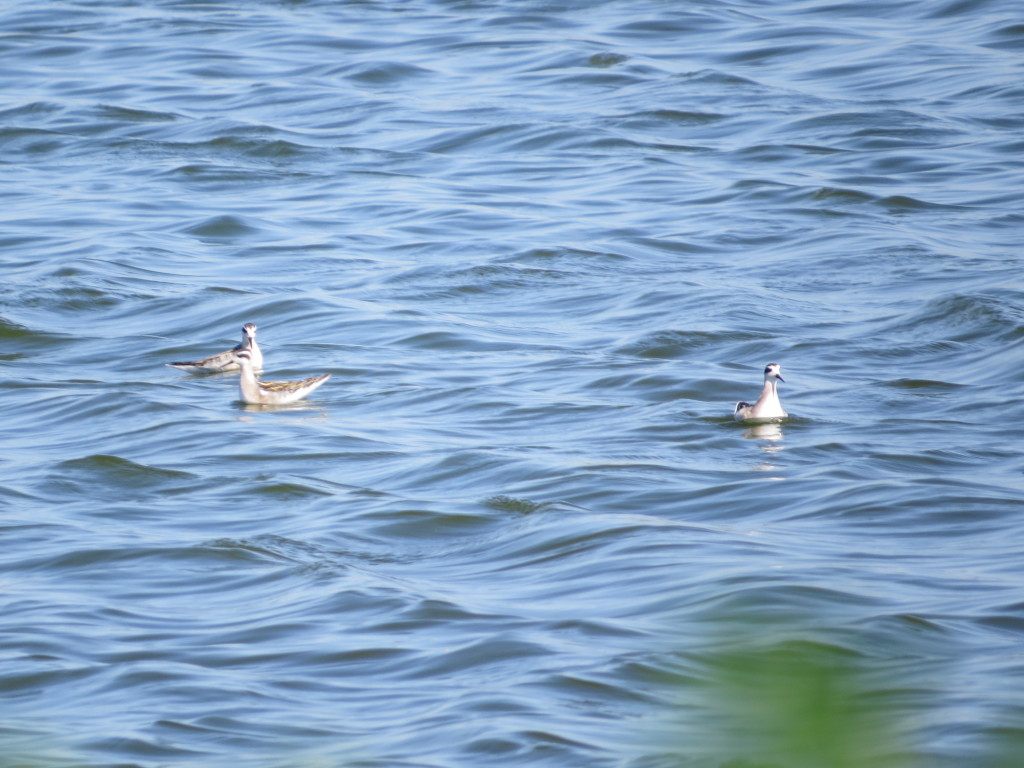
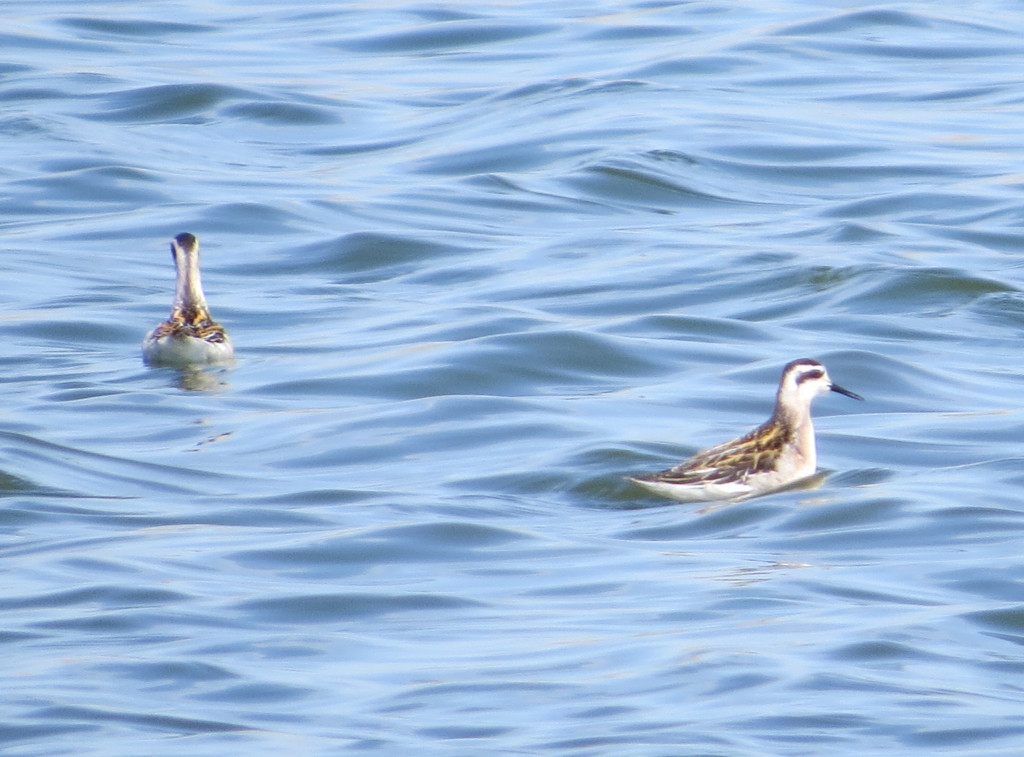
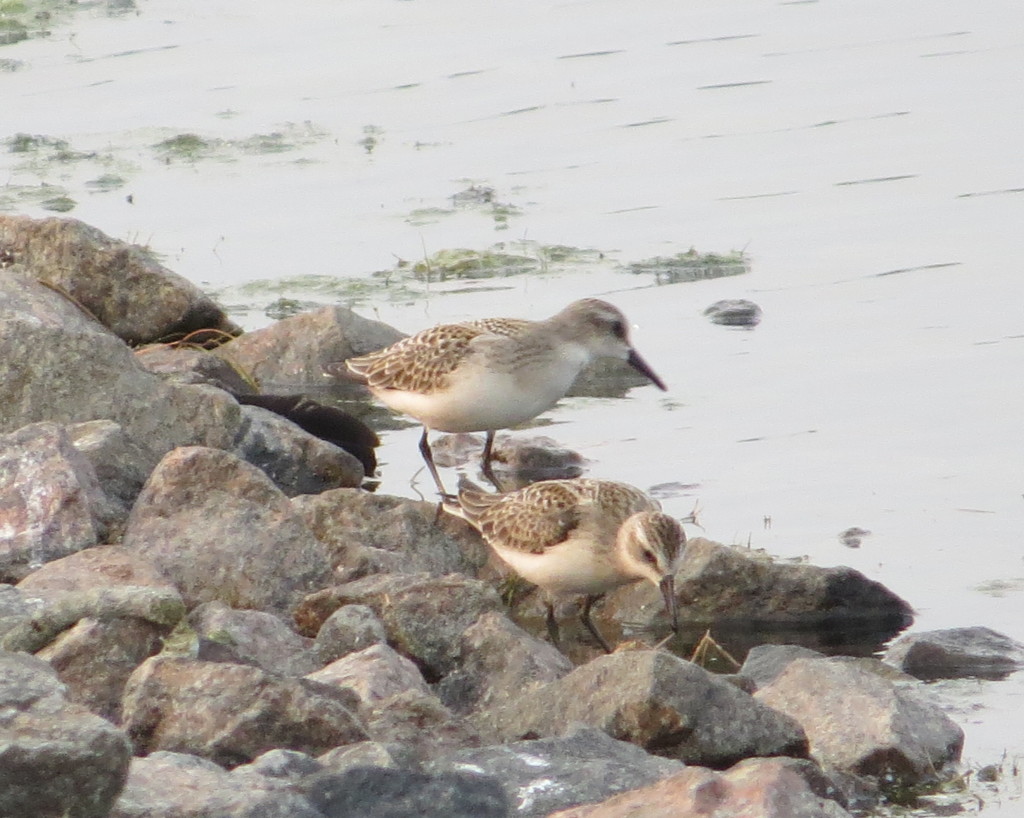
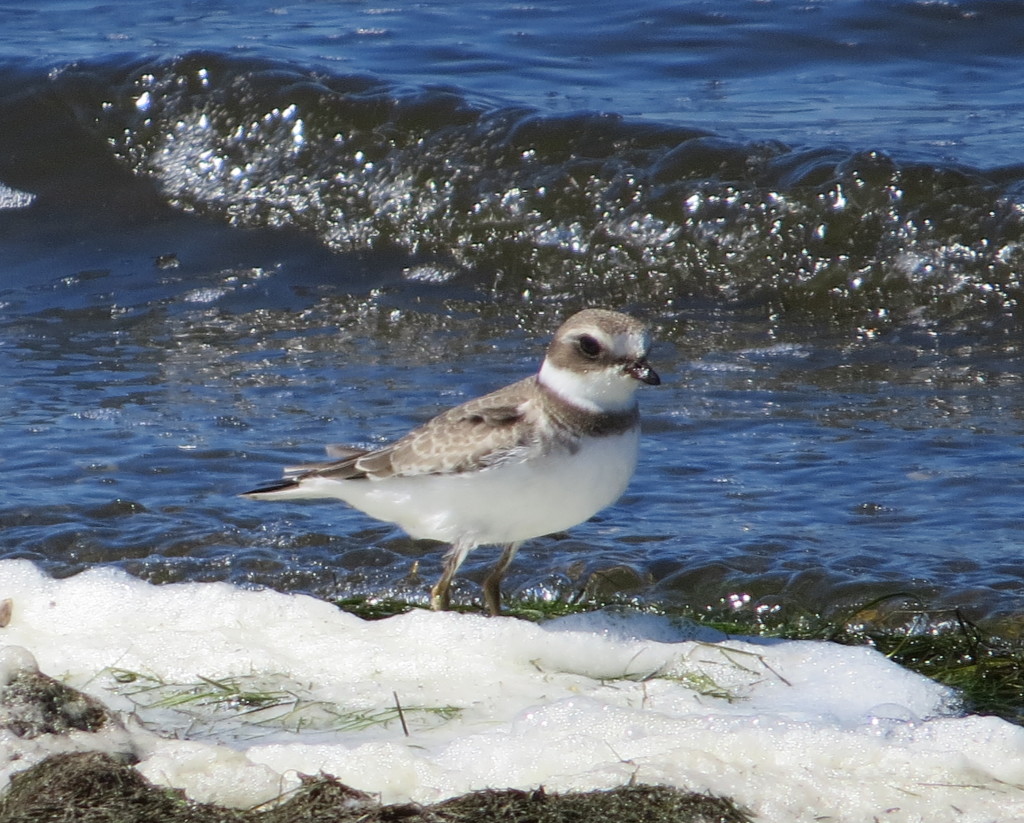
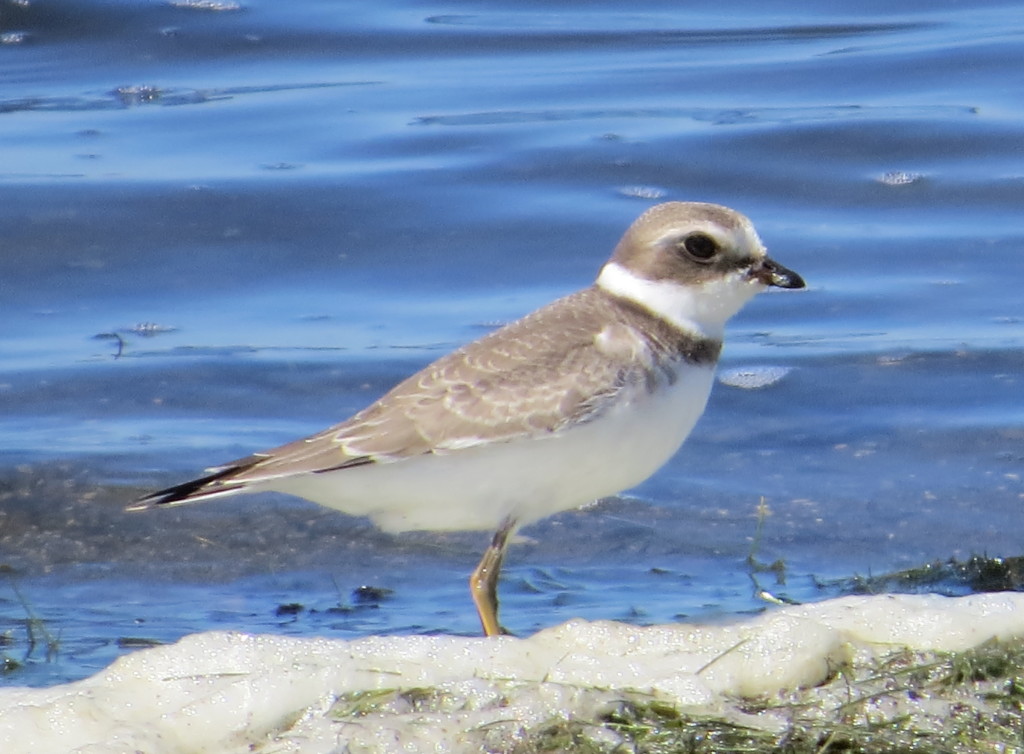
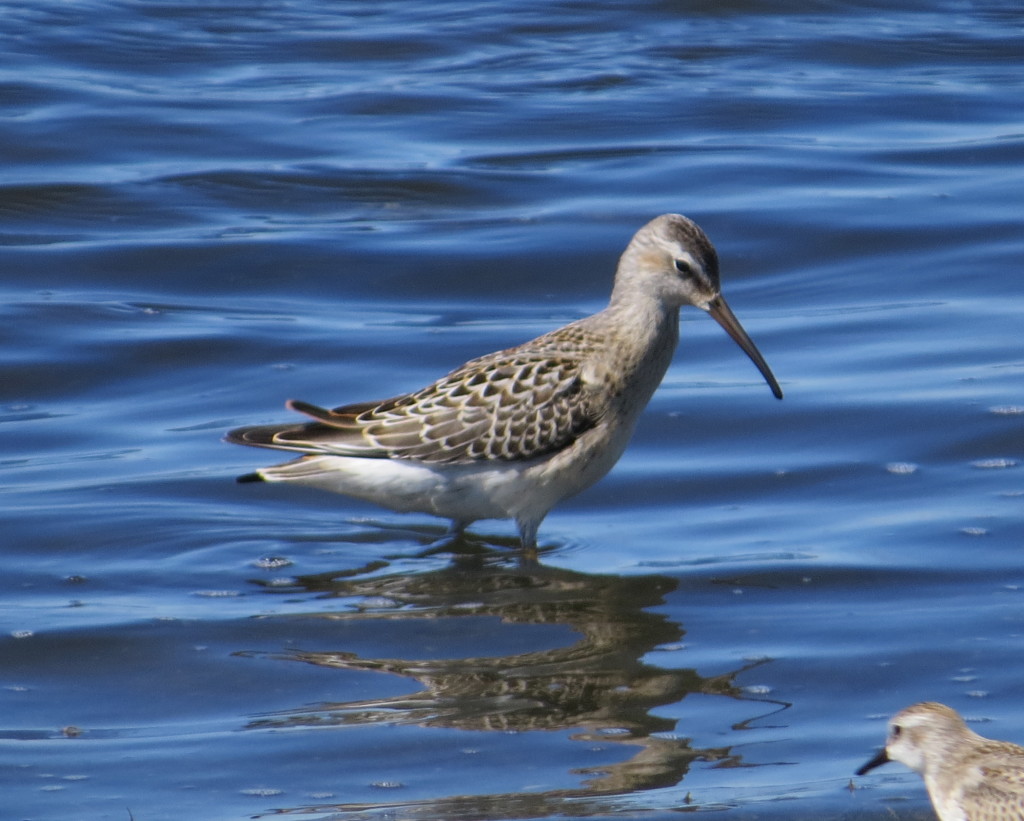
 The flooded drain tile intake that created this spot was only about two acres in size. When there is no other habitat around, that is all you need. At first, there was nothing but Killdeer and the odd Lesser Yellowlegs or two, harbingers of good things to come.
The flooded drain tile intake that created this spot was only about two acres in size. When there is no other habitat around, that is all you need. At first, there was nothing but Killdeer and the odd Lesser Yellowlegs or two, harbingers of good things to come.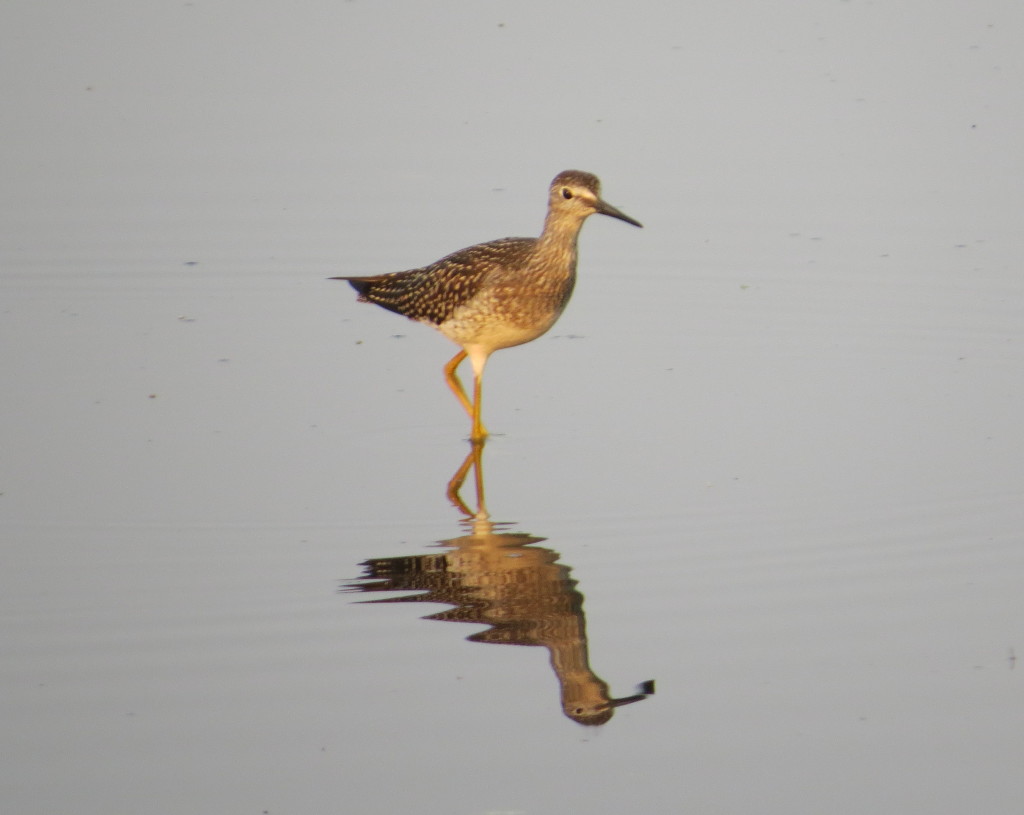 So this is the story of my accidental patch. Having it so close to home gave me the opportunity to check it multiple times a day, day after day. Before I knew it, I was becoming a devoted patch birder whose persistence started to pay dividends in things like a pair of dapper Baird’s Sandpipers.
So this is the story of my accidental patch. Having it so close to home gave me the opportunity to check it multiple times a day, day after day. Before I knew it, I was becoming a devoted patch birder whose persistence started to pay dividends in things like a pair of dapper Baird’s Sandpipers.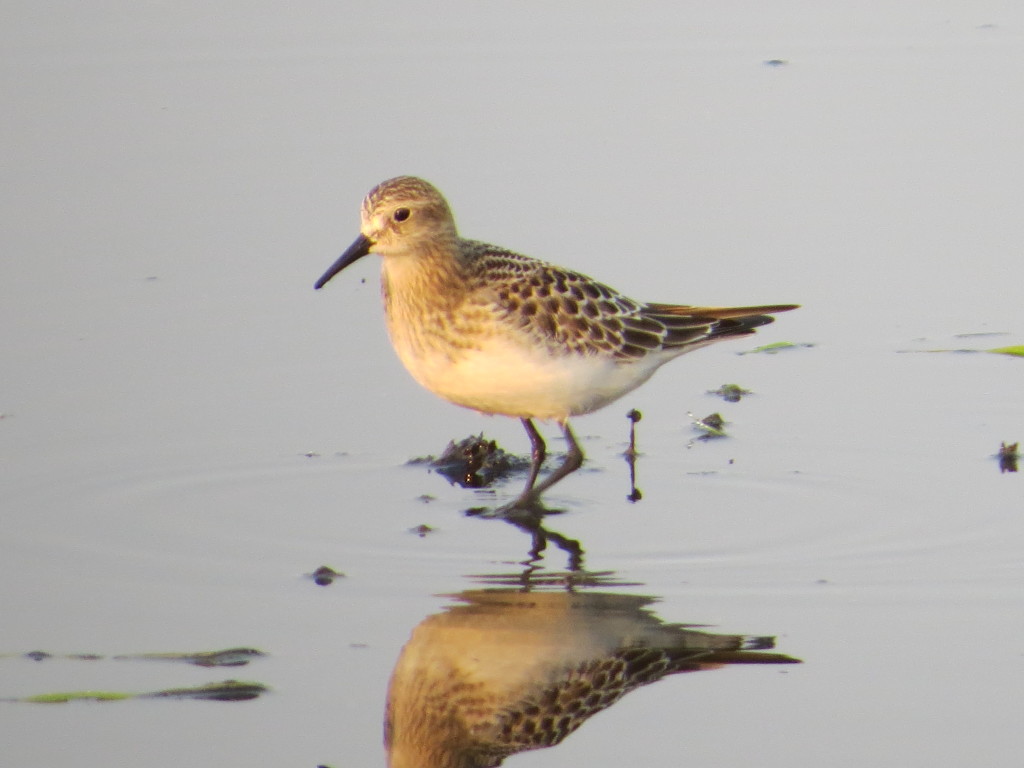
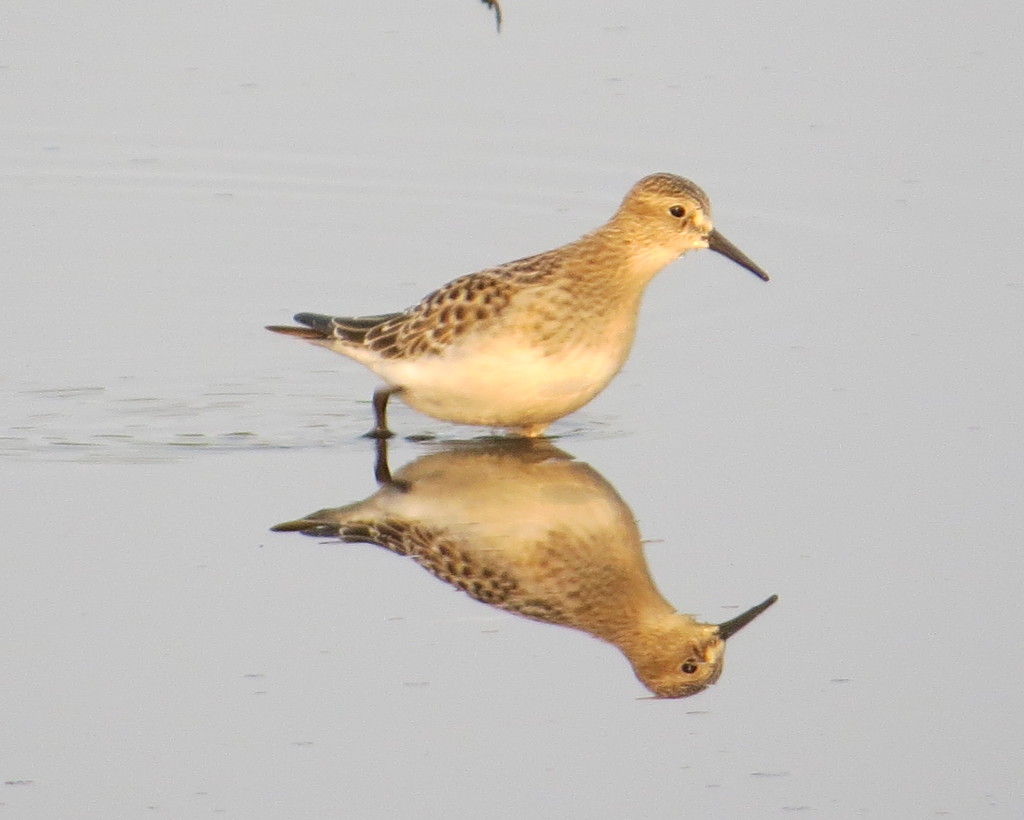
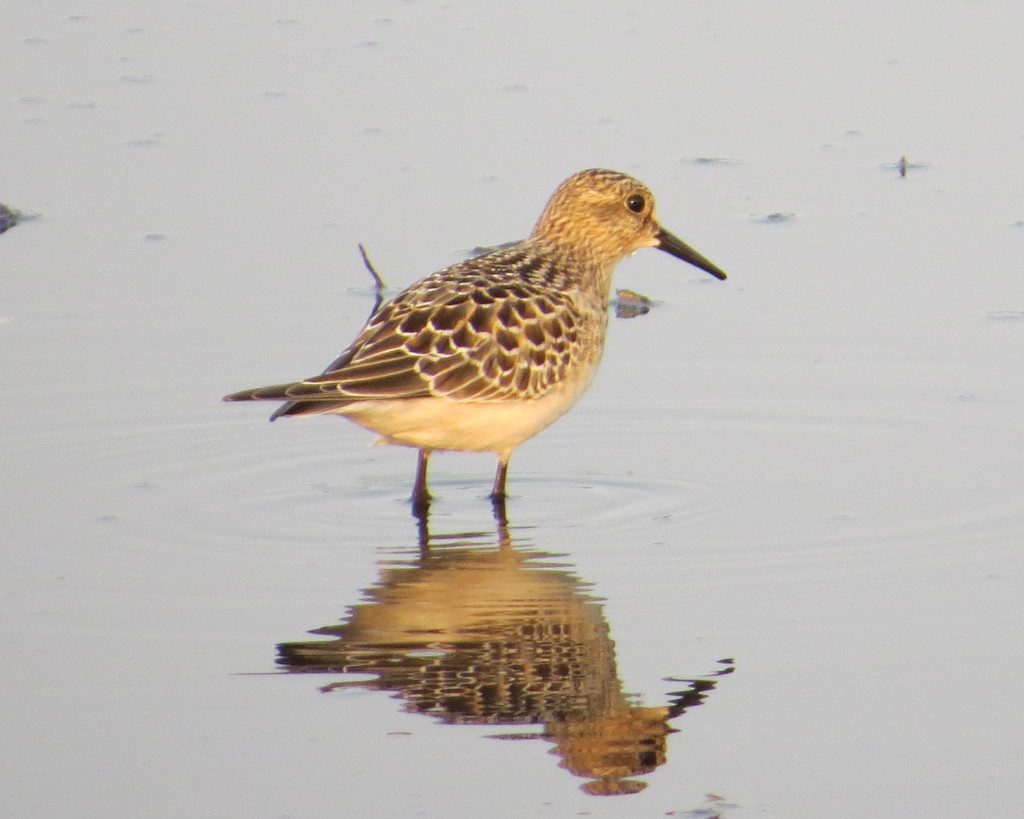
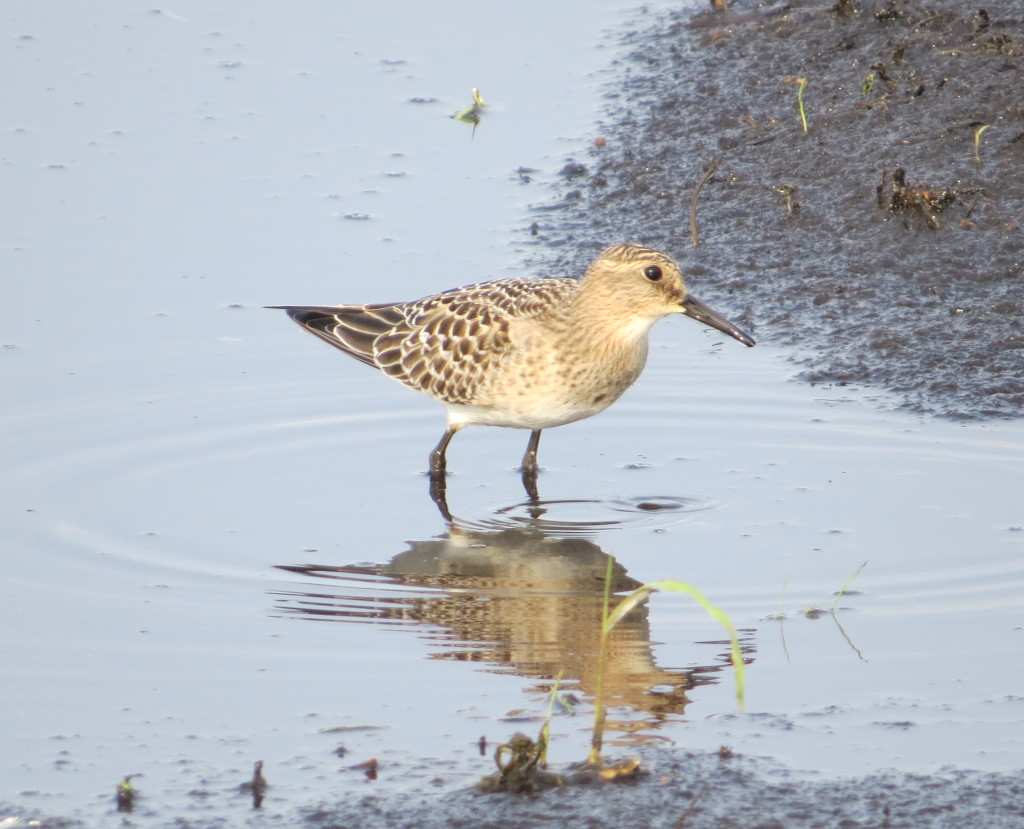 One of the benefits of a having a patch is that, in addition to looking for new birds that have joined the party, you can also keep tabs on the regulars, like the two Stilt Sandpipers that were there day in and day out.
One of the benefits of a having a patch is that, in addition to looking for new birds that have joined the party, you can also keep tabs on the regulars, like the two Stilt Sandpipers that were there day in and day out.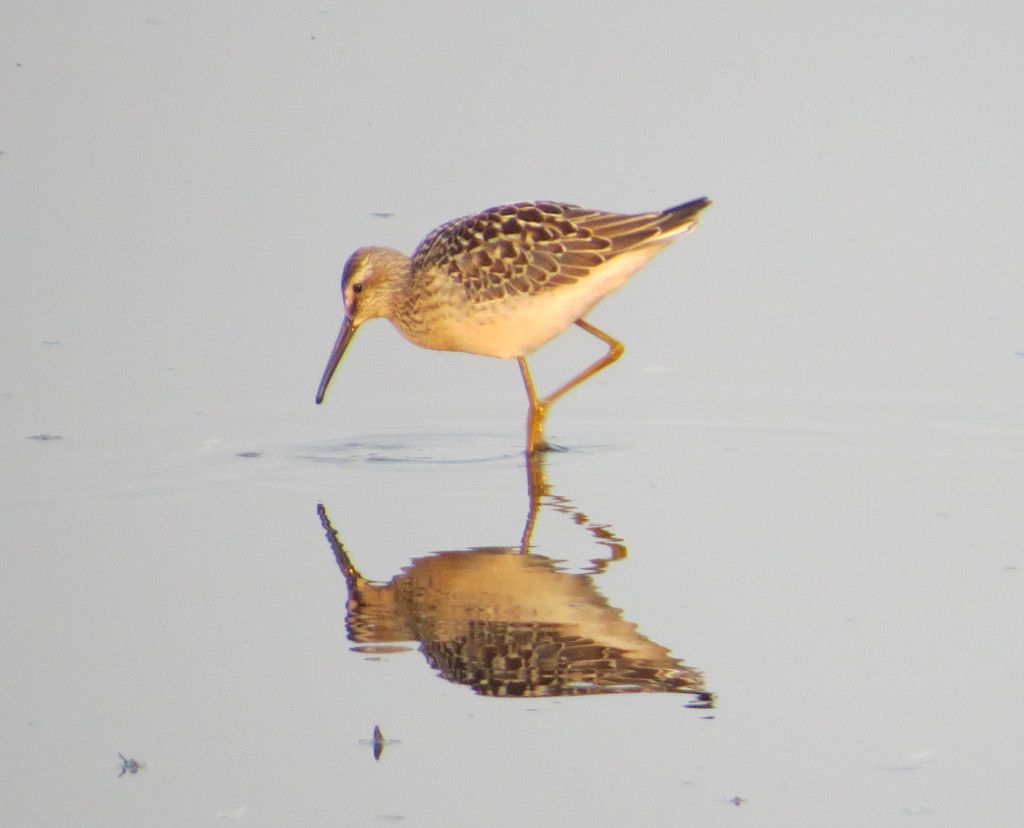
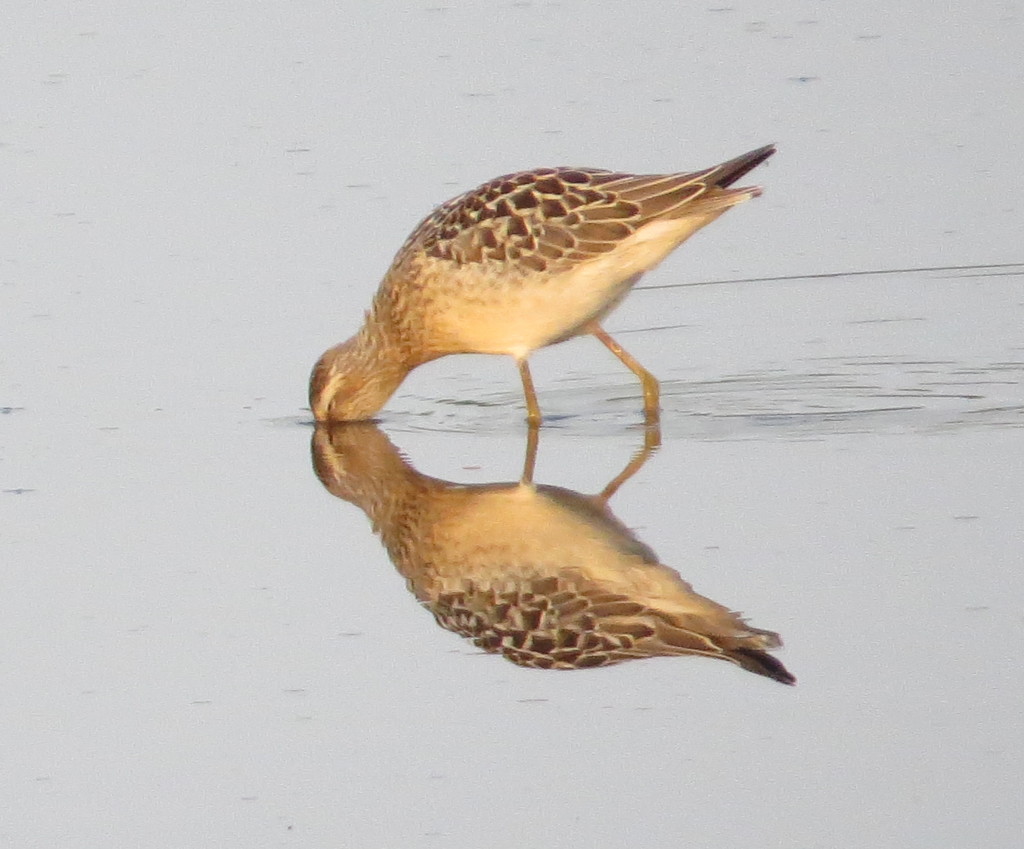
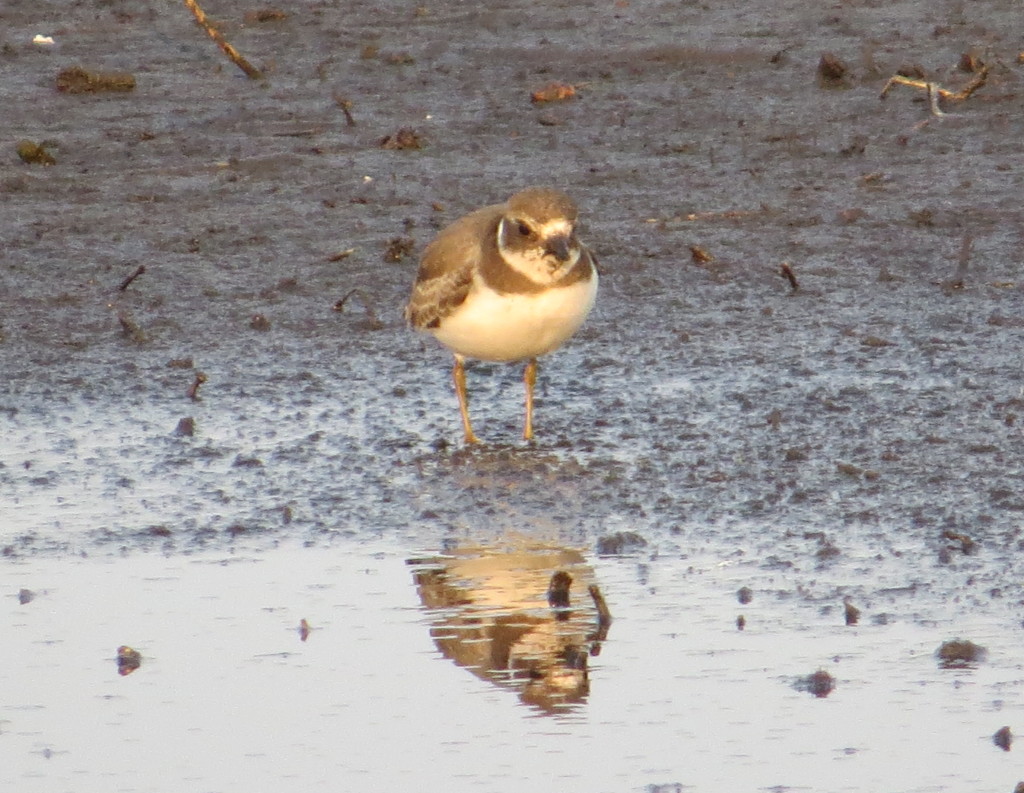
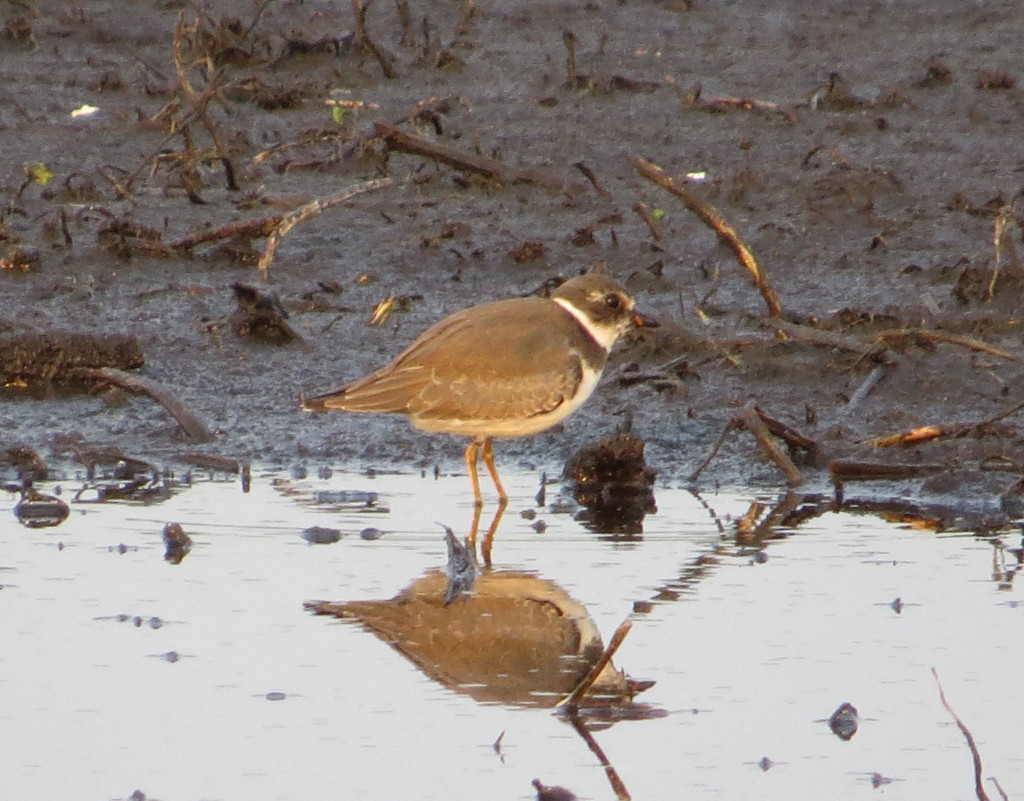
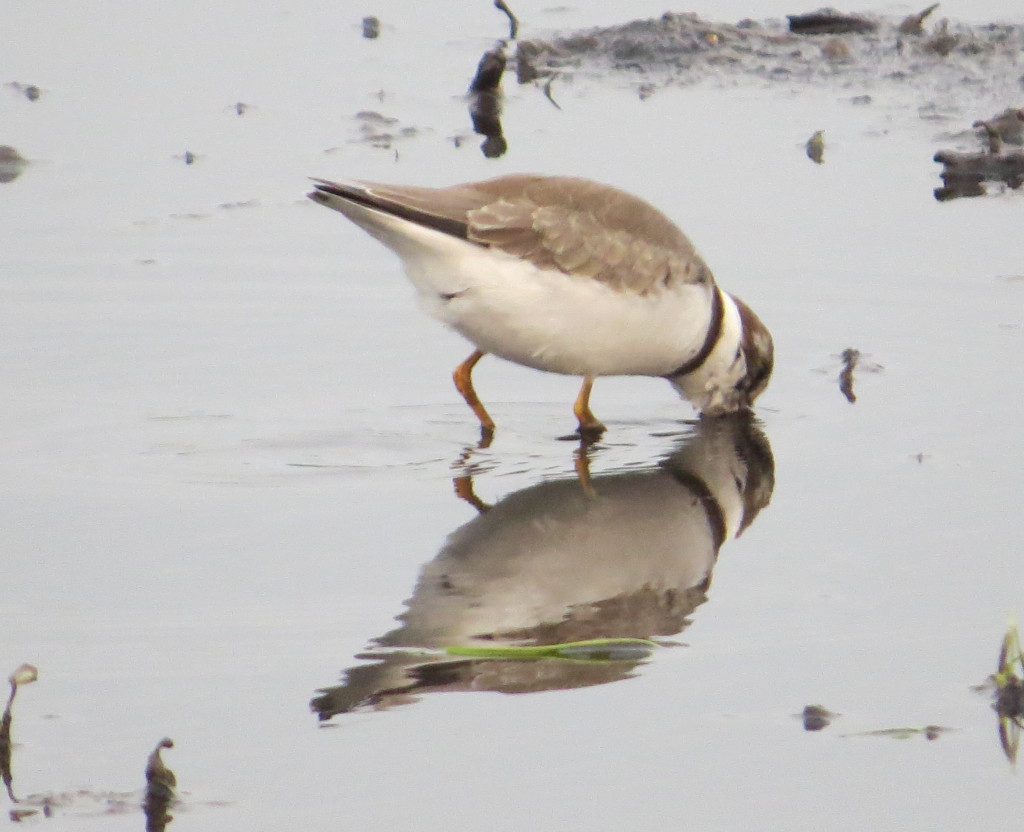 This patch I found turned out to be a great workshop on shorebird identification for myself. I had these birds close (30 feet or less) and in great light when I visited in the morning. I could clearly see subtle differences in coloration, differences in movements and behaviors, and relative size comparisons to other shorebirds. Even the ubiquitous Killdeer would sometimes do something interesting.
This patch I found turned out to be a great workshop on shorebird identification for myself. I had these birds close (30 feet or less) and in great light when I visited in the morning. I could clearly see subtle differences in coloration, differences in movements and behaviors, and relative size comparisons to other shorebirds. Even the ubiquitous Killdeer would sometimes do something interesting.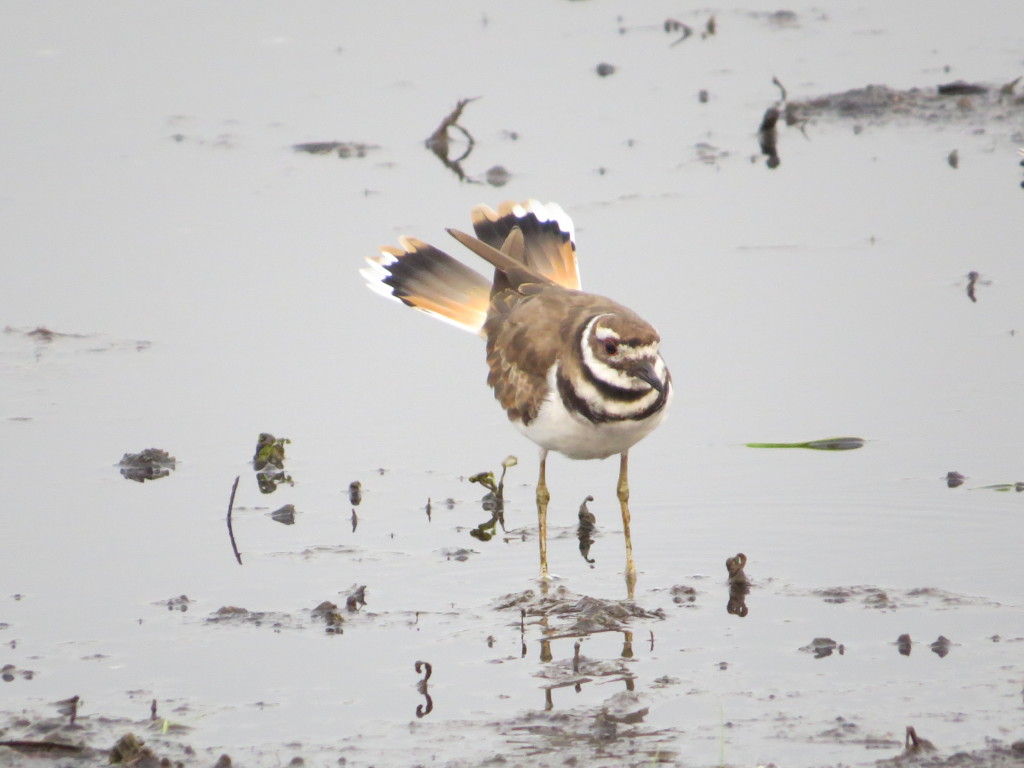
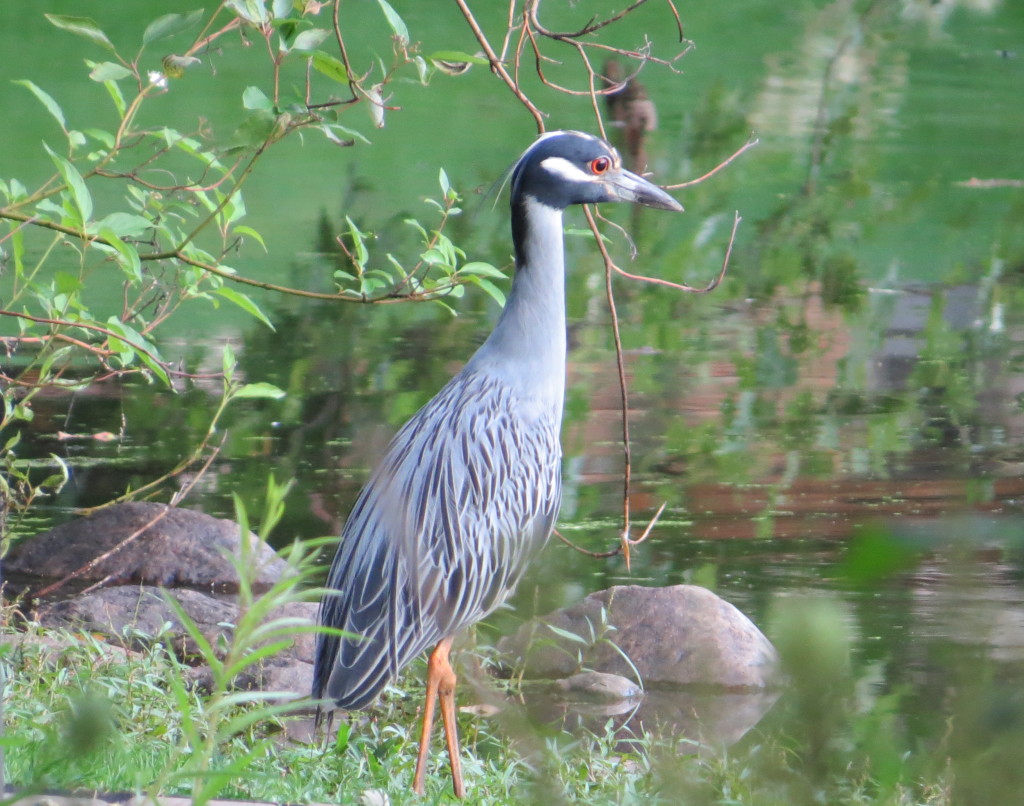
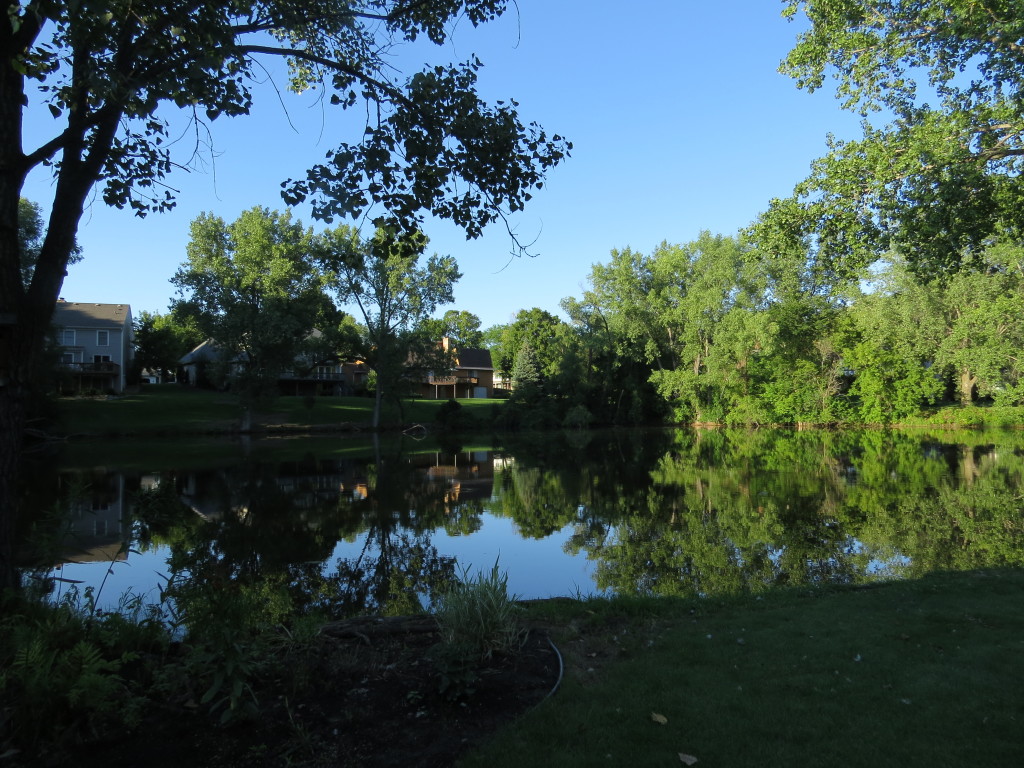 The two large backyard ponds and connecting channel had many shady, reclusive haunts and corners from the overgrown vegetation along the banks. And there were enough large snails and crayfish around for Herons to have a “Chubby Bunny” contest too.
The two large backyard ponds and connecting channel had many shady, reclusive haunts and corners from the overgrown vegetation along the banks. And there were enough large snails and crayfish around for Herons to have a “Chubby Bunny” contest too.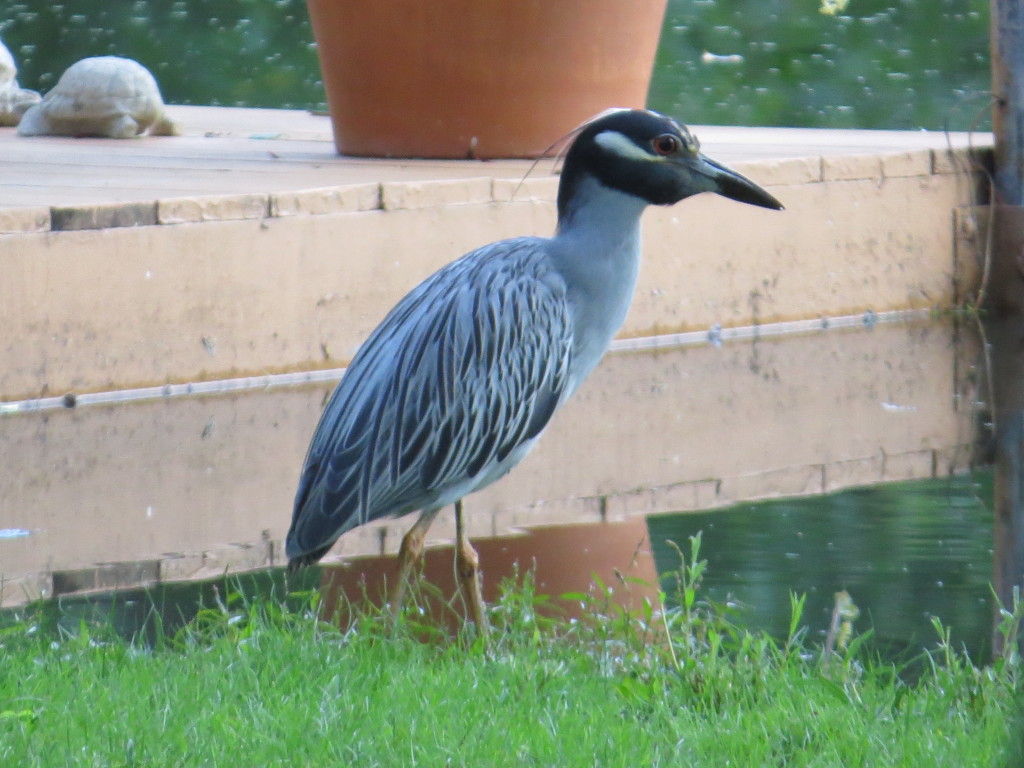 The announcement came in early enough in the evening that those lucky Twin Cities birders could swarm it immediately. My trip was too far to get there before dark. I was there the next day, though. Conveniently I had to go to the Cities that day anyway. Inconveniently, the time of day was wrong and the bird did not come out. So I made the 1.5 hour trek again the following day, only this time in the evening when the bird had been showing. It took nearly two hours of waiting, but just as I was about to call it quits, the bird flew in from its treetop roost to begin its foraging.
The announcement came in early enough in the evening that those lucky Twin Cities birders could swarm it immediately. My trip was too far to get there before dark. I was there the next day, though. Conveniently I had to go to the Cities that day anyway. Inconveniently, the time of day was wrong and the bird did not come out. So I made the 1.5 hour trek again the following day, only this time in the evening when the bird had been showing. It took nearly two hours of waiting, but just as I was about to call it quits, the bird flew in from its treetop roost to begin its foraging.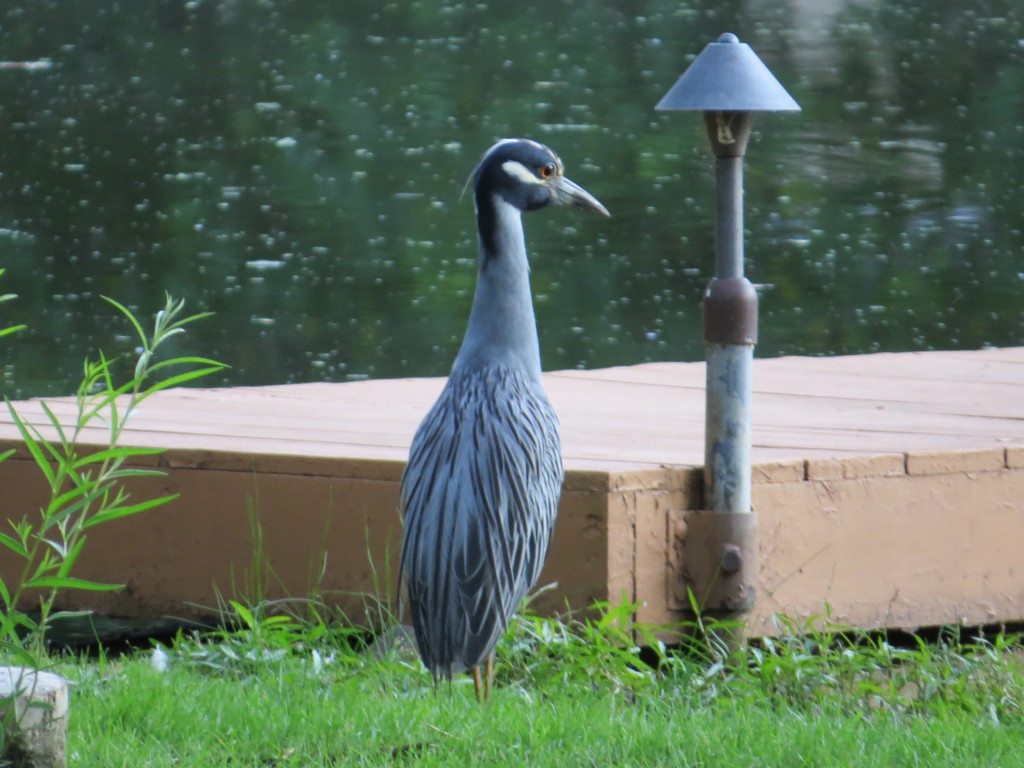
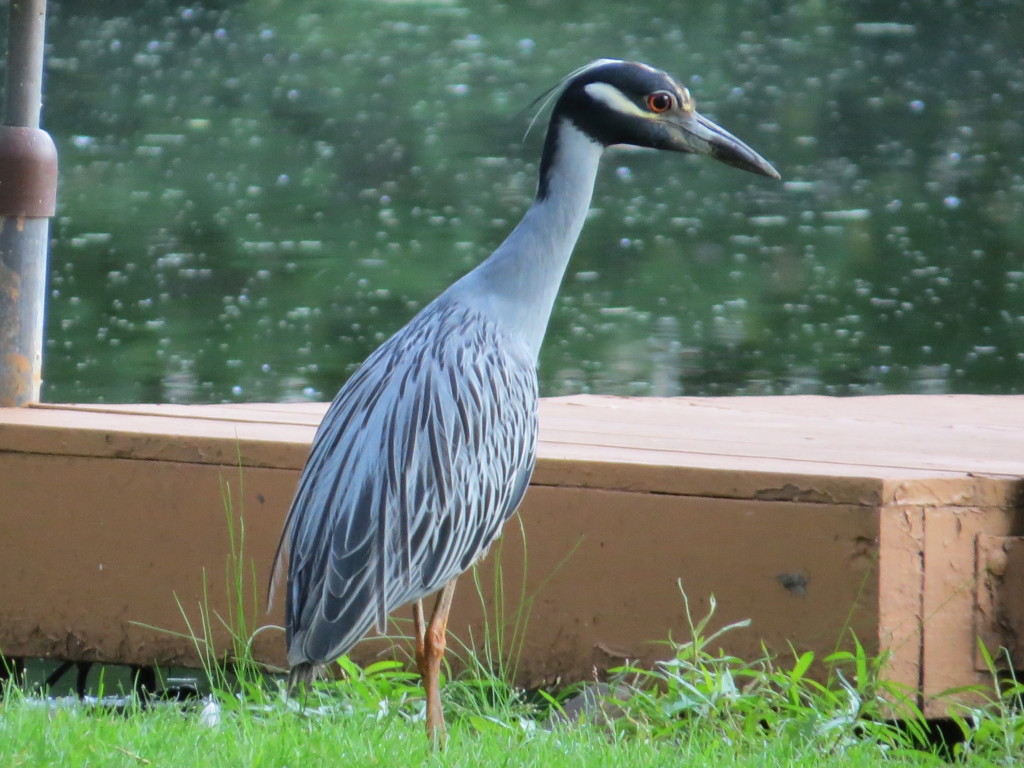
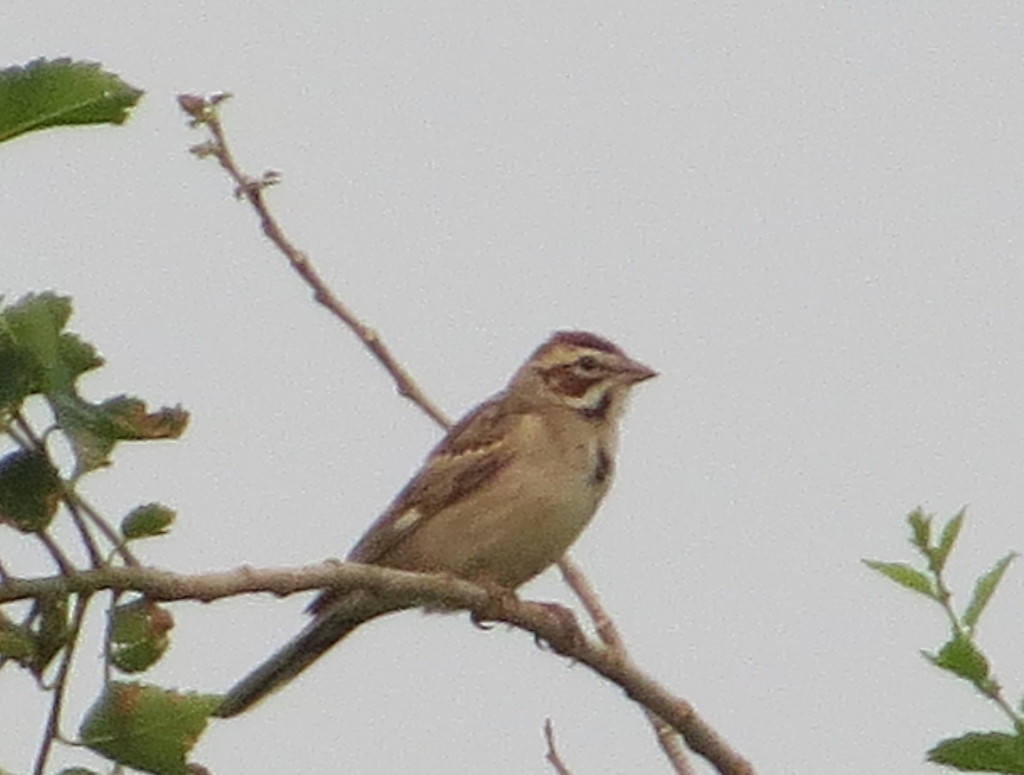
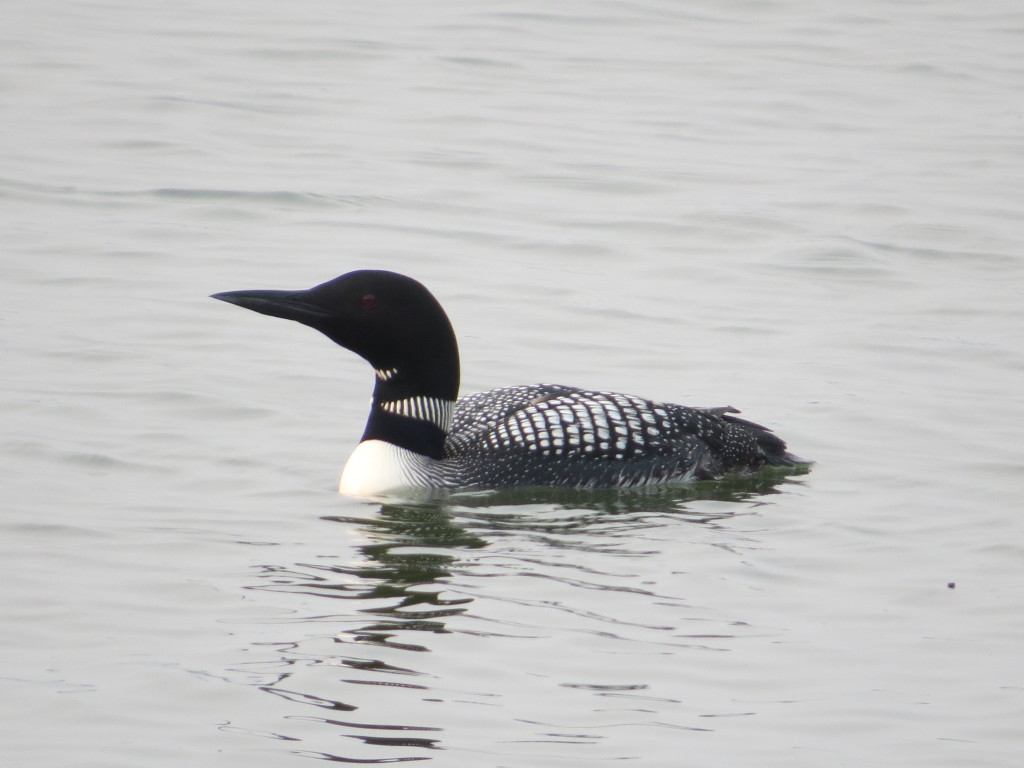 Hmmm…I wonder why they didn’t have a chick with them. It’s best not to think about that.
Hmmm…I wonder why they didn’t have a chick with them. It’s best not to think about that.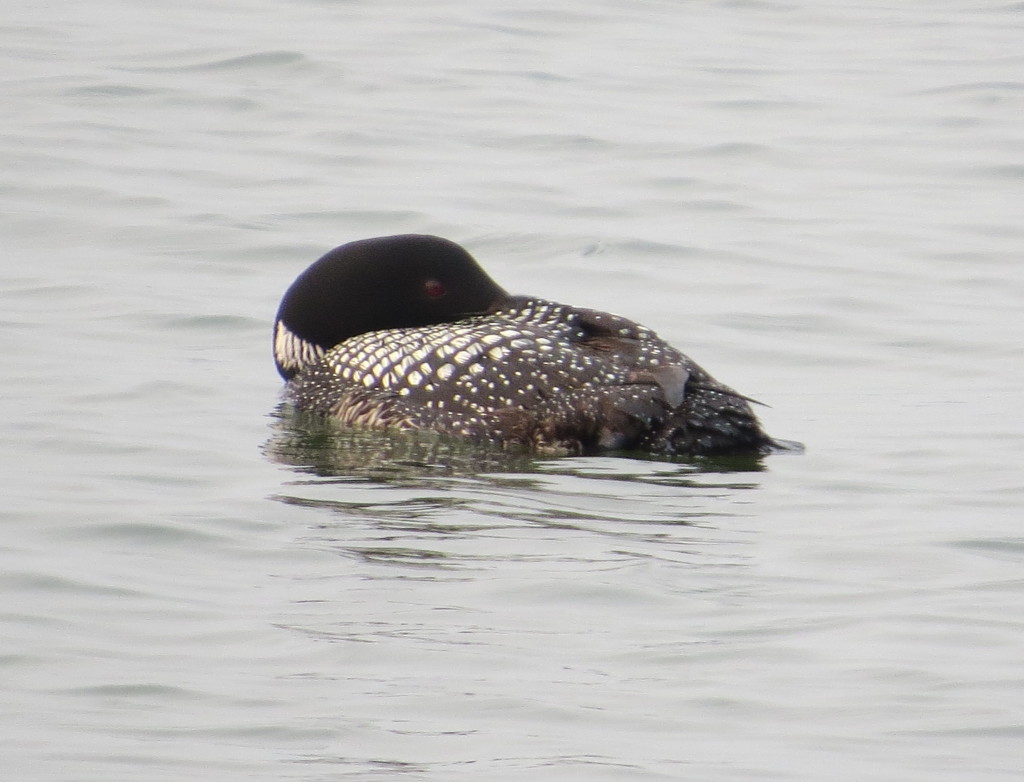 I got back to the house, happy with my morning, and was busy documenting my LASP sighting. Then an email came in that changed the course of my day. After nearly 15 hours of observing the mystery Kingbird over the course of a week, Bruce Fall clinched the ID after hearing the Kingbird vocalize when a Brown-headed Cowbird got too close for comfort. Tropical Kingbird. Holy smokes. This is a scarce bird in even the tiny corners of Arizona and Texas that it calls home. I told Melissa I would have to try to squeeze in a fast trip to the Cities to try for this one. This was a Minnesota first state record of a Tropical Kingbird after all.
I got back to the house, happy with my morning, and was busy documenting my LASP sighting. Then an email came in that changed the course of my day. After nearly 15 hours of observing the mystery Kingbird over the course of a week, Bruce Fall clinched the ID after hearing the Kingbird vocalize when a Brown-headed Cowbird got too close for comfort. Tropical Kingbird. Holy smokes. This is a scarce bird in even the tiny corners of Arizona and Texas that it calls home. I told Melissa I would have to try to squeeze in a fast trip to the Cities to try for this one. This was a Minnesota first state record of a Tropical Kingbird after all.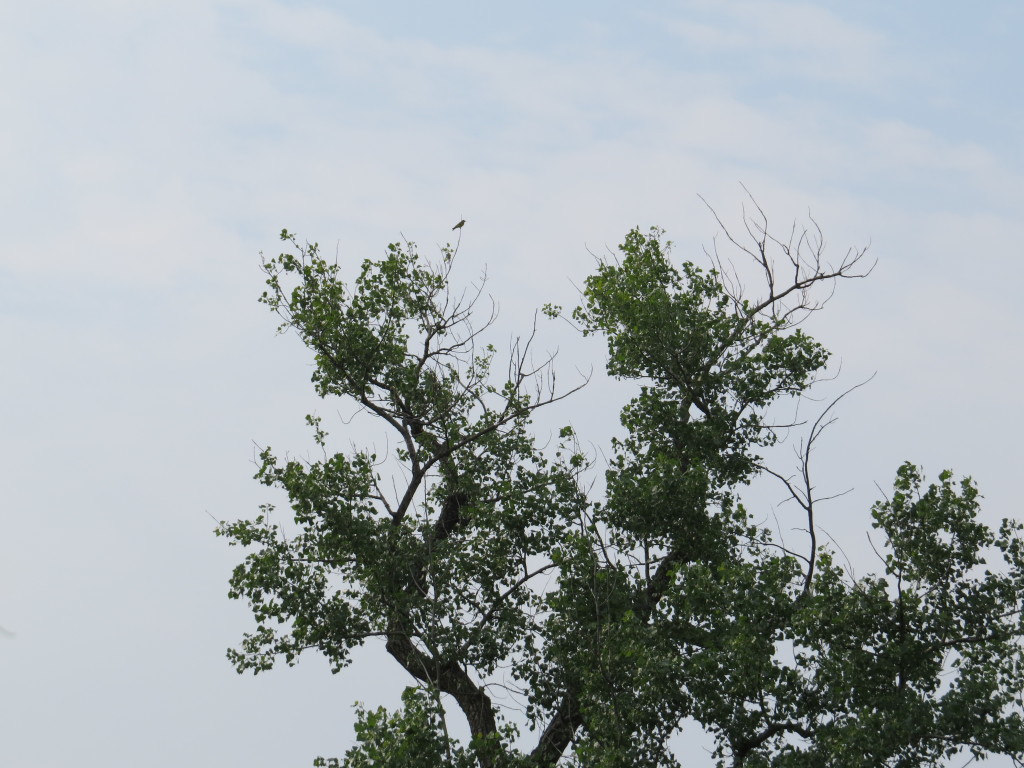
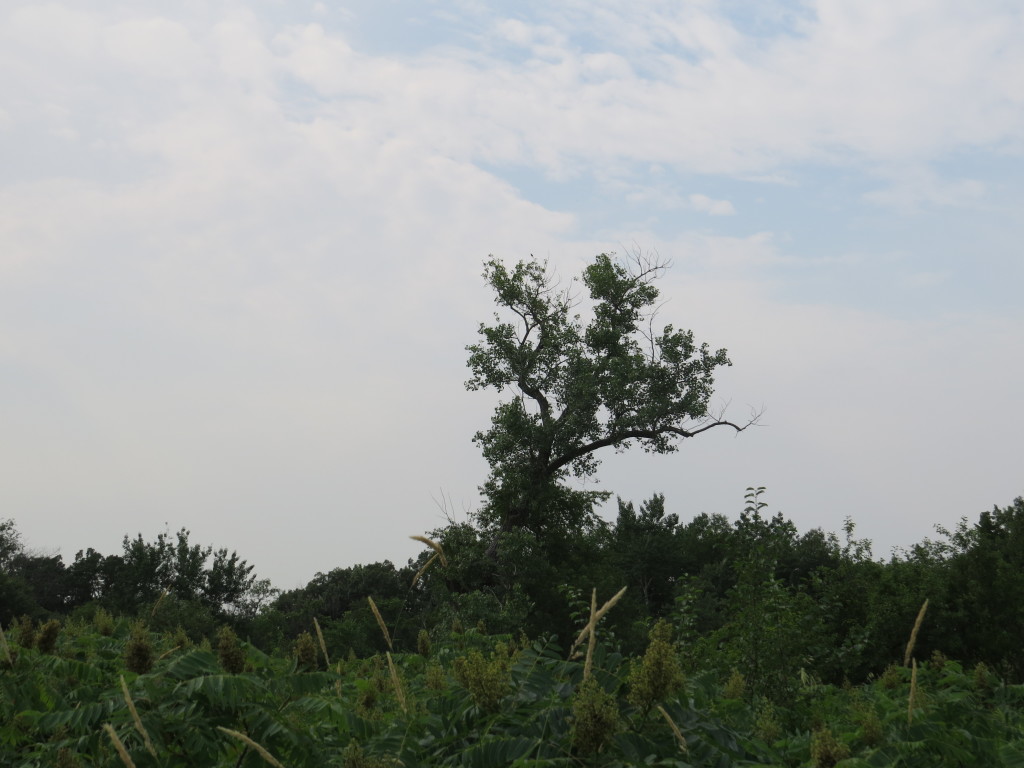
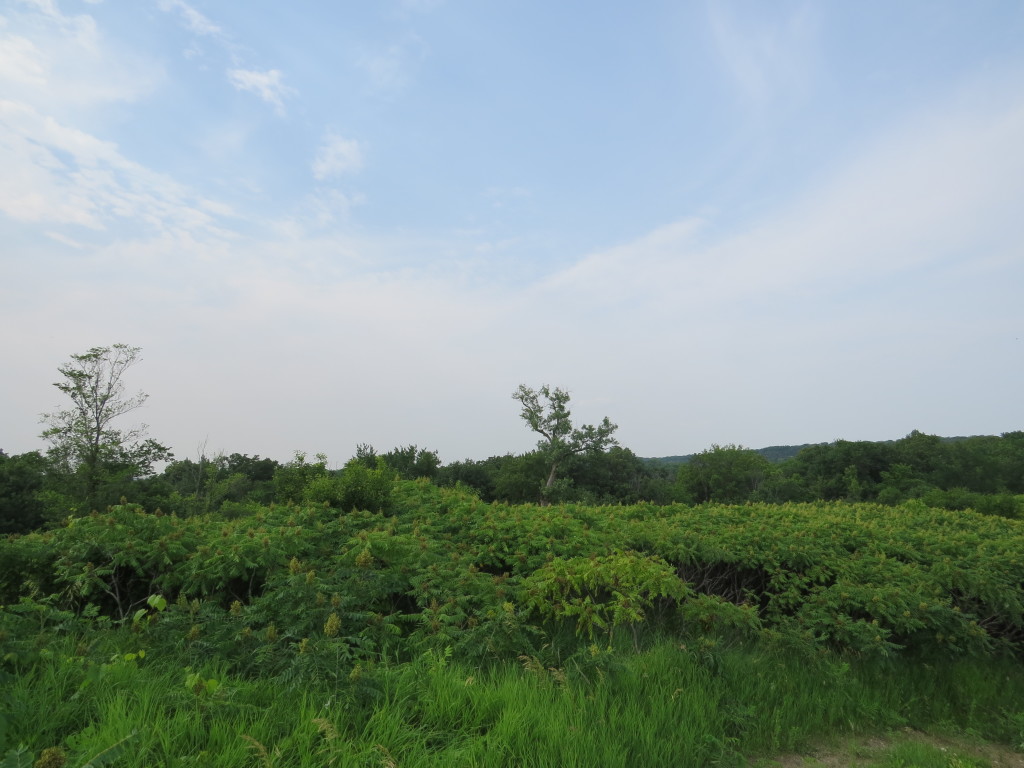 The bird was out there a ways, so I did the best I could for photos.
The bird was out there a ways, so I did the best I could for photos.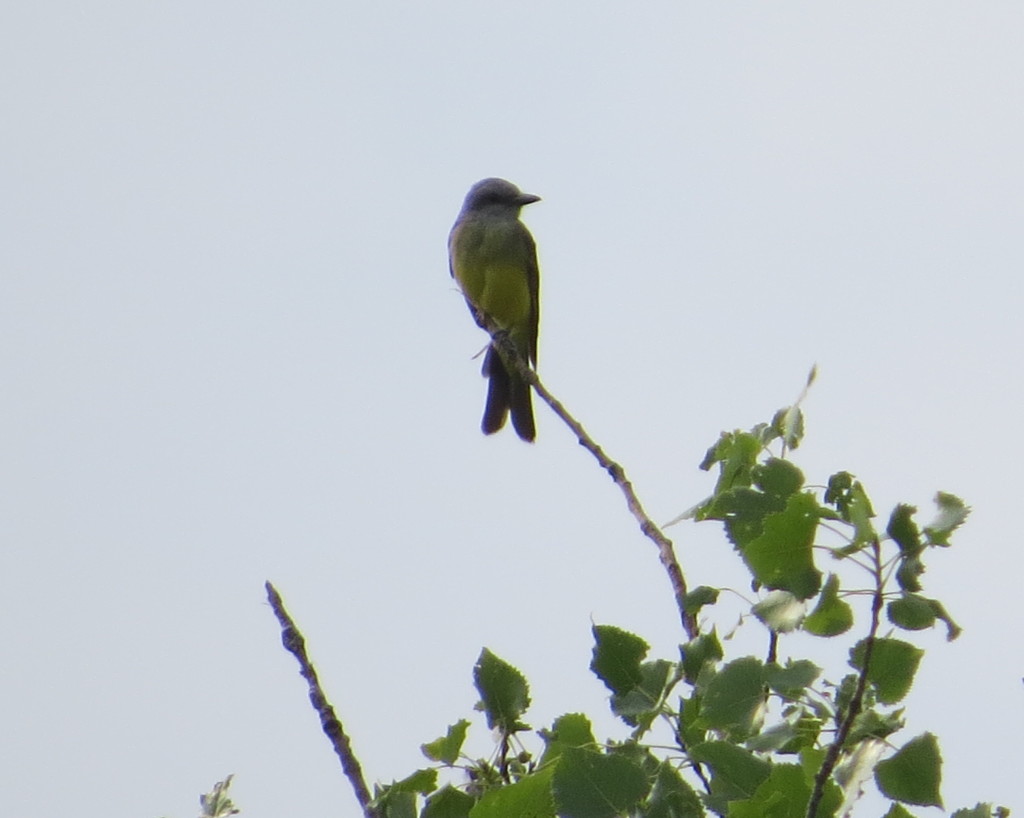
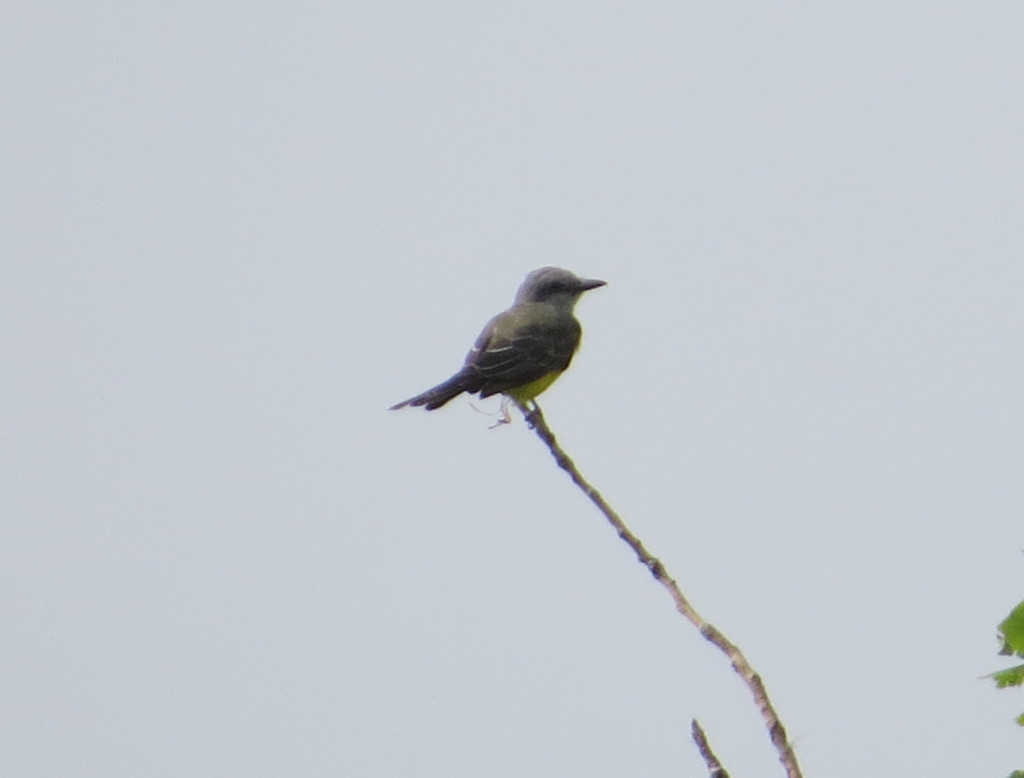 I showed the kids the bird on the camera’s LCD. With another check mark for his list, Evan was out of there (and Melissa and Marin too).
I showed the kids the bird on the camera’s LCD. With another check mark for his list, Evan was out of there (and Melissa and Marin too).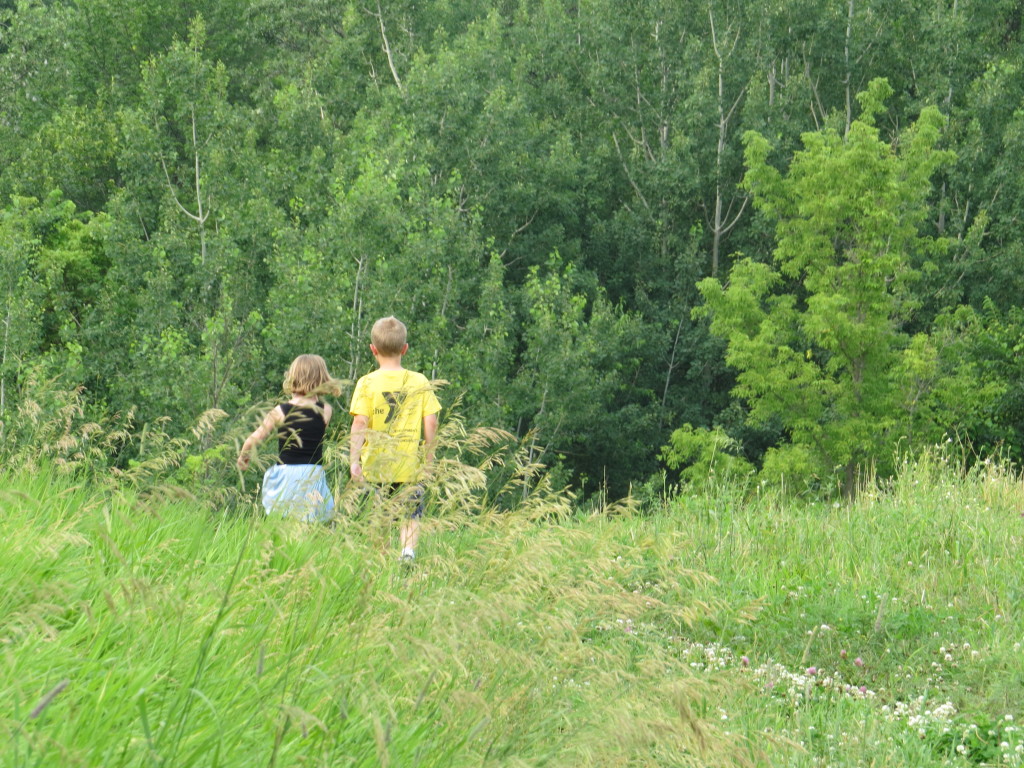 I was hoping for better photos, so I stayed for a little while. After ten minutes of observation, something incredible happened that two other birders present and myself witnessed: the Tropical Kingbird stretched out its neck, pulled its wings behind its back, and vocalized! It was a 1-second higher-pitched trill. I later listened to the sounds of TRKI on the iPod, and it was a match for the first call listed. I felt bad for all the birders that have watched and watched this bird just waiting for such a moment. Luck of the draw I guess. Just like when something even better then happened–the Kingbird flew to a low perch right on the path! Matt Stratmoen, his 600 mm lense, and I hustled down the path to get near it. We’d snap some photos, creep closer, snap, creep, snap, etc. We eventually got within 100 feet or less.
I was hoping for better photos, so I stayed for a little while. After ten minutes of observation, something incredible happened that two other birders present and myself witnessed: the Tropical Kingbird stretched out its neck, pulled its wings behind its back, and vocalized! It was a 1-second higher-pitched trill. I later listened to the sounds of TRKI on the iPod, and it was a match for the first call listed. I felt bad for all the birders that have watched and watched this bird just waiting for such a moment. Luck of the draw I guess. Just like when something even better then happened–the Kingbird flew to a low perch right on the path! Matt Stratmoen, his 600 mm lense, and I hustled down the path to get near it. We’d snap some photos, creep closer, snap, creep, snap, etc. We eventually got within 100 feet or less.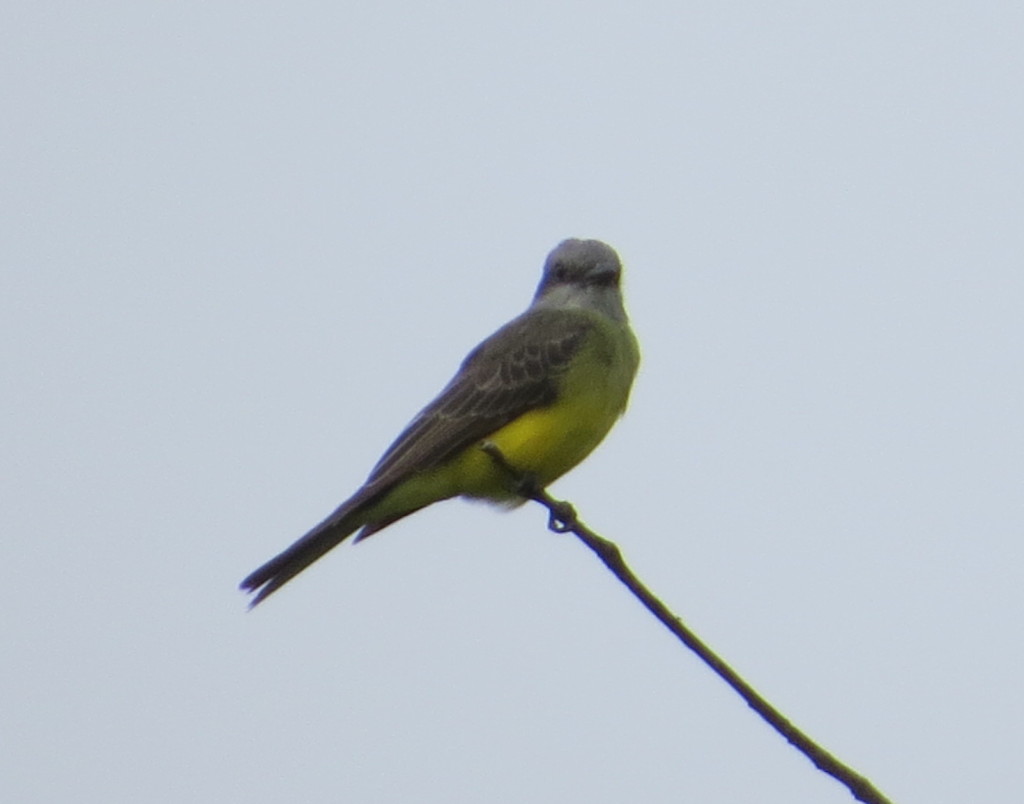 Matt is the one who took that amazing image of the Orr Black-backed Woodpeckers with the mom and dad in profile perched on either side of the nest hole with the baby sticking his head out screaming. Amazing image. It’s on
Matt is the one who took that amazing image of the Orr Black-backed Woodpeckers with the mom and dad in profile perched on either side of the nest hole with the baby sticking his head out screaming. Amazing image. It’s on 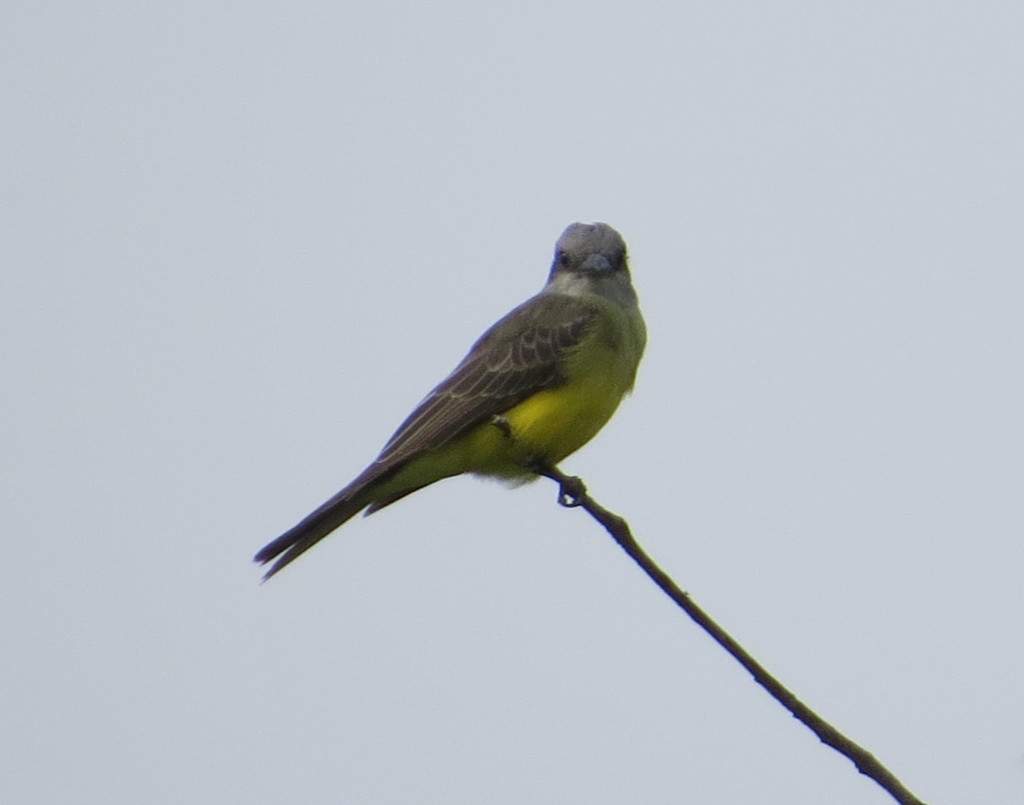 We won’t talk about the quality difference between Matt’s photos and mine of the Tropical Kingbird from the same distance. But I can live with mine. The views were phenomenal and more than I hoped for.
We won’t talk about the quality difference between Matt’s photos and mine of the Tropical Kingbird from the same distance. But I can live with mine. The views were phenomenal and more than I hoped for.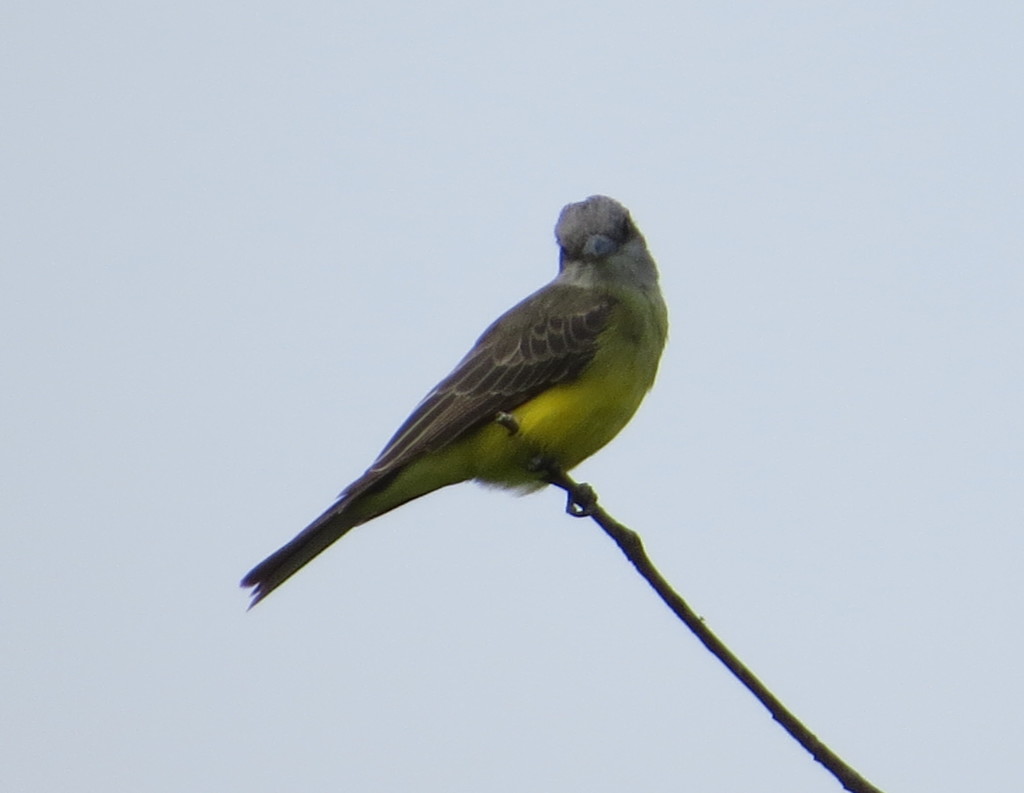
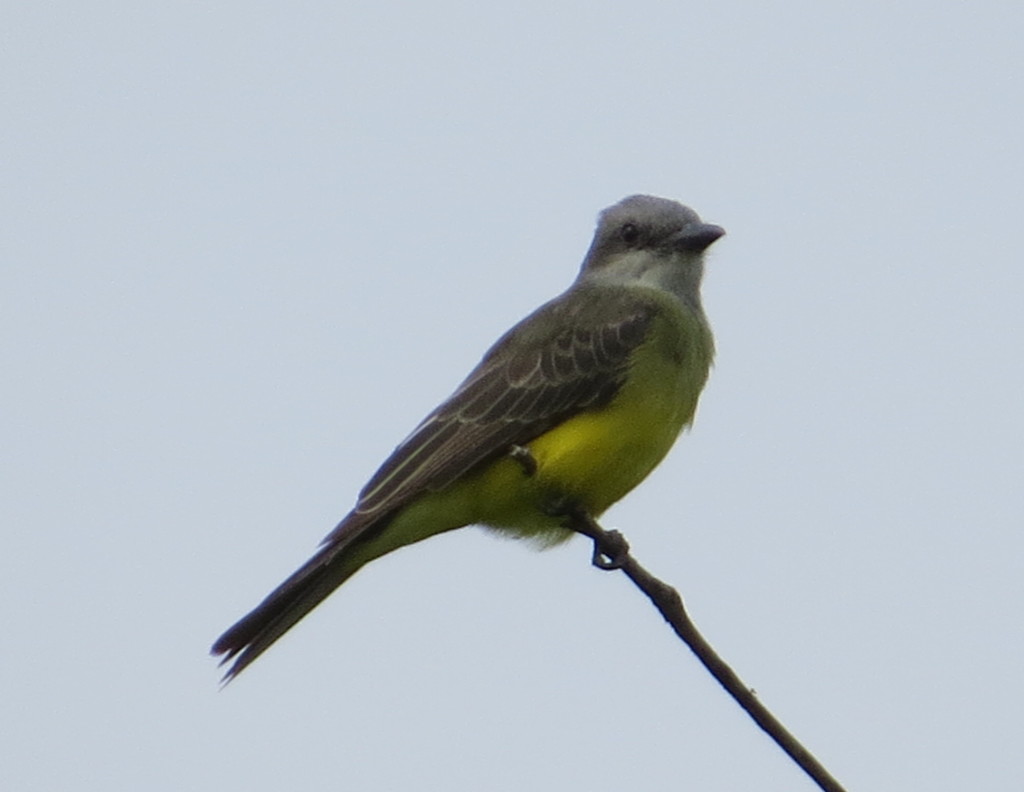 The Kingbird had enough of this low perch and went back to his tall, remote Cottonwood. I got what I came for and then some, so I hustled back to the van after just a half hour of observation. After all, Swedish meatballs and a fight loading Ikea furniture in the van were calling my name.
The Kingbird had enough of this low perch and went back to his tall, remote Cottonwood. I got what I came for and then some, so I hustled back to the van after just a half hour of observation. After all, Swedish meatballs and a fight loading Ikea furniture in the van were calling my name.